

Open Archief is a multifaceted, collaborative project that explores the potentials of what can be inspired by making archival material accessible to artists for creative reuse. it was initiated by three Dutch heritage institutions: Nieuwe Instituut, Sound & Vision, and the International Institute of Social History. Open Archief urges and supports media artists to make use of digitized and open archival collections. Open Archief brings media artists and heritage institutions together to discuss the importance of creative reuse of heritage and of making digital collections available.
After three editions of residencies and clinics, the project team sought a way to showcase the outcomes of the various aspects of the Open Archief programme in a more concrete way: a bundle of essays, for which we partnered up with Stichting Archiefpublicaties (S@P)and the Pictoright Fund. The team invited artists from their networks to contribute an essay on how they use and/or see the role of archives in their work.
Through three open calls, media artists were invited to create new work using archival material from the digital collections of Nieuwe Instituut, Sound & Vision, and the IISH. The selected artists worked closely with the collection experts from the three institutions for at least six months and their work was exhibited at Nieuwe Instituut.
Re:Use Clinics are workshops and presentations which invite archival institutions and artists to discuss the use of archival material. How do we create an open digital environment that enables the artistic reuse of heritage materials? How can artists take advantage of public domain archival materials? What are possible pitfalls? These and more are the questions we focus on.

Sound & Vision is one of the largest media archives in the world, it stores various types of media, such as radio and television programs, video (games), written press, political prints, gifs, websites and objects. Sound & Vision is one of the institutions which aims to objectively map the Dutch media landscape and highlight current developments from a media-historical perspective. The collection of the Netherlands Institute for Sound & Vision contains more than 1 million hours of cultural-historical, and audiovisual material. A large part of the collection is made available by Sound & Vision under open licenses. The public collection currently contains tens of thousands of items of audiovisual material and is available for creative reuse by third parties. This is also the case for the Open beelden platform.

Nieuwe Instituut focuses on major developments in society, such as the housing shortage, the climate crisis, and the emergence of artificial intelligence. Designers, including architects and digital creatives, make an important contribution to these developments. Nieuwe Instituut shows the work of designers, brings people together, and collects, develops and shares knowledge. Nieuwe Instituut looks after the past of the design sector. The National Collection of Dutch Architecture and Urban Design is one of the largest architectural collections in the world, with some four million drawings, models, photographs, letters and digital files. In addition, the institute works in a network context to preserve design archives and archives in the field of garden and landscape architecture. The collection is used for research and exhibitions in the Netherlands and abroad. The architecture collection can be consulted online or in the Research Centre, which is open to the public.

International Institute of Social History focuses on labour and social movements across the globe over the past five centuries. We provide sustainable access to information, examine the relationship between work and social inequality and collaborate with societal groups.
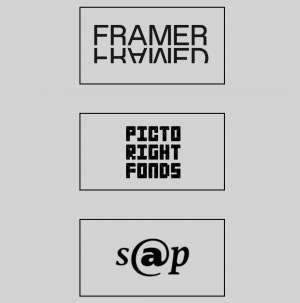
Graphic Design: Marius Schwarz
Web Development: François Girard-Meunier
Data policy and cookies
This website might use cookies placed by third parties in order to display embedded contents. Examples include (image) material that is loaded via another website, for example, a YouTube, Vimeo or Soundcloud content element. These cookies are only placed after your consent has been collected. When your consent is collected, a functional cookie is created for saving these preferences for convenience.
This website uses Matomo Analytics in order to collect anonymized basic information about website visitors in a cookieless manner (learn more). This anonymized data is stored by Nieuwe Instituut on EU-based servers, according to European Law (GDPR, General Data Protection Regulation).
This website is hosted and managed by Nieuwe Instituut. Read more about Nieuwe Instituut’s general privacy statement.
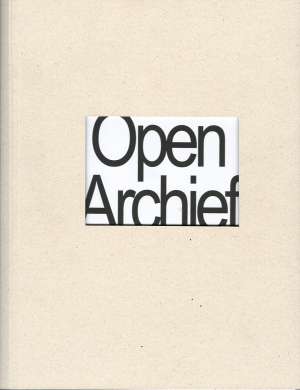
‘Open Archief – Artistic Reuse of Archives’ holds 12 essays, created by artists, curators, and researchers. The book follows three editions of the programme Open Archief (2019-2022), a multifaceted collaborative project that explores the potentials of what can be inspired by making archive materials accessible to artists for creative reuse. With contributions by Philipp Gufler, belit sağ, susan pui san lok, Paula Kommoss, Gill Baldwin, Jessica de Abreu, Pablo Núñez Palma, Michiel Huijben, Pieter Paul Pothoven, Elki Boerdam, Shock Forest Group, Femke Dekker, Alice Wong and Simo Tse. Initiated by the Nieuwe Instituut, Sound & Vision, and the International Institute of Social History. In collaboration with Stichting Archiefpublicaties (S@P)and the Pictoright Fund. Edited by Eline de Graaf, Michael Karabinos, Thijs van Leeuwen, Cees Martens and Marius Schwarz. Designed by Marius Schwarz.
With this book, we want to paint a picture of archival reuse by artists and how they relate (themselves) to archives and archival institutions. In doing so, we firstly want to demonstrate to the archival community, and anyone else, that archive reuse is co-creation. Secondly we intend to inspire readers to actively choose to work with archives: the essays in this publication provide many examples and avenues to explore. Finally the book is aimed at a wider audience interested in art and archives. We hope to offer insight into the dynamics at play between ‘archive’ and user.
The book is freely available online via Sound & Vision Publications.
A printed edition is for sale.
Open Archief is open for applications, read the Open Call here.
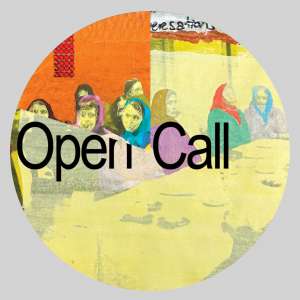
Open Archief 3 featured artists Alice Wong & Simo Tse, Remco Torenbosch and Daria Kiseleva. The participants used the open digital collections of Nieuwe Instituut, Sound and Vision and the International Institute of Social History to create a new media work in which artistic research and the creative process are central.
Alice Wong & Simo Tse
Voices and Breaths
Voices and Breaths is an audiovisual installation based on Snelle Berichten Nederland-China [Quick Messages The Netherlands-China], a Cantonese-language radio program about Dutch news and current affairs that was broadcast between 1990 and 2008. The main goal of the program was to make it easier for Chinese-speaking migrants to bond with members of their own community and build a bridge to Dutch society. The radio program was forced to end production in 2008 when the NPS (Dutch broadcasting foundation) stopped financing all non-Dutch-language programs. In retrospect, the program can be seen as an example of changing attitudes towards migrants, specifically the Dutch-Chinese, in both the decision-making class and among themselves.
During their research Wong and Tse came across a private collection of cassette tapes with recordings made by one of the former radio presenters. On the recordings you can hear him speaking and listening, as if he is trying to find his own voice. The comparison between institutionalised archives and this personal collection provides interesting insights into how stories can be recorded and retold.
Remco Torenbosch
Partai Komunis Indonesia (1914 – 1966)
Partai Komunis Indonesia (1914 – 1966) is a work that focuses on the history of the Indonesian communist party PKI. It was founded during the Dutch colonial period by the Indonesian national movement and the socialist movement in the Netherlands. With this work, Torenbosch attempts to re-archive this history, that is scantily archived in the Netherlands, as extensively as possible. His efforts underline how the socialist movement and the political party, each with a strong anti-colonial political program, contributed to Indonesian independence in 1945, and the years that followed. The PKI arose from a collaboration between Semaun and Raden Darsono Notosoedirdjo from Indonesia in addition to Henk Sneevliet and Adolf Baars from the Netherlands. Their main goal was to achieve an independent Indonesia, international solidarity, and to realize reparations for the Indonesian population from the Dutch state. The party was banned from 1927 to 1945 but later became prominent in Sukarno’s state ideology. In the years that followed, the PKI became the largest non-governing communist party in the world, until its violent dissolution in 1965-66.
In this work, Torenbosch sets out to create an image bank of digital images from archives in Indonesia, the Netherlands and other parts of the world, resulting in an image report representing both local and international contexts. The image bank reveals the active history of the PKI, and also the international political forces, which exerted constant pressure to intimidate or prohibit the party. The image bank Partai Komunis Indonesia (1914 – 1966) will eventually be available to the public.
Daria Kiseleva
Haunting Futures
Kiseleva’s video installation examines how, in the archives, imagination is reflected in utopian ideas, political fantasies and carnival celebrations. It traces the ‘haunting’ futures inside the archives and examines their material manifestations in social reality and political and cultural thought. With this, Kiseleva explores the connection between utopian ideas and social movements. By juxtaposes idealistic, modernist utopias with marginalised, feminist utopias, she speculates about whose imagination counts and whose doesn’t. The work reflects on the history of imagination from the early modern period until today, and on how power structures have tried to censor and control it. The videowork is based on documentation of carnival celebrations in the Netherlands, as an expression of the subconscious imagination and popular culture.
Kiseleva positions carnival between aesthetics and politics, utopia and commercialised enjoyment, role reversal and the status quo, and a space of emancipation and conservative tradition. By mirroring the sci-fi horror genre, which, as philosopher Rosi Braidotti says, is “ideal for depicting states of crisis and change, and for expressing the widespread anxiety of our time,” it blurs the lines between fiction and reality.
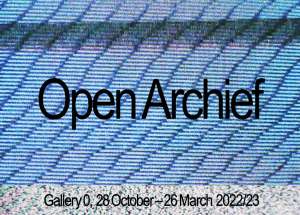
Providing open access to digital, royalty-free collections provides institutions and makers with opportunities to discover new and surprising narratives. Together with the Netherlands Institute for Sound & Vision and the International Institute of Social History (IISH), Nieuwe Instituut has organised the second edition of Open Archief, a programme that stimulates the creative reuse of digital heritage collections. Three artists – Jessica de Abreu, Michiel Huijben and Femke Dekker – have explored the three institutions’ archives guided by the theme RE:SEARCH. Moreover, the artists’ choice of socially relevant themes such as racism, discrimination, activism and democracy make it all the more urgent for heritage institutions to open up their collections in new ways. The three participating institutions are responding to this challenge through Open Archief.
Jessica de Abreu
The New Plantation
De Abreu’s project The New Plantation presents ‘counter-images’ that show that black people are more than the colour of their skin, the history of slavery and the legacy of colonialism. Her work opens up the conversation about how racism and structural oppression affect our physical and mental health. The installation explores how old, vivid memories of slavery and colonialism and the ongoing reality of institutional racism evoke a variety of emotions that can trigger post-colonial depression: a mental state in which people are aware of the colonial past but realise that it is too late to do anything about it. While exploring the relentless history of racism, De Abreu also provides a personal commentary through memories of joy and laughter in a world that frequently denies black people pleasure.
Femke Dekker
RE:ACTIVATE RADIO
Femke Dekker’s project, RE: ACTIVATE RADIO, focuses on the reciprocal relationship between the media and activism. Activists have always made strategic use of the mass media as a platform to broadcast their ideas. This project explores the notions of both mediated activism and activist media.
In the initial phase of her research in the IISH, Dekker came across the so-called ‘Staatsarchief’ (State Archive), the archive of the Dutch squatters’ and activists’ movement. It contains the vast audio archive of Radio de Vrije Keyser, which began broadcasting on 13 January 1980 from De Groote Keijser, a complex of six squatted buildings on the Keizersgracht in Amsterdam.
The archive appeals to Dekker’s interest in counterculture and represents radio’s ability to function as a call to action and as a tool for community building. In this respect, the topics discussed in the historical radio broadcasts, such as gentrification, the housing shortage and the need for grassroots activism, are just as relevant today.
In addition to providing access to Radio de Vrije Keyser broadcasts, Dekker is also producing four radio programmes that will be broadcast on the online station Ja Ja Ja Nee Nee Nee. These broadcasts reflect on the materials that Dekker has found and address the positions of the archivist as activist and the artist and activist as archivist.
Michiel Huijben
States of Place
Michiel Huijben searched the three institutions’ archives for images that reveal the role of public spaces in society. His search for places rather than events reveals a complex picture of the kinds of activities that are permitted in public spaces. The Dam Square in Amsterdam and the Malieveld in The Hague play a central role in the work that Huijben has created. Because physical access to the archives was the limited by the coronavirus pandemic, this year the archival research was conducted mainly online and was therefore limited to digital images of original archival materials. This experience was decisive for Huijben’s research and he has incorporated it within his installation for Open Archief. The work combines images from three archives with material found on the internet, and considers these as a whole to create a more complete picture of the public realm while simultaneously questioning the authority of ‘The Archive’.
Open Archief hosted an International Symposium that took place in the spring of 2021. It was a multidisciplinary event that aimed to bring together professionals from various fields (image makers, artists and professionals in the field of heritage and copyrights) and that shared knowledge and insights on the topic of artistic reuse of heritage. The aim was also to present this knowledge to a wider audience and had it critically assessed by these professionals, interested parties and institutions. The symposium was made possible through the financial support of Pictoright.
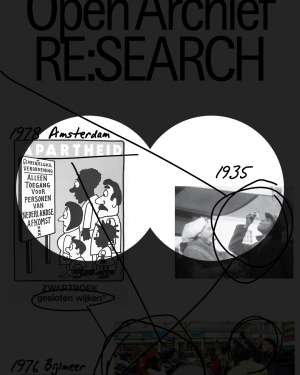
The re-use of digital collections in museums and archives generates new narratives with potentially surprising and innovative forms. In 2019 Nieuwe Instituut and the Netherlands Institute for Sound & Vision invited three media artists to create new works based on the institutions’ digital collections; artist Guy Königstein, filmmaker Donna Verheijden and artist/designer Oana Clitan have each developed a media artwork that was exhibited at Nieuwe Instituut in November 2019.
Open Archief invites media makers and heritage organisations to debate the importance of creative reuse of heritage and the accessibility of online collections. Through an open call, three makers were selected to experiment with the possibilities of digital heritage collections in creative, technological and copyright-related ways. The expertise acquired through this talent development process was shared with makers and heritage professionals in various ways.
Oana Clitan
Future news, official screen
In her project, Oana Clitan used the rhetoric of historical and current news broadcasting to speculate on how information will be presented in the future. The installation explores a scenario in which electrical devices are all damaged, so that it is impossible to produce new visual content. The only means of visual expression in this world is through scarce, salvaged archival material, which the government uses to inform citizens about the latest developments in the crisis.
Guy Königstein
Dear past, what would it take to throw you off balance?
An installation with photographs and film with spaces seemingly frozen in time, silent meeting rooms, empty staircases, dusty shelves, long corridors and closed doors. These materials provided the stage for uninvited visitors. Guy Köningstein assumed the role of one unexpected guest or harmless intruder, wandering through the archive’s maze in search of connections and ways of belonging. Opening drawers and files, he asked the question: ‘Dear past, what would it take to throw you off balance?
Donna Verheijden
The Stolen Archive
The Stolen Archive was a speculative thriller. The video installation by Donna Verheijden makes connections between the stories and events hidden in the archives of Nieuwe Instituut and the Netherlands Institute for Sound & Vision. Verheijden draws upon the collections as repositories of images, audio clips and objects that can be used as characters, props and sets.
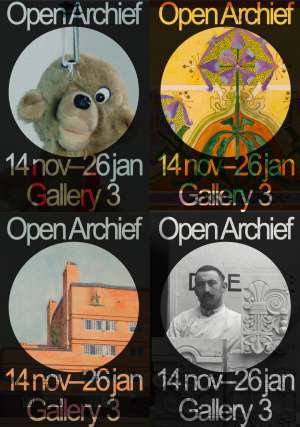
For an overview of last year’s edition, click on this video by Marit Geluk.
A digital publication about Open Archief 2019 is available here (desktop version, Dutch only).
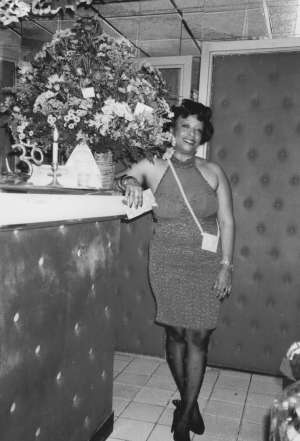
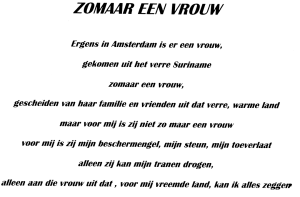
Losing a parent is something you can never prepare for. I lost my mom in the summer of 2023 at the age of 75, two years after I interviewed her for my artwork, ‘The New Plantation’, which I made for Open Archief1. The work dealt with her experience during the squatting movement in the Bijlmer - Amsterdam Southeast - in the 1970s and 80s. The squatting movement was an exciting time for her; I still remember her laughing as her memories were for the most part focused on the great times: they cooked, they danced, they shared, they squatted. If she could not dance at the revolution, she didn’t want to be part of it.2
With my dad she squatted in the Bijlmer, a neighbourhood in Amsterdam also known as the Black neighbourhood of the city. The Bijlmer was a place for Surinamese people to reclaim their rights of residence while they were largely discriminated against throughout the Netherlands. My mom was part of one of the earlier generations of squatters. The Bijlmer squatting movement is now seen as one of the first expressions of Black activism in the Netherlands3. But my mom never saw herself as an activist, rather saw herself as a person who made use of her civil rights.
The Bijlmer plays a significant part in her story, as she lived there until the end of her life. If we look at the Bijlmer through the eyes of my mother, it is more than a multicultural neighbourhood. It’s a history of resistance; it was a home for many (forced) alternative ways of living. Like many Black Surinamese womxn in the Bijlmer, my mom was more than a migrant, she was more than a squatter; like many Black mothers there is often an unknown history that is ready to be uncovered. Our (grand)mothers are living archives who have been silenced for centuries. In our Surinamese culture, it’s known that ‘mama is heilig’, our (grand)mothers are saints, they are our protectors and we always will honour their lives. Their hardships uncover their strength, their superpowers. With tears in my eyes, I am writing this piece to secure their place in our history and memories, and respect our Black mothers’ efforts to raise us, prepare us as children for a troublesome, toxic and patriarchal racist, classist society. I write to honour their choices and sacrifices, because the hardship of motherhood is often overlooked. In order to survive, my mom also became a sex worker to run her business, and from what I understood she helped other Black sex workers to perform their work.
Within the context of me working on honouring, grieving and memorialising my mother I need to allow feelings and emotions to take up more space than my rationality and ability for intellectualization. I must write less from the head and more from the heart to understand the meaning of identity and motherhood for womxn like my mom and how the Bijlmer played an essential role in the choices they made. In media and literature I miss a lot of narratives around Black sex workers, their choices and histories. And seldom did I read stories of the children of sex workers in general. Much of these narratives are probably overlooked or have been kept in secrecy because of shame or fear. It is time for me to build a new relationship with my mother knowing her role as a sex worker; and while you are reading this, you become a witness. You are now part of this journey, too.
I can write that this essay is about the politics of social and spatial segregation and how the colonial legacy in the Bijlmer was inextricably linked to her choice to become a sex worker, but also how she built the resilience to exploit and entertain a classist, racist and colonial system that was meant to overpower and keep colonised communities in their subordinated place. But the truth is – I miss my mom. And part of that intellectual stuff is true. However, for the most part I want to take you into my own personal journey of grief and honour as we go through her archives to understand the deeper meaning of why I interviewed her for ‘The New Plantation’ in the first place.
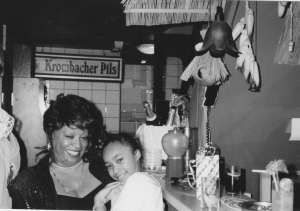
Before anything else, my mom is my hero. When she passed away, her property became her archive now that it will be all permanently moved out of her old house. It was time to clear out her belongings, and of course it was, and still is, very hard for me to throw them away. Seeing all her items brings back memories, and also the painful realisation that I won’t be able to make more memories with her. My mom was also a hoarder, which I believe was due to her traumatic experience of poverty in Suriname. At the time of its independence, Suriname was the largest colony of the Dutch colonial empire. It became economically poor, so the Dutch could become financially rich. But the colonial exploitation of my mother’s people, country and its natural resources, is something her generation never learned in school, nor did I learn much about it even at university in the Netherlands. As a hoarder, she kept everything just in case a rainy day would come. With each object I would wonder if she wanted me to put it in the trash, or what it would mean for her. In the process of grieving, you realise you might need some time before throwing stuff away. Despite it strongly contradicting my ambition for a minimalist lifestyle, I decided to put her belongings in various boxes and throw them away when I noticed I no longer care about it anymore.
In such a process, you realise what is most important to you and I decided to keep her business administration and materials that identified an unknown story that I was willing to tell the world when I was ready for it. I remembered that I asked her multiple times, do you want me to tell your story about your escort business and as a sex worker? And without a doubt, she said yes. She did not hesitate. There was much my mom could be ashamed about, but being a sex worker was definitely not one of them. As a consequence of her strong belief that sex work = work, I feel blessed to have never felt deeply ashamed about my mom’s sex work, or sexuality in general. I did sometimes feel embarrassed to speak about my mom’s work and understood that it was eventually nobody’s business until now. Although I felt the stigmas about prostitution, my mom was a very open person which made me never internalize the idea that sex work as dirty work. To me, her life shares important notions about the experience of sex work for Black womxn in the Netherlands. Sex work was a choice, but it was primarily about survival. She embodied survival, like many Black mothers in our lives.
Black sex workers are superheroes, and their secret weapon is the understanding of how a political power play on their bodies can be turned into their own gain. For Black sex workers, sex work is more than reclaiming and appropriating the female body and advocating for sexual freedom. For Black sex workers, it is also an economic escape route to (economically) benefit from a body that has been exploited for centuries. Many Black womxn, like my mother, have tried since childhood to escape the poverty once created by colonialism. My mom did not succeed in finishing school, but she succeeded in travelling to the metropole. Like many migrants, they came to understand that colonialism is actually everywhere if you are not white. There is no escape from racism and its economic oppression; it is a global problem. Our parents fled to Europe; among Surinamese people they would say “Holland is the paradise”; only to find out that in a postcolonial world Black people are still kept hostage in their place: in poverty and marginalisation. What I realised about my mom, and other Black womxn who worked with her, is that the superpower of Black sex workers is to reappropriate the system to reclaim their own economic gain. Instead of being exploited or fetishized by white m*n/people, they would demand their worth: in this case, their money and therefore their socioeconomic status which could mean they could raise their family and send their kids to school. There are a couple of things that I learned from my mom since I was a young teenager about sex work:
There is probably much more I learned from her, but this is what stuck with me all my life. Until this day, I can’t figure out if it all was toxic or not. Like I already mentioned, to join the field of sex work had nothing to do with sexual liberation for my mom, but a trauma-based decision to take care of herself and her youngest child, me. My mother would also not encourage me to enter the sex industry; it was a sacrifice which she hoped she could save me from. It shows the privilege of sex work, if it is your choice. Privilege is about having a choice and taking these choices for granted. I understood my mom’s sacrifice when I once took a walk at the Red Light District in Amsterdam, and came across a poster at a window to protest against the erasure of the area. It said, in Dutch, “My job makes sure my children are able to go to school and university”. I felt that. It was this poster that made me feel less alone. In the Netherlands, there is this saying: “being born a dime and never being able to become a quarter”. My mother’s aim was to prove society wrong; if she wasn’t able to finish school, then her children should, and we did. There are many other children who, like myself, are able to dream our dreams because of the sacrifices our parents made. We carry these sacrifices in silence, in fear, often with shame. For us as their children, sex workers are our superheroes and that should not be forgotten; they saved us from the cruelty of being at the bottom of the social ladder.
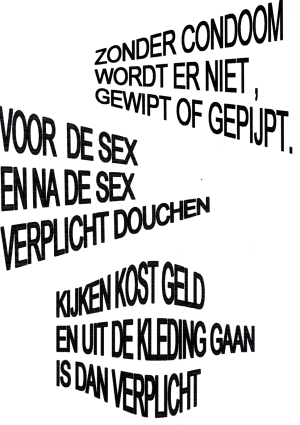
And now you probably want to know, what did my mother actually do that is so particular? I interviewed her for ‘The New Plantation’ because I knew that sex work is not the most celebrated field in our society, as it’s looked down upon, disrespected, and stigmatized. Sex work is often associated with being ‘dirty’, ‘unclean’, ‘uneducated’, ‘dangerous’, ‘being a whore’ and more. And as a family of sex workers, we often are not proud to share what comes with this world, but fortunately times change and the struggle for ‘sex work = work’ has become more acceptable. So, how would I share this part of my mother’s story with the world when it is still taboo for many people?
For me, the Bijlmer is an interesting area and great starting point to unfold this story, and understand how various systems of oppressions intersect. My mother is definitely one of the first squatters that understood how a racist society functions. She was also the eldest resident of her flat, Gravestein, which was one of the first flats to be squatted in the 1970s when it was still known as Gliphoeve. Through letters, documents and photos I was able to identify how my mother and father migrated, squatted and lived in different places in the Bijlmer.
My mom was in love with the Bijlmer until the end of her life. When it was announced a couple years ago that her flat Gravestein would be ‘renovated’, a code word for gentrification as all residents (read: all old squatters, and mostly Black citizens) had to be relocated and leave their house with a small financial compensation of 4-5,000 Euro, she refused the offer and would still refuse to leave the place that was sacred to her. It was her safe haven in times when society was not safe. I grew up in a 5-bedroom apartment in Bijlmer, which was squatted by my parents. In 2023 she paid 740 Euro, which means in past years she paid even less. In the context of the recent developments of gentrification in Amsterdam, we know the new residents will pay double or triple the amount that she paid for the house. Anyways, to keep it short: gentrification is just another cousin of colonisation which never benefits those who live at the bottom of the societal ladder. And since she migrated to the Netherlands she was quite aware how race and class interact, so making a living was always based on access and opportunity.
After ‘The New Plantation’, my aim was to interview her more and elaborate the hidden stories Black motherhood/parenthood holds: the complexities of oppression, trauma-based decisions and various tactics of survival. Black motherhood/parenthood serves as a great foundation to understand how systematic racism manifests within homes, and how resistance slowly moves into the public domain in various ways, through struggle or trying to make the best out of it.
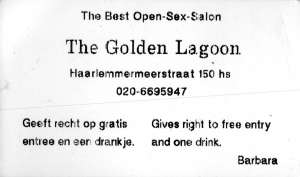
Before I delve into her archival material, I need to say that my mom never made it a secret that she owned a prostitution business in the 1990s/2000s. It was named ‘The Golden Lagoon’ and she called herself Barbara. I knew, my family knew, my school knew. There should be video material of her business from the SBS6 show ‘Sex voor de Buch’ which I am still looking for. From what I remember you would also see me as a little girl when Boudewijn Buch interviewed her at home. The Golden Lagoon was what she called an open sex salon: a massage salon, where people and couples were able to explore their (sexual) pleasures and intimacies. There was a bar, a sauna, a private room and she also sold lingerie. From what I remember from my childhood, all the womxn were Black, Indigenous, and womxn of colour and her friends, who I called my aunts. In Surinamese culture, calling someone an aunt or uncle outside the bloodline shows a level of trust, community and family-building. And, of course, for some of them, I knew their children as playmates. In my mom’s archives I also found pictures of their children which shows again that I was not alone. I wonder if they think their parents were superheroes, too?
According to her archive, she ran the business between the late 1990s and early 2000s in Amsterdam South, which is a total opposite area in comparison to the Bijlmer. South is generally known as a more upper class area. When I Google her business I cannot find any results. It’s only her archives, my memories and stories of family and friends that know about its existence. I come across plenty of photos, leaflets, newspaper advertisements, business cards, discounts cards, bar menus, notes, pens and envelopes with logos, her financial and business administration, letter communication with other sex workers, clients and her admirers. There are also music cassettes, CD’s, erotic VHS tapes and videos of the business. In the photos I was able to identify the many people who played a role in my childhood, including my dad who ran the bar. In some of these photos I see myself as a young child, smiling with my mom at The Golden Lagoon. Sex work was a trauma-based decision for my mom, but how I know her and understand her archive, she also enjoyed the field of sex work. She saw it as a form of care, she said once. I already made the decision that this archive must be anonymized, but I can say with confidence that it sure looks like they had a great time. It releases a bit of the sadness when grieving: they enjoyed the work, they loved their field, my mom looks great as ever, and I especially remember that the women who worked with my mom felt so lucky to have guidance from my mom, a Black womxn who owned her own business in that industry. When I had to announce that she was no longer among us in a physical state, many of her old sex worker colleagues and friends immediately started to cry. One of them closed her hands and prayed. I remember that she also always kissed my mother’s hands at The Golden Lagoon. For them, my mom served also as a protector so they could do their work in safety and peace.
Perhaps the Golden Lagoon served as a safe space? I wanted to know. As I delved further into the material, I never really got to understand why it had to be closed, but bits of her archive offer answers to that question. According to her youngest sister, my mom was so generous that if some womxn didn’t have any clients that night, she would still hand them over some money. I also remember a huge lawsuit between her and the landlord who raised the price of the building, making her unable to pay the rent. My mom left behind the papers of the lawsuit and in them I found a new narrative: that the building was set on fire. A newspaper article and photos confirm this. But I also wondered, what were her motives to open up this business and what would it reveal about herself? What were her experiences and stories beside everything I already know? What were her further inspirations, ambitions and dreams for her business? How did she make sense of having plenty of Black sex workers in her company? And how did they deal with the stigma and earn a living within this business? How did they give meaning to sex work? And how did she make it possible to develop an environment that made me less ashamed and think differently about sex work?
As you can see, opening her archive unfolds many more questions and narratives, asks for understanding and invites me to explore a hidden history of a Black womxn who’s a sex worker and owned a prostitution business in Amsterdam in the 1990s/2000s. The more I write about her, the more I understand the complexity of Black womxn histories: she was one of the first squatters in the Bijlmer, she was a sex worker, a businesswoman, a caretaker and much more. After writing this piece, I understand her superpower was to transform sex work into a safe place for herself and other Black womxn. Whether it was the squatting movement or the field of sex work in the Netherlands, she tried to make a home in spaces which were not always seen as a safe spaces for (Black) people. I have always felt truly loved, and with her I lost a loved one: my mom is my superhero. And if you have a great relationship with your parents, I hope you start to perceive your mom like that too: because motherhood and its sacrifices are systematically undervalued. In the face of societal and personal challenges, my mom showed levels of resilience and strength, for Black mothers carry the burden to nurture and protect their children while also navigating structural racial inequality, often by themselves.
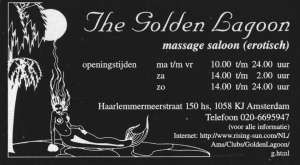
Albert Knoll: On the one hand, you have close friendships, and on the other hand, you have a responsibility for the reappraisal and the continuing commemoration. It’s quite clear that when the far-right party AFD [Alternative for Germany] says it’s time to stop remembering the crimes during the Nazi era, the neighbouring countries start to worry.
Philipp Gufler: Do you feel a certain responsibility to preserve the memories of the people you interview?
Albert Knoll: Yes, a responsibility, because I know very well that so much of queer history has been lost. Simply because no one wanted to hear it. Because nobody was willing to tell it. And it is a responsibility and a task for contemporary historiography activists to do that.1
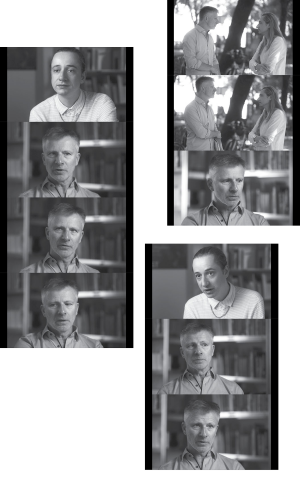
ON THE NECESSITY FOR GRASSROOTS HISTORICAL ACTIVISM
Until recently queer history was rarely collected and archived by state institutions in Europe and North America. Often the only archival records prior to the 1960s that are held in public archives are those that document police persecution and social discrimination and show the exclusion of LGBTIQ+ people from society. In Germany, Paragraph 175 criminalised same-sex love between men since the founding of the German Empire in 1871. The law was not abolished in the Weimar Republic either, where the first more visible queer movement and meeting places for LGBTIQ+ people were possible. Paragraph 175 was tightened during the Nazi dictatorship and bars, magazines and organisations like Magnus Hirschfeld’s Institute for Sexual Research, which could be considered as the first queer archive and museum in history, were banned and destroyed. Between 1933 to 1945 around 6,000 gay men and trans women were imprisoned in concentration camps where they were marked with a pink triangle. Most of them died. In West Germany, the paragraph continued to be applied after 1945 in the form tightened by the Nazis. It was no longer applied from 1969, but was only removed completely from law without replacement after reunification. A remembrance of the first queer movement before the Nazi regime in Germany was therefore only possible from the 1970s onwards, when various gay and lesbian activist communities were formed.
Self-organised LGBTIQ+ groups, autodidacts and historians such as Munich-based Albert Knoll have since made it their commitment to remember the crimes against humanity and the queer victims of the Nazi era. Since 1997 Knoll has worked at the Dachau Concentration Camp Memorial Site and is the first historian to systematically research the biographies of the 800 or more gay and trans* prisoners in Dachau. He has published on topics relating to Dachau concentration camp and the LGBTIQ+ history in Munich, including an anthology about the history of the Pink Triangle Memorial Stone in Dachau in 2015.
When the Concentration Camp Memorial Site in Dachau opened in 1965, 20 years after the liberation of the camp, Paragraph 175 still existed, so commemorating the queer prisoners was out of question. Some of the metal triangles on the memorial sculpture on the former roll-call square by Nandor Glid from 1968, which were supposed to be filled with pink tiles among others, therefore stayed empty. After Paragraph 175 was no longer applied a long-lasting fight against old prejudices, which were still alive among the survivors of the concentration camp and also among politicians, followed. From 1985 to 1995 gay groups demanded the Pink Triangle Memorial Stone in Dachau for the victims of queer prosecution, which is now on view at the Memorial Room in Dachau.2
Even before Albert Knoll worked in Dachau he started his research with a focus on self-initiated interviews with contemporary witnesses. When he studied History and German studies at Ludwig-Maximilians-University in Munich in the 1980s, oral history wasn’t yet thought of in historical science. By recording eyewitness conversations with people about their daily lives and historical events, information from different perspectives which often cannot be found in written sources can be captured for future generations. This intergenerational method is particularly important for research into queer history and Albert Knoll’s ongoing research, which is distinguished by not only focusing on the perspective of those in power.
In 2023 I realised a cinematic portrait of Albert Knoll’s decades of work. For some time now I wanted to shoot a short film about Albert and ask him why he has dedicated a large part of his life to commemorating the crimes against humanity committed during the Nazi dictatorship and what this archival work has done to him. A special focus is on his interviews with contemporary witnesses, as I am interested in how, as a conversational partner, one preserves their knowledge and experiences in a certain way after their death. After he has done so many witness interviews the last thirty-five years and was the one who asked the questions, I reversed the situation in the short film and interviewed him.
In 1999 Albert Knoll was a founding member of the grassroots organisation Forum Queeres Archiv München (FQAM) and has been on their board ever since. FQAM is part of a long line of queer archives created in Europe and North America since the 1960s. The supposedly oldest and largest queer archive is the ONE Archives in Los Angeles. They originated from the gay rights organisation ONE Inc., which began publishing ONE Magazine, the first widely published homosexual periodical in the USA, in 1953 and is today owned by the University of Southern California library.3 More archives have been established in North America and Western Europe since the 1970s with the rise of the Western LGBTIQ+ movement. In Germany, the first queer archives emerged in the 1980s: the lesbian archive Spinnboden in Berlin in 1980, the Centrum Schwule Geschichte in Cologne in 1984 and the Schwules Museum in Berlin in 1985. In Amsterdam Homodok was founded in 1978. Homodok merged with the Lesbian Archive Amsterdam and the Anna Blaman House in Leeuwarden to form the independent IHLIA in 2000 and is located at the central branch of the Amsterdam Public Library since 2007.4
Like many other community-based archives, the creation of the FQAM was an act of self-empowerment. It became a social meeting place that is not just about the safe preservation of documents. In 2013 I became an active member of the FQAM. From the start I was interested in the grassroots structure of the archive and how history and knowledge is collected differently in the organisation compared to state-run institutions. Even though the FQAM is supported by the cultural department of the city of Munich, which mainly covers the renting costs and three part-time positions, most of the archival work is done voluntarily by a diverse group of around 100 members who range in age from 26 to 85.5 Each volunteer member has their own aspirations and priorities and so the collective behind the FQAM also functions as a place for intergenerational exchange. It depends on people, groups and associations from LGBTIQ+ communities to donate thematically relevant materials to them. In return they integrate it into their archive and preserve it for future generations. Besides the archive Albert Knoll and other members of the FQAM organise queer city tours through Munich, providing a different perspective on the often invisible layers of urban culture of the past.
The founding history of the FQAM is closely linked to the beginnings of the AIDS crisis in Germany. From the very beginning, it has included the estates of artists and activists such as the writer Gustl Angstmann, who died of an AIDS-related illness in 1998. In 2013 I started my artistic research to learn more about the social and political repressions during the AIDS crisis in Germany in the 1980s and developed the video installation and accompanying artist book Projection on the Crisis (Gauweilereien in Munich) in 2014.7 Peter Gauweiler and the conservative CSU party answered the emergence of the AIDS epidemic with the most drastic and shocking proposals. The prevention of the disease was not at the forefront of their politics. Gauweiler stigmatised homosexuals, prostitutes and drug addicts as so-called risk groups and, as State Secretary to the Bavarian Minister of the Interior, sought the infamous ‘catalogue of measures’ that provided for compulsory tests and segregation.
The effects of the invisibilisation of queer history through persecution and social exclusion right up to the present day are shown, for example, by the biography of the German painter Paul Hoecker (1854 – 1910). Despite his participation in exhibitions like the second to fourth Venice Biennale and the Chicago’s World Fair in 1893 among many more, and his influence as the first modern professor at the Art Academy in Munich, his works and biography are almost forgotten today. A scandal surrounding one of his paintings forced him to resign from the professorship in 1898. Allegedly he painted a male sex worker, with whom he also maintained a private relationship, as the mother Mary. At FQAM, we formed a group in 2019 which researches his exchange with the homosexual emancipation movement around Magnus Hirschfeld and life in Italy after his dismissal from the Academy. By organising lectures and exhibitions and collection materials about his art and life at FQAM we hope to contribute to the artist’s reintegration into the cultural awareness and German’s art history.7
I dedicated one of my quilts, an ongoing series of silkscreen prints on fabric in memory to artists, writers, magazines and lost queer spaces, to Paul Hoecker. Since 2013 the series has become some form of archive of my research on queer history and is an attempt to enable a different form of remembrance culture. Though some quilts extend more into my present and refer to people with whom I was in personal contact. My motivation from the beginning was to create some kind of fragile monuments to emphasise the ephemeral nature of history and identity. The quilts, in their fragility, transparencies and textile materiality, are intended to commemorate less in an iconic way, but to allow greater complexity and contradiction in the way we retell the biographies of the people and places lost. Most recently I collaborated with the historian Albert Knoll again to develop Quilt #53 (Leopold Obayermayer). The lawyer and wine merchant Leopold Obermayer (1892–1943) was persecuted by the Nazis because of his Jewish descent and his homosexuality, imprisoned in Dachau concentration camp in 1934 and murdered in Mauthausen.
The structure of the FQAM and further research in self-organised archives influences my screen prints on mirrors and fabrics, video installations, performances, artists’ books and objects to this day. At the FQAM there are still no strictly separate areas for administration, storage and research. All functions are interlinked and the viewing takes place directly and in constant exchange with the volunteers.8 When I began volunteering at the FQAM, the book An Archive of Feelings by Ann Cvetkovich became an important point of reference for me. In the seventh chapter of the book “In the Archive of Lesbian Feelings” she reflects on the upgrowth of community-based archives in the United States like the Lesbian Herstory Archive (LHA) in New York or the GLBT Historical Society San Francisco, which both started to archive queer history in private homes in the early 1980s.
In her text, Cvetkovich compares these grassroots archives to university and state-run institutions, like the New York Public Library (NYPL), which owns different estates in their Gay and Lesbian Collections & AIDS/HIV Collections. Among others she speaks to Maxine Wolfe, a former member of Act Up-New York and longtime volunteer of the LHA:
“She [Maxine Wolfe] claims that there is no safety for gay and lesbian materials in a publicly funded institution, in contrast to the dedicated mission of LHA, where no one will suddenly decide to defund or de-accession lesbian and gay materials. Scoffing at the notion that the NYPL is a more secure location, Wolfe explained to me in her interview, ‘Let me tell you about security – it means that when there is a fire, someone wants to save your papers. At LHA, there are twenty-five women who would put lives on the line to save the stuff.’ She is a strong advocate of the independent and separatist stance of LHA, and her convictions serve as a reminder that recognition and inclusion by traditional institutions should not be the only model of success for gay and lesbian archives.”9
Community-based archives do not have to follow the same strict and sometimes illogical conservation rules as state archives, so they can generate greater visibility and accessibility. Nevertheless, the dependence on state funding and private sponsorship remains. As many queer archives have grown in the last decades they can no longer be run solely by volunteers. The conflict between professionalism and independence is growing. As radical right-wing political parties are also gaining ground in Europe and USA, the advantages of autonomous structures in queer archives seem obvious. Like all community-based archives, queer archives stay as fragile as their community and depend on grassroots historical activism of the next generations.
There is still a need for community-based archives without state control that preserve queer history in independent structures. In 2017 the Collectif Archives LGBTQI+ was formed in Paris after an appeal by Act Up-Paris. Previously, parts of the Act Up-Paris estate held by the city archive were made inaccessible for further research for data protection reasons. As their pamphlet states, “memories are dying“, therefore different activists and gay organisations formed an alliance to support an independent queer archive in the French capital to collect the legacy of LGBTIQ+ lives in Paris through oral history interviews and other means. In 2019 the city of Paris offered support to Collectif Archives LGBTQI+ on the condition that the preservation of its archives is ensured by public preservation institutions as defined by the French Heritage Code. The members of the Collectif refused to fulfil these standards. They argued that the conditions imposed in the rules would lead to a dispossession and make their archives more invisible. Currently they are relocating and are searching for funding.10
Autonomous archives do not claim the entirety of archival materials or the completeness of activist emancipation. There are also many gaps in queer archives, as they are dependent on donations and thus in some ways reflect the community and scene of their time. For instance, archival materials and historical research on queer life and culture in East Germany are still underrepresented in the archives that were founded in West Germany.11 The text “One Inc. and Reed Erickson. The Uneasy Collaboration of Gay and Trans Activism, 1964–2003” by Aaron H. Devor and Nicholas Matte12 tells the story of philanthropist and trans-health care pioneer Reed Erickson’s conflict with One Inc. and shows how transgender people were often marginalised by early gay and lesbian organisations. Materials on trans, inter and non-binary history and culture are also underrepresented in the FQAM collection. As in the queer scene in general, great efforts are still needed to take into account aspects such as origin, class, ability and religion from an intersectional perspective in order to counteract multiple discrimination.
Based on my own experiences while researching and talking to other grassroots archivists throughout Europe and the USA the last couple of years, I see the advantages but also difficulties community-based archives are facing. The friendships that have grown out of these intergenerational exchanges have strongly influenced my artistic practice and my reflection on the process of historiography. In 2021/22 the FQAM was invited by the Museum Haus der Kunst in Munich to show some of their materials in their exhibition series “Archives in Residency”. For the closing event I developed the lecture performance Cockatoo Archive with artist colleague Johanna Gonschorek.13 The costumes I designed in reference to the artist Lil Picard incorporated various archival materials and event photos from the FQAM, so in a way our bodies carry the fragile history of queer communities and the archive. In the performance, I was able to take the personal encounters and friendships that have formed my involvement with the FQAM over the past 11 years to reflect about the personal structure in community-based archives. Self-organised archives are activist places where personal and artistic access to social history is made possible. The archive objects in community-based archives are not just file numbers, but are brought back to life by archivists and users of each generation.
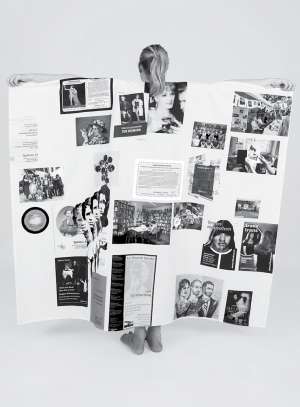
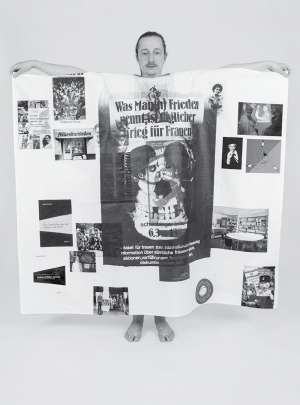
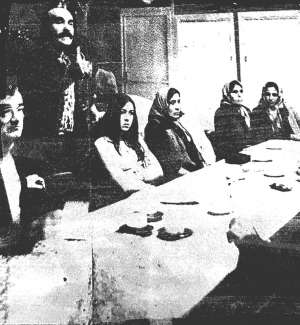
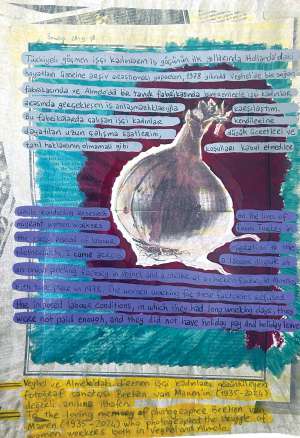
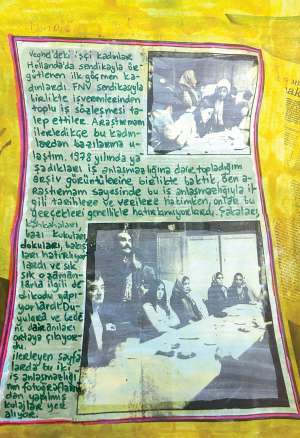
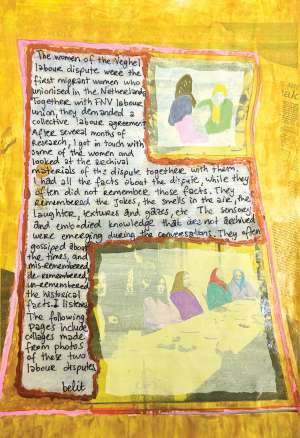
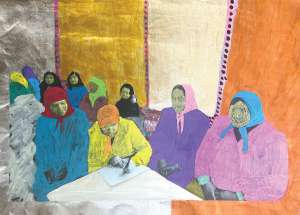
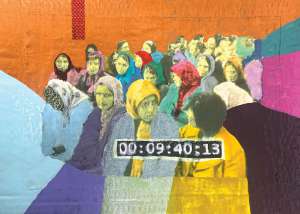
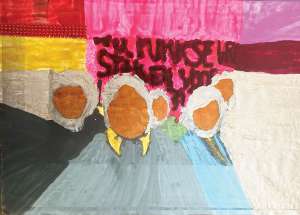
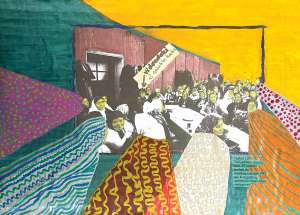
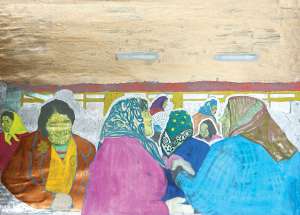
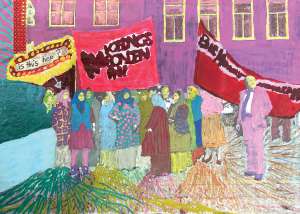
In his article Of Other Spaces, Michel Foucault talks about certain places in cultures, that exist and are formed in the very founding of society, something like counter-sites, effectively enacted utopias, within which all the other sites are simultaneously represented, contested, and inverted. He calls them heterotopias. As opposed to utopias, that are, effectively, sites with no real place, the location of heterotopias can be indicated in reality. Describing different types of heterotopias, Foucault speaks about libraries, museums and archives as spaces “in which time never stops building up and topping its own summit. […] Opposite these heterotopias, there are those linked, on the contrary, to time in its most fleeting, transitory, precarious aspect, to time in the mode of the festival.”[1] An archive and a carnival can be seen as representations of these two different types of heterotopias, in their contrasting relation to time. One of them is an immobile place of perpetually and indefinitely accumulating time, whereas the other one can only exist in its fleeting temporality. But both of them are microcosms, containing a world within a world, mirroring, inverting and subverting the ‘outside’ reality.
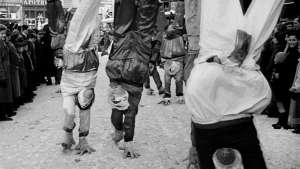
Archives are often seen as carefully curated collections, metaphors for a collective consciousness. But they also can be seen as ‘cabinets of curiosities’, where through systems of organisation, certain perceptual frameworks are revealed, and worldviews are constructed. They substantially contribute to the creation of meaning and knowledge, they project a certain accumulated worldview onto society and the future, becoming its foundation. In order to understand an archive better, we can ask questions like: Why does this archive exist? Why does it contain this item rather than another? And what is missing from the archive? After all, who decides what goes into an archive? Historically these decisions have been gendered and centred on particular ideas about what and who matters in history. Archives are always partial and biased, never complete. They are epistemological moments, rather than passive collections. The moment the objects are being archived they become frozen in a fixed position and order. As Jacques Derrida famously said in Archive Fever: “[The] technical structure of the archiving archive also determines the structure of the archivable content even in its very coming into existence and in its relationship to the future.”[2] Memory is not a storage, it requires constant reflection to keep it alive. Power is at the centre of archival work: it has the power to retain, the power to discard, the power to partially shape what is remembered and how. What do institutions remember? What do they forget? Archives are filled with gaps and silences. Being archived can prove your existence, but can your absence from the archive indicate the opposite? Another question that can be asked is, can archives be a space for envisioning a different future?
Archives undoubtedly have a strong influence on the future, as a resource for knowledge production and projection of certain worldviews. They also often contain a repository of possible futures, of yet to materialise realities, “historical alternatives that haunt a given society”[3] in the form of utopian ideas, political imaginaries, alternative communities, technological innovations and artistic and architectural projects. They can all be seen as a manifestation of different forms of imagination. Working with the archives of the International Institute of Social History (IISG), Beeld en Geluid and Nieuwe Instituut, I was interested to reflect on how manifestation of these ‘haunting futures’ influence construction of social reality and cultural and political thought. Who has the right to imagine them? And is it at all possible to think about future outside of anxiety that surrounds it?
The myth of the future, as a cultural construct built around the notion of progress, spacial idea of expansion, advancement of economy and knowledge, is rooted in the early modern period and the emergence of modern capitalism and the colonial era. The current state of a disillusionment in the future and the inability to imagine an alternative to capitalism, can be understood as a cultural logic of advanced capitalism. The future doesn’t appear to be an object of choice and a collective conscious action, but an inevitable catastrophe. To quote Rosi Braidotti: “The contemporary imaginary is impoverished and unable to think about difference outside of frame of deep anxiety.”[4] The continuous war against imagination, which according to David Graeber, “is the only war capitalists have managed to win,”[5] led to the widespread death of political imagination. And the bureaucratic and financial apparatus, created to general perpetual hopelessness, destroys any sense of possible alternative futures and shreds human imagination.
When I first started my research in the archives, I began to explore how imagination was expressed in them. In my previous research I was interested in the history of imagination as an internal sense, playing a key role in mental function, and having the power to influence reality, its political potential and subsequent censorship and control, as well as its relation to vision and representation. Working with the archives, I wanted to reflect on the power of imagination and its political dimension, on the right to imagine in the context of contemporary lack of social and political imagination, and the inability to envision a world, different from the one we currently live in. I wanted to observe the connection between memory and imagination, past and future, as they are embodied in the archives.
I began to explore the utopian collection of IISG, in order to reflect on the relationship between utopian imaginaries and social movements. At the same time, I was also looking for different manifestations of ‘imagination’ and ‘future’ through examples of technological innovation, science fiction narratives, and modernist projects. When I came across documentation of carnival celebrations in the Netherlands in the archive of Beeld en Geluid, I found carnival to be a perfect metaphor for an enacted utopia and an expression of social and political imagination. Eventually, these different elements and thoughts came together in the film, in a juxtaposition of well-known political utopian ideas, modernist utopian architectural dreams and more marginal feminist utopian narratives.
Utopia.
Utopias afford consolation: although they have no real locality there is nevertheless a fantastic, untroubled region in which they are able to unfold; they open up cities with vast avenues, superbly planted gardens, countries where life is easy, even though the road to them is chimerical.
— The Order of Things, Michel Foucault, 1966
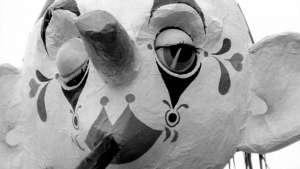
The power and impact various utopias had and are still having on reality is vast. There is a clear link between utopian ideas and social movements, and the collection of IISG is a great illustration of that connection. Their utopian collection contains books about imaginary travels, utopian communities and futuristic visions. It includes “contemporary editions spanning centuries of utopian thought and ranging from a very early reprint of More’s Utopia (1518) to works by Fourier, Saint-Simon, Cabet, Proudhon, and Owen.”[6] As one of the treasures of the collection, in a vitrine in the heart of the building, Thomas More’s third edition of Utopia is proudly displayed next to the manuscript of Karl Marx’s Das Kapital. The works of utopian thinkers inspired social movements, utopian experiments and alternative communities. Is there still potential in utopian thinking? Can it have a politically energising perspective? Can it be a radical act of philosophical speculation? One undoubtedly positive element in utopia, is that through it, the reader gets infected with the possibility of an alternative. Utopian vision of a better society relies on the engaging of imagination to see the possibilities. There is a power in seeing something that you can’t ‘unsee’. It makes you understand that the alternative is possible. The ‘naturalness’ of the world gets disrupted.
Utopian ideas are present in myths, religions and imaginaries of many cultures. But the concept of utopia is considered to be a by-product of Western modernity, with Thomas More’s Utopia (1516) being its starting point. This book is “almost exactly contemporaneous with most of the innovations that have seemed to define modernity (conquest of the New World, Machiavelli and modern politics, Ariosto and modern literature, Luther and modern consciousness, printing and the modern public sphere)”.[7] Throughout the time, utopia went through multiple transformations, and the relationship towards it kept changing. In each utopian narrative historical conditions of possibilities of these peculiar fantasies were revealed.
The questions about the practical-political value of utopian thinking and the identification between socialism and utopia, continue to be unresolved. The classical criticism of the utopian impulse is that it is impossibly distant. Utopia is anywhere but here and now, it is alternatively the ‘good place’ (‘eutopos’) and ‘no place’ (‘outopos’). But more importantly from its very origin it is based on brutality and coerced from above. To quote Ursula K Le Guin: “Every utopia since Utopia has also been, clearly or obscurely, actually or possibly, in the author’s or in the readers’ judgment, both a good place and a bad one. Every utopia contains a dystopia, every dystopia contains a utopia.”[8] Like in the case of Thomas More’s Utopia itself, which on the one hand denounced private property and advocated a form of communism, on the other hand was originally built by a tyrant Utopus on colonisation of the “uncivilised inhabitants” and creating an artificial island by “bringing the sea around them”.[9]
“There were good reasons to distrust and even dismiss the term ‘utopian’, although […] the main problem was not idealism and futurism, but rather the term’s deeply racialised historiography and narrow set of literary, aesthetic, philosophical, historical and sociological references.”[10] Feminist utopian and science fiction writers embraced the potential of the utopian genre, even though feminist utopias were quickly dismissed and moved to the margins of the discussion, into its own subfield, as a result of the the effects of structural violence on the imagination. Feminists were critical of closed-ended, top-down utopias depicting static perfection with no room for development, that rely on rigid hierarchies and coercion to maintain this order. Instead of projecting a totalising idea, feminist utopian speculative fiction, deals with imagining the future, building on the critique of the present and past. This type of the utopian writing is often also referred to as SF, which, as Donna Haraway describes it, “is that potent material-semiotic sign for the riches of speculative fabulation, speculative feminism, science fiction, speculative fiction, science fact, science fantasy—and, […], string figures. In looping threads and relays of patterning, this SF practice is a model for worlding…”[11]
Carnival.
I believe that between utopias and these quite other sites, these heterotopias, there might be a sort of mixed, joint experience which would be the mirror.
— Of Other Spaces, Michel Foucault, 1986
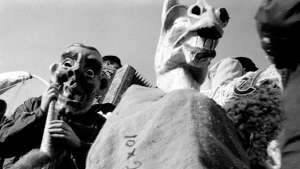
Carnivals, as much as mirrors, are real spaces that contain a ‘parallel’ world. They are enacted utopias, that can only exist in their fleeting temporality. Following the template of utopia and dystopia, heterotopia (Ancient Greek: hetero - other, another, different; topos - place, which can be translated as ‘other, different place’ or ‘a place of differences’) is a parallel space mirroring and yet upsetting what is outside. Heterotopias can be seen as spaces that make room for something politically experimental. They are spaces of and for the imagination. Foucault calls for a society with many heterotopias, not only as a space with several places of/for the affirmation of difference, but also as a means of escape from authoritarianism and repression. When I came across videos of documentations of carnivals, I saw them as a great example of a heterotopia—a microcosm, a space where imagination seemingly runs wild… A ‘reimagined’ space that at the same time allows for imagination to manifest itself. A bodily expression of a utopia.
Heterotopias are disturbing, probably because they secretly undermine language, because they make it impossible to name this and that, because they shatter or tangle common names, because they destroy ‘syntax’ in advance, and not only the syntax with which we construct sentences but also that less apparent syntax which causes words and things (next to and also opposite one another) to ‘hold together’.
— The Order of Things, Michel Foucault, 1966
Early on, carnivals were recognised as having potential to be one of those ‘disturbing’ spaces, where norms and categories could be questioned and challenged, and status quo suspended. The theory of carnival as a transgressive act of political resistance is generally said to have been pioneered by the Soviet structuralist Mikhail Bakhtin. In his study of Rabelais’s work, Bakhtin presented medieval and Renaissance carnival as a festive critique, through the inversion of binary semiotic oppositions, of ‘high culture’. This analysis contributed to carnival being conceptualised as a ritual of rebellion. “To Bakhtin, however, carnival did not simply consist in the deconstruction of dominant culture. It also eliminated barriers among people created by hierarchies, replacing them with a vision of mutual cooperation and equality. […] On a psychological level, it generated intense feelings of immanence and unity—of being part of a historically uninterrupted process of becoming. It was a lived, bodily utopianism, distinct from the utopias deriving from abstract thought, a ‘bodily participation in the potentiality of another world’”.[12] Bakhtin’s work was foundational for the field of ‘carnival studies’, which emerged in the 1970s as a combination of cultural history, anthropology, and sociology.
Carnival parades with large floats are a superabundance of symbols and meanings, a spectacle, an exhibition, a flow of monsters, fanciful characters and jokers. Many parade themes tell a visual story of recent events. It was also a custom during carnival that the ruling class would be mocked using masks and disguises. The combination of political protest and colourful party exploits the ambivalent position of carnival, between aesthetics and politics. Throughout the history of the carnival in the Netherlands, there were various moments of censorship, when either the church or the state were trying to prohibit it altogether or censor certain topics and representations. A new morality was tested, to see what was allowed. And while certain subversive types of behaviour were allowed, the total freedom and anarchy were not welcome.
“Carnival spirit with its freedom, its utopian character oriented toward the future, was gradually transformed into a mere holiday mood,” Bakhtin concluded.[13]
“By the mid-nineteenth century the change was complete: carnival culture had been relegated to the sentimental realm of folkloristic survivals.”[14] As a result of domestication, commercialization, political co-optation, aestheticization, traditionalization and institutionalisation, carnival has lost its political potential having transformed into a space of escapist fun in the form of mainstream entertainment. It has transformed into a space that reproduces hierarchies, power structures, and misrepresentations of the world they mirror, where strong sets of guarded traditions and practices often stay exclusionary, perpetuating racism and gender stereotypes.[15]
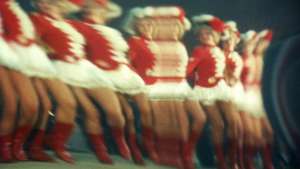
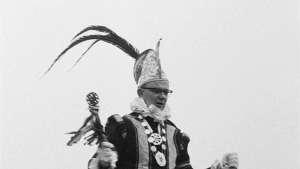
New Babylon.
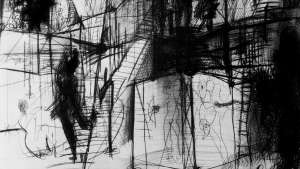
Daria Kiseleva, Haunting Futures, 2022.
The question if the nature of carnival is inherently transformative and subversive, or fundamentally conservative, divides the opinions of the scholars. Some researches see carnivals as a form of social control, arguing that its ritualised, periodic nature serves as a mechanism to dissipate revolutionary energy and maintain the status quo. Others see a possibility of carnivals to create a space for renegotiating and resisting hegemony. The rebellious potential of carnivalesque—“as a medium of emancipation and a catalyst for civil disobedience”[16]—was embraced as a cultural practice and instrumentalised during the protests by the global anarchist movement.
The element of carnivalesque was already previously used and advocated for, by the members of the Provo movement (1965-1967), as a way of provoking the authority through a playful action, in which uselessness and voluntary unemployment were contrasted with authoritarian morality. Carnivalesque, or a playful action, was also close to the philosophy of the dutch artist Constant Nieuwenhyus, whose “architectural science fiction”[17] project New Babylon (1956-1974), can be seen as an ultimate modernist utopia, based on an idea that it is possible to escape an unfree world by achieving full automation. Describing the future population as homo ludens, Constant imagined the world wide city of the future, in which the need to work is replaced by a nomadic life of creative play, a modern return to Eden. “Deeply rooted in the tradition of the avant-garde with the desire for the renewal of society, New Babylon offers a challenging proposal of a network of enormous multilevel interior spaces spreading so as to eventually cover the planet…”[18] Architecture and urban planning have always played a vital role in the utopian imagination. By the early modern period the promotion of city planning and the design of urban spaces became a means of creating and maintaining social control in utopian plans and fantasies. In More’s Utopia the world consists of uniform towns that are geometrically organised, creating an infrastructure that supports the discipline of the inhabitants. Idealised urban spaces are described in Francis Bacon’s description of Bensalem in New Atlantis (c. 1624), Charles Fourier’s phalanstère buildings and Robert Owen’s proposed communities of the early 19th century.
New Babylon contained in itself both an extreme artistic and architectural plan, and the element of carnivalesque, or playfulness, that formed his ideological vision of the construction of a ‘new man’—homo ludens. The utopian vision of liberation through play and creativity is manifested in a total abstract vision of one man, through homogenisation and elimination of differences. But New Babylon, isn’t a safe space, according to Constant. Instead it is a space of conflict. And the liberated through creativity homo luden is not liberated from aggressively and violence.
“Eventually, Constant foresaw the destructive part of his proposed environment, since the last of his drawings lay bare a site of violence and terror”.[19]
Imagination.
What revolutionaries do is to break existing frames to create new horizons of possibility, an act that then allows a radical restructuring of the social imagination. This is perhaps the one form of action that cannot, by definition, be institutionalized.
— Revolution in Reverse, David Graeber, 2011
This uniformizing ideal of progress, as it moved the western world away from nature, blinded us to the immanence of life. It also alienated us from the different futures that were not in line with the Enlightenment ideals. It is these alternative future scenarios that are becoming more feasible and necessary in the era of the Anthropocene, and which are emerging as new paths of becoming.
— Philosophy after nature, Rosi Braidotti, 2017
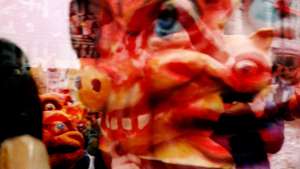
Imagination has long been a subject of philosophical debate and its power had been widely recognised. Studies in the history of imagination explore ideas about the physical force of imagination as it was understood in the early modern period. Imagination (or Phantasia) “lodged between sense perception (the realm of the objective) and memory or mind, or soul, processes perception”,[20] by means of images. Socrates likened the impression of images in the mind to imprinting seals in wax. In the period of early modernity images (in early natural science atlases) gained the power to stand for what they represented, becoming truthful records of their subjects. At the same time imagination started to be seen as one of the internal senses, playing a key role in mental function, according to the early modern medico-philosophical theories, and having the power to influence reality, forming an image-based model of cognition. Descartes attributed to imagination yet another role: an act of the will, that connected it to the practical, ethical and political dimensions of human life. It was understood that the inability to control imagination could amount to a threat to social order. What is produced in the imagination can be dangerous and subversive. Multiple thinkers warned against the dangers of imagination and the necessity to control it. Amongst them was Hobbes, who in his political treatise Leviathan (that is also often suggested to be a utopian work) posited that in order to “ensure social unity, peace and political stability, the sovereign must maintain his subjects in the state of ‘political sleep’, preventing any kind of new inputs from disturbing their imagination and by establishing a strict regime of censorship in order to combat and silence any alternative imaginaries”.[21]
An alternative understanding of imagination was proposed by Spinoza, for whom it consisted in the awareness of the bodies before us, and an individual was seen as a constitutively interdependent being, produced through and productive of its relations with other individuals. “… for Spinoza the life of the mind, and so of imaginative life, is also the life of the body. This is the first sense, then, in which imagination, as a way of thinking, is also a way of existing”.[22]
Drawing from Spinoza’s understanding of imagination, as a more embodied, relational and interdependent experience, imagination can be seen as a social praxis, as a continuous process of reinvention of the self “on a basis of what you hope you could become”,[23] and re-conceptualisation of normative categories and social, cultural and political constructs. Imagination is based in the present, drawing inspiration from past struggles and ‘alternative futures’ to work on the present, “actualising the virtual possibilities which have been frozen in the image of the past [24]. The tense that best expresses the power of the imagination is future perfect. This is the tense of the virtual sense of potential. Memories need imagination to empower the actualisation of virtual possibilities.
From this perspective I looked at the archives as repositories of possible futures of the past. In thinking about the future there is a danger of detaching oneself from the present. Therefore, Haunting Futures is rather speculating how to inhabit the troubled present, by engaging with these ‘haunting futures’, as opposed to the idealistic visions and modernist ideas, dreaming of creating a clean slate by means of destruction of the past. The film itself, just like the carnival, is a heterotopia, akin to a mirror, containing a real and a fictional image at the same time. It is both a science fiction horror and a documentary where the ghosts of the past and present come alive. It is in a constant flux, opposing the binary logic, creating a space of confusion and disrupting the possibility of a historicising logic.
His name is Chow Yiu-Fai (b. 1961, Hong Kong) and he was also given the English name John. For close to ten years, he was a radio hosts of Snelle Berichten Nederland-China, a Cantonese-speaking programme funded by the Dutch government, which was broadcast from 1990 to 2008. Before that, he was an editor for a newspaper in Hong Kong, and after that, he became an academic in cultural studies, researching topics such as young Dutch-born Chinese, creative labour, single womanhood, and ageing. In Hong Kong, he is best known as a lyricist, an identity and a profession that he carries with him to the present day. Hosting the radio show was his first form of employment after moving to the Netherlands in 1992. Chow now resides in Amsterdam, in a 3-story house built over the basement where the writer Neel Doff (1858–1942) once lived. Growing up in poverty, Doff modelled for renowned Belgian painters, and had to work as a prostitute to support herself and her family. Her first book, Dagen van Honger en Ellende (1911), was later adapted for Keetje Tippel (1975), a film directed by Paul Verhoeven. Such anecdotes of personal narratives are all small insertions into the collective memory and the history of the Netherlands, and, albeit by chance, are nonetheless lyrical.
The idea for Voices and Breathes was conceived through inter-personal encounters, and the personal narratives of Chow became the main thread of our approach in archival research. The final installation consists of three soundtracks composed of fragments collected from the Beeld en Geluid archive, our interview with Chow, and his personal collection of cassette tapes. Through weaving together audio recordings from three time periods and sources, we, as a duo of an artist and a designer, attempt to portray our impression of a person who is talented and empathetic, and was a voice familiar to many migrants with Chinese heritage [1] living in the Netherlands.
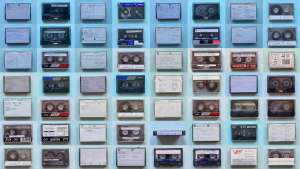
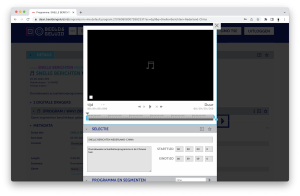
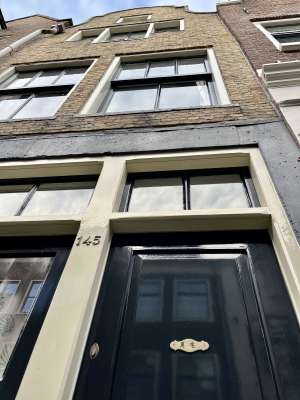
While there were only 2.5 years (2002–2004) of digital recordings available to us through the Beeld en Geluid database, Chow’s personal collection of cassette tapes (1993–1999) gave us a broader overview of how the radio programme sounded and was structured over the years. Our in-person interviews (2021–2022), in hindsight, were used as a compass navigating through the many episodes of Snelle Berichten Nederland-China, layering them with first-person accounts of the inception and the eventual cancellation of the radio show.
Snelle Berichten Nederland-China was part of the “mother tongue” programming of NPS (Nederlandse Programma Stichting), which also broadcast in Moroccan and Turkish. In the pre-satellite-TV and early internet era, this was a civic commitment by the Dutch government to facilitate cultural integration among migrants into the broader Dutch society. Many first-generation, Dutch-Chinese migrants worked in hospitality or in jobs with long hours, which allowed very little room for entertainment and recreational activities. The radio programme became part of the audio background in their workplaces, living rooms, and kitchens. Operating at different durations and frequencies, the content of the programme was multivalent: translated Dutch and international news, social announcements, electoral and tax information, interviews, and radio dramas, as well as a phone-in segment [2] in which the hosts and the listeners discussed current affairs in the Netherlands and beyond. The programme was conducted in Cantonese, a language spoken predominantly in the Southern fringe of mainland China and in Hong Kong, but could be understood by members of Chinese diasporas at different localities. Listening back to the recordings in the present day gives an intimate understanding of the lived experiences and emotional inner-lives of Dutch-Chinese migrants from 2 decades ago.
The decision to utilise a single-person account, instead of a multitude of voices, was based on the “doubleness” of Chow’s character. Being a migrant himself, hosting a migrant-oriented radio show, we have positioned him as both the speaker and the listener. The project title Voices and Breaths is coined from the phone-in segment of the programme. The immediate exchange of speaking and listening between Chow and his listeners formulates a tête-à-tête: while their migrant experiences are echoing and also bouncing off each other, he is also accommodating his speakers by listening intently. To turn the microphone around, we have also included fragments from his own interviews on other radio shows, in which he becomes the subject of interest. While listening to the radio is less of a collective activity than watching the TV or films, it is common for radio hosts to address their listeners collectively. In Cantonese, the singular pronoun for “you” is different from the multiple. And this is the same in Dutch [3]. By following a singular you, the character of Chow was reconstructed as a duo; by omitting his listeners’ responses, we scripted a dialogue within himself. Poet and writer Ocean Vuong addressed the issues of identity, and he recognised that even though our curiosity should not be bound by it, we could not escape who we are and how we are perceived. “Even if I were to write the word ‘the’, t-h-e … that is still an Asian-American ‘the’,” said Vuong. The general observation about Dutch-Chinese is they are constructed as “model migrants” [4] and as a consequence of their lack of visibility.. Refusing to abstracting himself into a checkbox nor a category, Chow also asked the question: Waarom moet het zo? Ofwel, Waarom mag het niet anders? (Why does it have to be like this? Or why can’t it be otherwise?)
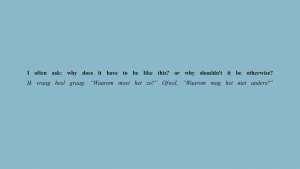
Audio recording omits as much as it contains. Without any visual clues, audio recordings appear to be more malleable than visual records. With Voices and Breaths, and its omission of visual elements, we want to bring our audience’s attention away from preconceptions. The soundtracks are mainly in Cantonese, sometimes in Dutch, and occasionally in English. If you don’t understand (any of) the languages, all you hear are voices, and perhaps breaths. And if you are patient enough, the bilingual subtitles are the only thing you can hold onto, an experience not dissimilar to that of a migrant arriving in a foreign country. The signifier of time can only be found in music: 2 Cantonese songs from the 1980s, and the Dutch song, 15 Milijoen Mensen (15 Million People). The Dutch population has now reached 17,5 million.
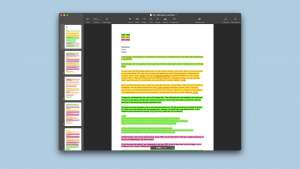
During one of our visits to the International Institute of Social History (IISG), one of the archivists described the archive as a fishbone: it may or may not include the end results (the fish’s head) but it collects strands of evidence along the way. We found that metaphor to be moving. We would like to think that artistic intervention is to bring movement to the seemingly static surfaces and logical organisation of archives. When it comes to treating a radio show as archival material, we have found that our encounter with archives, both digitally with DAAN and in analogue format with the cassette tape collection, feels more like glimpsing the shine of fish scales. From the recordings, the anonymity of the speakers and listeners who phoned and spoke on the show gives the tiniest amount of information about who they are, and in most cases, there was not enough time to dive into an informative discussion. The radio show could thus be treated as, in part, an archive of emotions and affects, ventilated by a generation of Dutch-Chinese migrants. To truly understand and reflect upon their lived experiences in the Netherlands requires much more research through the lens of historical, socio-economical, cultural, and gender perspectives. As artists and designers, working with archives is to reaffirm and to grapple with the impossibility of neutrality, as historian Edward Hallett Carr stated in What is History (1961), “no documents can tell us more than what the author of the document thought” and “only the future can provide the key to the interpretation of the past … It is at once the justification and the explanation of history that the past throws light on the future, and the future throws light on the past.” Again, our intervention is neither neutral nor formal; it was not our intention to be either. It was personal.
[1] The lineage of Chinese migration history in the Netherlands is centuries long. While the history of Indonesia is intertwined closely with its Dutch and Chinese counterparts, localities such as Hong Kong, Taiwan, Vietnam, Singapore, and Malaysia also play a significant role in the concurrent trajectories of Chinese diasporas. The concept of diaspora challenges the idea of community which is often bound with homogeneity, such as place of birth, habitation, ethnicity, language, tradition, centre, periphery, and culture.
[2]The phone-in segment is called Tùhng Sēng T’ong Hei (Same Sound Same Breath) which refers to a Chinese idiom meaning like-mindedness.
[3] For instance, when one is addressing a single person, jij or jouw can be used, whereas jullie is used for a group of people. A similar logic can also be found in Cantonese.
[4] To name one example of many, Chow quoted from an article appearing in a major newspaper, De Telegraaf, asserting that Dutch-Chinese migrants are often considered to be hard-working, and trouble- and complaint-free.
Partai Komunis Indonesia (1914–1966) is a work that focuses on the history of the Indonesian communist party (Partai Komunis Indonesia, or PKI). It was founded during the Dutch colonial period by the Indonesian national movement and the socialist movement in the Netherlands. With Partai Komunis Indonesia (1914–1966), Torenbosch attempts to re-archive this history, so scantily archived in the Netherlands, as extensively as possible. His efforts underline how the socialist movement and the political party, each with a strong anti-colonial political program, contributed to Indonesian independence in 1945, and the years that followed.
The PKI arose from a collaboration between Semaun[1] and Raden Darsono Notosoedirdjo[2] from Indonesia in addition to Henk Sneevliet[3] and Adolf Baars[4] from the Netherlands. Their main goal was to achieve an independent Indonesia, international solidarity, and to realize reparations for the Indonesian population from the Dutch state. The party was banned from 1927 to 1945 but later became prominent in Sukarno’s state ideology[5]. In the years that followed, the PKI became the largest non-governing communist party in the world, until its violent dissolution in 1965-66.
In this work, Torenbosch sets out to create an image bank of digital images from archives in Indonesia, the Netherlands and other parts of the world, resulting in an image report representing both local and international contexts. The image bank reveals the active history of the PKI, and also the international political forces, which exerted constant pressure to intimidate or prohibit the party[6]. The image bank Partai Komunis Indonesia (1914–1966) will eventually be available to the public.
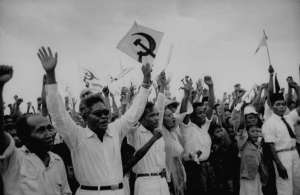
[1]
Semaun (1899 Curahmalang, Jombang, Dutch East Indies – 1971 Jakarta, Jakarta, Indonesia). In 1915 at the age of sixteen, he was elected as one of the first Indonesian members of the Union of Train and Tramway Personnel (VSTP), soon quitting his job as a railway worker to become a trade union activist full-time. At the same time, he was elected vice-chairman of the Surabaya office of the Indies Social Democratic Association (ISDV), which was to become the Indonesian Communist Party or PKI.
By 1918 he was a member of the central leadership of Sarekat Islam (SI), then the dominant nationalist political organization in the Dutch East Indies. In 23 May 1920, the Communist Party of Indonesia (originally the Partai Komunis Hindia, changed to ‘Indonesia’ a few months later) was founded after the deportation of the Dutch founders of the ISDV. Semaun became its first chairman. The PKI initially was a part of Sarekat Islam, but political differences over the role of class struggle and of Islam in nationalism between Semaun’s PKI and the rest of SI led to an organizational split. At the end of that year he left Indonesia for Moscow, and Tan Malaka replaced him as chairman. Upon his return in May 1922, he regained the chairmanship and tried, with limited success, to restore PKI influence over the sprawling SI organization.
In 1923 VSTP, the railway union, organized a general strike. It was soon crushed by the Dutch government, and Semaun was exiled from the Indies. He returned to the Soviet Union, where he was to remain for more than thirty years. He remained involved as a nationalist activist on a limited basis, speaking a few times to Perhimpunan Indonesia, a Netherlands-based organization of Indonesian students. He also studied at the Communist University of the Toilers of the East for a time. He travelled extensively in Europe, and played a role in leadership in Tajikistan in the Soviet era. He wrote a novel, Hikayat Kadirun, which combined communist and Islamic ideals, and produced a number of pamphlets and newspaper articles.
Upon his return to Indonesia after its independence, Semaun moved to Jakarta, where from 1959 to 1961 he served on a government advisory board. He was rejected by the new leadership of the PKI, and was affiliated to the Murba Party (Proletarian Party), which was opposed to the PKI. He also taught economics at Universitas Padjadjaran in Bandung. He died in Jakarta in 1971.
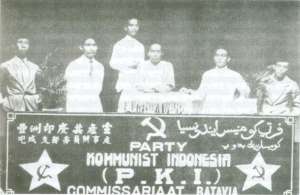
[2]
Raden Darsono Notosudirdjo (1897 Pati, Dutch East Indies – 1976 Semarang, Central Java, Indonesia). Darsono was converted to the cause of socialism when he attended the trial of Henk Sneevliet. He was impressed that a Dutch person would be willing to lose everything in order to side with the Indonesian people. He became a member of the Indische Sociaal-Democratische Vereeniging and became secretary of the Semarang branch in 1918.
The Sarekat Islam (Malay: Islamic Union) was the first mass organization of Indigenous people in the Indies, who organized themselves loosely around the identity of Islam. But the organization contained quite a lot of ideological diversity, with Islamic nationalism (led by Cokroaminoto, Agus Salim and Abdul Muis), communists (led by Semaoen, Darsono and Alimin), and a synthesis of the two by Haji Misbach. In 1918, Darsono became a paid propagandist for the Sarekat Islam and became well known for his tireless effort to drive that organization to the left. Although the leaders of the “Central Sarekat Islam” based in Batavia (Jakarta) were skeptical of the move towards communism, they appointed Semaoen to their board as well as making Darsono propagandist. For this the central organization tried to make a deal with them to not publicly split with the organization or propagandize against them. During this time he was skeptical of the Insulinde party which had been founded by E.F.E. Douwes Dekker, Tjipto Mangoenkoesoemo and Soewardi Soerjaningrat. He expressed in meetings and articles that he believed that party mainly represented Indo people and that if they came to power they would relegate native Indonesians to a subservient position.
In May 1920, Semaoen refounded the ISDV as the Partai Komunis di Hindia (Malay: Communist Party in the Indies), which 9 months later would be renamed the Partai Komunis Indonesia (PKI). At that time Darsono was still in prison in Surabaya. In October 1920 the Semarang wing of the Sarekat Islam, and Darsono in particular, came into conflict with the central group of the organization in Batavia (Jakarta). Darsono was accused of breaking the truce with the central Sarekat Islam that had been agreed upon in 1917.
From 1921-23, Darsono left the Indies to travel through Siberia to Western Europe. During that trip he represented the PKI at the third Congress of the Comintern in Moscow. After that he worked for the Comintern in Berlin. He also spoke at a congress of the Dutch Dutch Communist Party in Groningen in 1921. In that speech he called for closer collaboration between the Dutch and Indonesian communist parties in the interest of reducing racial hatred. Darsono returned to Moscow in 1922. While he was abroad the Dutch authorities in the Indies discussed that he should be treated similarly to Semaoen and not allowed to reenter the colony when he came back from Europe. However, he did manage to reenter the Indies a year later.
In 1923 the Semarang authorities and the Governor General debated whether Darsono and Semaoen should be deported from the Indies, but decided against it for the time being. Although they were aggressively organizing strikes and spreading the communist message, the authorities thought that deporting them might not change anything. During this time, Darsono was relatively moderate as a communist compared to Semaoen, in that he did not believe in the use of bombings, terror or other methods. Darsono was finally arrested in 1925 and expelled from the Indies in 1926 If he was a more moderate figure, with him and the other PKI founders gone, the party became far more radical. The ill-fated 1926 PKI revolt happened while he and Semaoen were out of the country, and even though they tried to negotiate on the Indonesian communists’ behalf with the Soviet party, they were increasingly out of touch and unable to be of help from where they were.
He returned to the Soviet Union via Singapore and China; under the pseudonym of Samin, he worked for the Comintern for a number of years. He was even elected as an alternate member of the Executive Committee of the Communist International in 1928. In 1929 he also ran for office on the Dutch Communist Party list. However, he was expelled from the Comintern in 1931. Darsono was still in Berlin in 1935 when the Nuremberg Laws were passed. At this time many communists fled Germany, but he was unable to escape for a time, and so he left his son Alam Darsono to stay with Bran Bleekrode, a Jewish violinist living in Amsterdam whose cousin Bram Bleekrode was organizing places to stay for communists fleeing Germany. However, Darsono was apparently able to rejoin his son in Amsterdam later in 1935, where he stayed for a number of years.
Upon Indonesia’s independence from the Netherlands, Darsono finally returned to the country in 1950, after twenty years of being barred from entry. He broke with his previous communist views and became an advisor at the Indonesian Ministry of Foreign Affairs until 1960. Darsono died in Semarang in 1976.
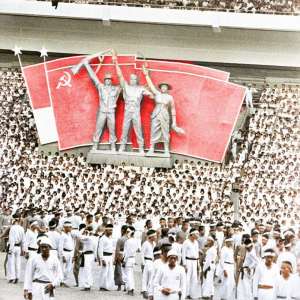
[3]
Henk Sneevliet (1883 Rotterdam, The Netherlands – 1942 Leusden, The Netherlands).
He became a member of the Social Democratic Workers Party (SDAP) as well as the Dutch Association of Railway and Tramway Employees (NV) in 1902. From 1906, Sneevliet was active for the SDAP in Zwolle, where he became the first social democrat city council member in the elections of 1907.
Sneevliet was very active in the NV and was elected to the union’s executive committee in 1906. In 1909 he was tapped as vice-chairman of the union and named as editor-in-chief of the union’s official journal. He became chairman of the union in 1911. Sneevliet, as a committed socialist and militant trade unionist, was strongly supportive of an international seamen’s strike which was called in 1911 and was disgruntled by the failure of his union and political party to support the campaign. As a result, he resigned from both organizations, joining instead the more radical Social Democratic Party of the Netherlands (forerunner of the Dutch Communist Party) and writing for the Marxist magazine De Nieuwe Tijd (The New Time).
Sneevliet’s alienation strengthened him in his decision to leave the Netherlands for the Dutch East Indies. Sneevliet lived in the Dutch East Indies (present day Indonesia) from 1913 until 1918, where he quickly became active in the struggle against Dutch colonial rule. In 1914, he was a co-founder of the Indies Social Democratic Association (ISDV), in which both Dutch and Indonesian people were active. He also returned to union work, becoming a member of the Vereeniging van Spoor- en Tramwegpersoneel, a railway union which was unique in having both Dutch and Indonesian members. Thanks to his experience as a union leader, he soon managed to turn this still fairly moderate union into a more modern and aggressive union, with a majority of Indonesian members. This union later formed the base for the Indonesian communist movement.
ISDV was strictly anti-capitalist and agitated against the Dutch colonial regime and the privileged Indonesian elites. This led to much resistance against the ISDV and Sneevliet himself, from conservative circles and from the more moderate SDAP. In 1916 therefore he left the SDAP and joined the SDP, the predecessor of the Communist Party of the Netherlands (CPN). After the Russian Revolution of 1917, Sneevliet’s radicalism gained enough support amongst both the Indonesian population as well as Dutch soldiers and especially sailors that the Dutch authorities got nervous. Sneevliet was therefore forced to leave the Dutch East Indies in 1918. ISDV was repressed by the Dutch colonial authorities.
Back in the Netherlands, Sneevliet became active in the fledgling Communist movement, becoming a salaried official of the party’s National Labor Secretariat (NAS) and helping to organize a major transportation strike in 1920. The same year he was also present at the 2nd World Congress of the Comintern in Moscow as a representative of the Partai Komunis Indonesia (PKI), which was the successor to Sneevliet’s ISDV. There Sneevliet (using the pseudonym Maring) was elected a member of the Executive Committee of the Communist International. V.I. Lenin was impressed enough by him to send him as a Comintern representative to China. Sneevliet lived in China from 1921 to 1923 and was present at the founding congress of the Chinese Communist Party in July 1921. Sneevliet was an advocate of cooperation with the non-Communist nationalist Kuomintang, headed by Sun Yat-sen, with whom he had personally established contact on behalf of the Comintern. Early in 1924 Sneevliet returned to Moscow, his tenure as a Comintern representative to China at an end.
Sneevliet returned to the Netherlands from Moscow in 1924 to assume the position of secretary of the National Labor Secretariat (NAS). He joined the executive committee of the Communist Party of Holland in 1925 but the two years were marked by worsening factional relations between Sneevliet and his co-thinkers and the bulk of the CPN leadership. The denouement came in 1927, when Sneevliet broke all ties with the CPH and the Comintern. In 1929 Sneevliet formed a new political party, the Revolutionary Socialist Party (RSP). This organization concentrated on national issues, gaining some successes in organizing the unemployed movement, strike actions, and the struggle against the rise of fascism.
He remained interested in Indonesian affairs and in 1933 was sentenced to five months imprisonment for his solidarity actions for the Dutch and Indonesian sailors who took part in the mutiny on “De Zeven Provinciën”, which was put down by an air bombardment in which twenty-three sailors were killed and which at the time aroused considerable passions in the Dutch public opinion. That same year, while still imprisoned, Sneevliet was elected a member of the Lower House of parliament, a position in which he remained until 1937. In August 1933 the RSP signed the “Declaration of the Four” along with the International Communist League, led by Leon Trotsky, the OSP and the Socialist Workers’ Party of Germany. This declaration was intended as a step towards a new 4th International of revolutionary socialist parties.
The worsening political climate both abroad and nationally and the constant struggle against both the communist and social democratic parties, as well as government interference, took a heavy toll on Sneevliet and his small organization, however. When war broke out on 10 May 1940, Sneevliet immediately dissolved the RSAP. Some months later with Willem Dolleman and Ab Menist, he founded a resistance group against the German occupation, the Marx-Lenin-Luxemburg-Front (MLL-Front). This was largely engaged in producing propaganda for socialism and opposing the Nazi occupation of the Netherlands and as such was heavily involved with the February strike of 1941.
As a known Communist, Sneevliet had to go into hiding even before he started his resistance activities. In the underground he edited a clandestine newspaper called Spartakus and took part in other activities. For two years he managed to keep out of the hands of the Nazis, but in April 1942 they finally arrested him and the rest of the MLL-Front leadership. Their execution took place just outside Kamp Amersfoort on 12 April 1942. It was reported that they went to their deaths singing “The Internationale”.
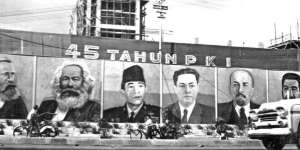
[4]
Adolf Baars (1892 Amsterdam, The Netherlands – 1944 Auschwitz concentration camp, Oświęcim, German-occupied Poland). He studied to become a Civil engineer in Delft, graduating in 1914. The college in Delft was a hotbed of student radicalism, and during his time there he joined the Amsterdam chapter of the Social Democratic Workers’ Party.
In 1914 Baars and his wife left the Netherlands for the Dutch East Indies, and Baars took up a post as an engineer in the state railway company (Staatsspoorwegen op Java) in Batavia (Jakarta) in early 1915. In December 1915 he left that position to become a teacher at the Koningin Emmaschool, a technical school in Surabaya. One student of his during this time was Sukarno, the future independence leader and first president of Indonesia. In the Indies, Baars soon became active in the Indische Sociaal-Democratische Vereeniging (Dutch: Indies Social Democratic Association), or ISDV, and in the fall of 1915 joined the editorial board of its new party newspaper, Het Vrije Woord, alongside Henk Sneevliet and D.J.A. Westerveld. The paper was one of the only Dutch papers in the Indies to have earned the respect of many Indonesians involved in the Indonesian National Awakening, first because it denounced the arrest of the radical Mas Marco in 1916, and then because it publicly opposed the Indië Weerbar campaign to establish a ‘native’ army in the Indies.
Unlike many European socialists in the Indies, Baars worked hard to learn Malay and Javanese and used this knowledge to involve himself in Indonesian nationalist politics. Thus in April 1917 he helped found another newspaper, Soeara Merdika (Malay: Voice of freedom) with Semaun, Baars and Noto-Widjojo as editors. Published twice a month, Soeara Merdika was aimed at the type of people who might read Het Vrije Woord but who could not read Dutch, and to spread Social Democratic ideals among Malay readers of the Indies. ‘The paper failed and ceased publication within its first year, but Baars and his allies launched another paper, Soeara Ra’jat (Malay: People’s Voice), in March 1918.
By October 1917 the colonial government tired of his political agitation and honorably discharged him from his teaching job in Surabaya. The final straw was when, in August 1917, he had been giving a speech in Malay at an ISDV meeting and called the colonial government busuk (Malay: rotten), and when confronted by his superiors later, did not convince them that he was repentant. The firing was widely covered in the Dutch press of the Indies; the Bataviaasch Nieuwsblad stated that Baars had defied the Government until his dismissal, so there was no need to feel sorry for him, and that he had in addition made “disgraceful” attacks on the education system in Het Vrije Woord. However, the Dutch-Indies Teacher’s Union (NIOG), in its January 1918 meeting, determined that he had been unfairly fired and proposed to give him financial support, although in the end none was given. Their declaration stated that a teacher should be able to act like any other citizen, and if his speech crossed a line into criminal sedition, it should be a matter for the police, not his employer. He was eventually offered a municipal engineering job by the mayor of Semarang, who was also a Social Democrat; this enraged the conservative newspapers in the Indies, such as De Preangerbode and Het nieuws van den dag voor Nederlandsch-Indië.
Because the ISDV was mainly an urban party, Baars and others within the movement supported the creation of rural or agrarian organizations. In 1917 this was attempted with Porojitno, which meant to organize peasants and unskilled laborers, and in early 1918 this was reorganized as the Perhimpunan Kaoem Boeroeh dan Tani (Malay: Workers’ and Peasants’ Association) or PKBT. Baars played a major role in it at first, although by 1919 it was reorganized again and came more solidly under the leadership of Haji Misbach in Surakarta. He also helped found an Indonesian socialist group in Surabaya in 1917 called the Sama Rata Hindia Bergerak (Malay: Equality Indonesia in Motion) which soon grew to match the ISDV in size. Those types of organizing efforts can be explained by Baars’ comments after the 1918 Sarekat Islam congress; he noted that the SI movement was still dominated by religious and nationalist elements, and hence he believed that separate organizations were necessary where members could be openly socialist and push for the SI to gradually take on a socialist character as well. Baars was very inspired by the events of the October Revolution and other revolutionary events in Europe. Baars became chairman of the ISDV in 1917, a position he held until 1919. The ISDV began to organize soldiers and sailors in the Indies on the Soviet example, and managed to recruit over 3000 by the end of 1917.
In early 1919, after authorities deported his ally Sneevliet from the Indies, Baars left voluntarily and returned to the Netherlands. The government would soon deport most of the other European ISDV members in the Indies, leaving the organization in the hands of Indonesians such as Semaun and Darsono. However, Baars did not have much employment or political success in the Netherlands and returned to the Indies in early 1920, once again taking up the engineering position he had been offered in Semarang. Upon his return to the Indies he was much more vocally opposed to the Indonesian nationalist movement, saying that nationalism and patriotism were the opponents of socialism.
At the ISDV’s annual meeting in May 1920, Baars was present and supported the proposal to rename the party to Perserikatan Kommunist di India (Malay: Communist union in the Indies). He wanted the party to avoid Revisionist tendencies and ally itself more explicitly with the Comintern. The motion was successful and the party was renamed. Het Vrije Woord now became the Dutch language organ of the renamed party, with Baars and P. Bergsma as editors, but due to the expulsion of many European socialists from the Indies, it apparently only had 40 subscribers by this time.
In May 1921 the colonial government finally tired of his activities and detained Baars, expelling him from the Indies on the basis of the destabilizing influence of his communist propaganda work. His recent articles in Het Vrije Woord were also cited as reasons, including one protesting the arrest of a PKI member and another describing the German counter-revolution. The Semarang municipal council, which he still worked for, objected on the basis that he had never broken any of the laws on propaganda and political organizing—he had limited himself to teaching and philosophical political writings—but that the government had ignored the law and taken advantage of its “extraordinary right” (exhorbitante rechten) to nonetheless deport him. Semaun, Baars’ longtime ally, spoke up at the same council meeting and stated that Baars’ expulsion had shocked members of their party, because of how diligently he had stayed within the bounds of the law and sought to avoid offense to anyone in recent years.
In May 1921 Baars and Sneevliet met in Singapore with Darsono and sailed to Shanghai, from where Baars and Sneevliet took the train to Moscow to attend the 3rd World Congress of the Comintern. Baars ended up resettling in the Soviet Union with Onok Sawina, becoming an engineer at the Kuzbass Autonomous Industrial Colony in Siberia. There he came into close contact with other Dutch communists who were working in the colony, such as Sebalt Justinus Rutgers and Thomas Antonie Struik. It was later alleged in the Malay press in the Indies that he separated from his wife as early as 1922 and that she was living near Leningrad. In addition to his engineering work, he became a spokesman for the colony and worked for a time as its representative in Berlin. In 1927 he worked in the blast furnaces in Stalino (now Donetsk). However, he became disillusioned with communism and left the Soviet Union for the Netherlands at the end of 1927.
Upon his return to the Netherlands, Baars started publishing books about economics from 1928 onwards. However, the book that caused the greatest stir was his 1928 Sowjet-Rusland in de practijk: Indië tot leering (Dutch: Soviet Russia in Practice: Lessons to Indonesia). In the book, which was widely publicized in the conservative Dutch press of the Indies, he maintained that he still sympathized with the colonized peoples of the Indies, but that after years of working in the USSR, he no longer though the Soviet system had the capability to emancipate them. He wrote that foreign delegates in the USSR like his former allies Semaun and Darsono had very limited social circles; they worked in an office, received foreign letters and press clippings, and lived in a hotel, knowing little about the country they were living in. These letters he sent to the Indies Dutch press summarizing his book were translated into Malay, Javanese and Sundanese by the government-funded publishing house Kantoor voor de Volkslectuur (Balai Pustaka), in the hopes that it would turn readers away from communism.
A full-length book translation was even proposed but it is unclear if the translation that eventually came out received government funding or not. Baars’ allegations about life in the USSR were received with somewhat more skepticism in the Malay press in the Indies. The Bintang Timoer speculated that he may have published it as ‘revenge’ for his poor treatment by the Soviets and that it was difficult to verify. Other Malay papers, such as Abdul Muis’s Kaoem Moeda, saw a benefit to publishing it, since it might lead people back from the “darkness” of communism.
In the 1930s, Baars worked at the Netherlands Economic Institute in Rotterdam for some time. In 1937 he officially changed his name to Adolf, the name he had gone by for most of his life. According to historian Ruth McVey, Baars became a supporter of Fascism in his final years. On May 9, 1940, the day before the German invasion of Holland, Baars divorced his third wife, Aleida Lansink. During the Second World War, Baars was deported to Auschwitz concentration camp, where he was killed on March 6, 1944.
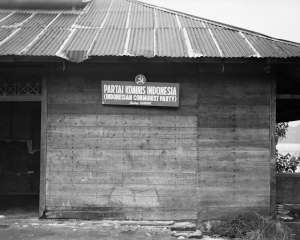
[5]
In 1960, Sukarno introduced “Nasakom”: an abbreviation of nasionalism (nationalism), agama (religion) and komunism (communism). This was intended to satisfy the three main factions in Indonesian politics: the military, Islamic groups and the communists. With the support of the military, he proclaimed “guided democracy” and proposed a cabinet representing all major political parties (including the Communist Party of Indonesia, although the latter never received functional cabinet posts).
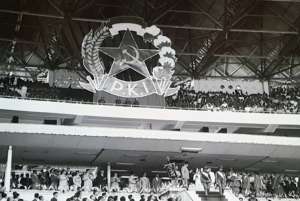
[6]
In October 1965 in Indonesia, Suharto, a powerful Indonesian military leader, accused the Indonesian Communist Party (PKI) of organizing a brutal coup attempt, following the kidnapping and murder of six senior army officers. In the months that followed, he oversaw the systematic extermination of as many as one million Indonesians because of ties to the party, or simply because they were accused of harboring leftist sympathies. He then took power and ruled, with American support, until 1998.
“How do we shape the world?” That is the question that is always on Michiel Huijben’s mind, a visual artist whose work centres around how architecture and space influence our lives. Huijben studied in Breda, Amsterdam and London, and currently lives in Rotterdam. He explains how he sees the world: “I am trained as a fine artist, but I look at everything through an architectural lens.” The question of space in a broader sense inspired Huijben to dive into the Open Archief in search for the history of the social function of public places, such as the Malieveld in Den Haag.
When Huijben used to focus on space in his artistic works, he would do so intuitively. As he reflects back on his works he says: “At one point I realized that the intuitive approach I used was not a choice. It was all I had.” That realization came when Huijben read the book Eccentric Spaces by Robert Harbison. “That book was a real eye-opener,” he declares, “Harbison discussed architecture in a different way than I did, connecting it to imagination and fiction. I started researching him, and when I discovered that he found a course in architectural theory in London, I decided to do that.”
Eight years later, Huijben finds himself doing archival research as an artist-in-residence for Open Archief. “Honestly I am overwhelmed by the amount of material that is open access.” For the exhibition Huijben plans to use a mix of moving images from the Netherlands Institute for Sound and Vision as well as scans from the International Institute of Social History (IISH) and Het Nieuwe Instituut. He describes his current state of his work: “I am making a timeline to create a story with all the material I have collected.”
Due to the Covid-19 measures, physical access to the archival institutions was very limited. Huijben completed most of his research online. “I was a bit sad about that. Online research is much more direct. You type in a keyword and it brings you exactly there. But when you are in the physical space of an archive, you can also find something by accident. Sometimes the folder you searched for contains other things as well.” Huijben also points out that digital archival research also brought practical questions to light that would otherwise not have been addressed. He exemplifies this by mentioning how the user interface works or how archival material is indexed online.
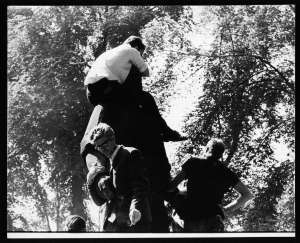
The only archive Huijben was able to visit physically was Het Nieuwe Instituut. That experience of physically being in an archival institution, gave him the intimate feeling of being close to history. “In online research you are researching representations of something, whereas in the physical archive you are looking at the object, without a filter,” he says, “when I am holding a drawing of the 1800s, then I am the link between history and present. The same goes for architecture and the city. The house in Rotterdam where I live was built in the 1940s because the city was bombed during the Second World War. That is also history persisting into the present. You could say the city and its architecture are in fact also an archive. You can read history from them, but unlike the archival institutions, they don’t come with a description.”
During his research process Huijben started thinking about the relationship between democracy, public space, and the archive. At Sound and Vision he found a silent black and white moving image from 1924, portraying a homeless couple living presumably somewhere outside Amsterdam. You can see the man making the bed in a seemingly improvised sleeping space and handing over a cup of water to the woman. “It was a haunting image. It really touched me. But what surprised me was that this was the only material I found depicting homelessness in the city. How is that even possible?”
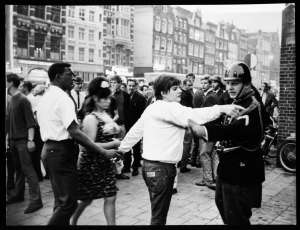
This question inevitably poses further questions on representation and whether the archive itself is a democratic space. “The archival institutions try to be. But we know that there are principles and committees who decide what is considered acceptable in the archives. People experience the city in different ways. Women’s experiences are not comparable to men’s experiences. But that is not reflected in the archives,” he points out and adds “archives are supposed to be national archives. I grew up in the countryside, but you don’t find places like where I am from represented in them. The archive is a very urban environment.”
At some point Huijben realized that he wanted to start localizing portraits of public spaces in all three archival institutions by focusing on the Dam Square in Amsterdam and Malieveld in Den Haag. “They are prototypical architectural public spaces, so the choice was obvious.” Huijben achieved that by following three trajectories. First, he researched the design process of the artists and architects involved at Het Nieuwe Instituut. Then, he tried to find moments of celebration in Sound and Vision, like the Queen’s visit to Dam Square. And finally, he searched for moments of conflict in the IISH.
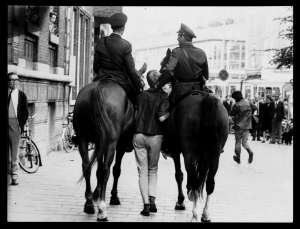
He clarifies: “I am aware that this is not a realistic portrait. The material I found is beautiful, but it is incomplete. There are lots of gaps in regular daily life between these moments.” That is why Huijben also found some material outside of the three archival institutions. “I started researching material on the internet that is free of rights. And I found footage that would make the image more complete. For example, I came across a YouTube video of a tourist filming Dam Square in a very methodical way, showing everything that was going on, just on a regular day.” Huijben thinks that this is one of the inherent problems of the archives as he says “what they focus on and what they show are rarely those non-moments. Just a regular day in someone’s regular life.”
“The Dam and the Malieveld are the places that are pronounced in the archive. And that is quite a challenge, because I don’t necessarily want to make a work about the Dam Square or Malieveld. They have been documented extensively already.” But then, how to tell a story about public spaces if some are already represented more than the others? Huijben’s experience is an illustration of the vicious cycle that many archives can find themselves in. Because when a particular place, event or person is so evident in the archives, there is inevitably more research about it which in turn creates more representation in the archives. Huijben responds: “I decided I want to make a more general story about the idea of public space. Something more general, that is not tied to specific events of conflict, celebration, or to a specific time frame. Only then, can people fill in that gap with their own imagination and feel the liberty to project what they see onto their own environment.”
During a rare moment of physical research in Het Nieuwe Instituut, Huijben stumbled upon an architectural model of the monument of Dam Square. “The architect who was in charge of the monument and the artist who made the allegorical sculptures surrounding the pillar used the model as a speaking object. It was a way for them to have a discussion on the possibilities of how the monument would look like.” Yet, what intrigued Huijben was not necessarily it’s mere function, but the idea of two men holding, touching and passing the object around the table.
Although he came across this physical object, he decided not to use it for the exhibition. The idea behind his decision was to share with the audience the same online screen experience as the artists-in-residence had while doing their research during Covid times. “We had very limited physical engagement with the archives, so I wanted to reflect that in the work itself.”
Huijben came up with the idea to show a split screen video via two upright screens. “That is how people engage with space nowadays: through their phones.” By fusing moving and still images together, he hopes to create a video essay. The model of the Dam will only be present as a moving image. Huijben describes his process: “I will film the object, so that it will still maintain its role in the exhibition. Maybe I will even show the practice of archiving and how the model is handled; it is very neatly packaged, and you have to wear gloves when you touch it.”
When looking at specific moments of protest in public space, Huijben realized that a lot of materials were not accessible due to copyright and licensing issues. “Thanks to the IISH, I came across these beautiful photographs by Maya Pejić of the Telegraaf riots in Amsterdam dating back to 1966. Pejić was a photographer and anthropologist, who was really in the crowd and not reporting from a distance. She donated her archive to the IISH, so it became license-free.”
Huijben explains how requesting licensed materials can be quite a bureaucratic challenge: “Materials by the Dutch architect Gerrit Rietveld are almost never license-free and will almost always cost you. I think that system is based on the myth of the artistic genius. As if Rietveld himself was never inspired by other artists. His work may be copyrighted, but all the intertextual materials that he drew from the other artists that also influenced him are in there as well.”
“To have been able to work with and have open dialogues with the archivists as well as with the other artists, who each have their own ways of searching through and looking at the archives were so enriching. This artist residency at Open Archief brought me a lot of inspiration for future projects and artworks.”
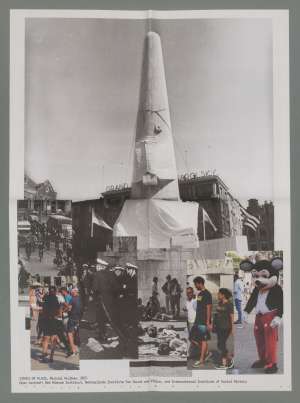
Poster from Open Archief Newspaper, designed by Marius Schwarz with Michiel Huijben
Image credits poster:
—Ben van Meerendonk, Onthulling Monument op de Dam, 4 May 1956. IISH
—Walking in Amsterdam City Dam Square July 2019 4K, 29 juli 2019, filmstills. Youtube
—Rob Mieremet, Jongelui op de Dam, Nationaal Monument, na schoonmaken, 14 August 1969. Nationaal Archief
—Bert Verhoeff, Mariniers verwijderen damslapers van het Nationaal Monument, 25 August 1970. Nationaal Archief
Femke Dekker is a curator, educator, and broadcaster who is one of the main contributors of Ja Ja Ja Nee Nee Nee, an online radio about art. In recent years her artistic practice moved from the physical to the auditive. She says: “Through Ja Ja Ja Nee Nee Nee we have necessary conversations about the field such as the precariousness of art practices or sexual and power misconduct. There are also autonomous contributions of artists doing audio collages or radio performances.” With the Open Archief residency, Dekker wants to explore the role of the archive as a catalyst for activism. Fuelled by her living conditions in the urban environment of Amsterdam, her work is inspired by the counterculture. She states: “Physical spaces for artists have been pushed outside of the city centre as a result of gentrification. With this residency, I would like to focus on squatting as a counterculture and radio as a medium.”
Do It Yourself (DIY) culture refers to the idea of believing in creating and organising things for yourself, just like squatting movements do. Coming from DIY, Dekker is drawn to the idea of Open Archief. “The purpose of the artist residency is to work with available and license-free archival material to create something new. And DIY culture is also about sharing and creating, so it made sense for me to stick to that.”
Dekker already has some experience with archival research. “This time it was more extensive, and also more challenging.” Due to the Covid-19 measures, there were some restrictions to physically visit the archival institutions. “When I finally made it into Het Nieuwe Instituut it was such a joy! The difference between searching the archives digitally and digging in the institutions physically is that in the first case you don’t know where the objects actually are or what other material is in the folder. So, when I went to Het Nieuwe Instituut, I found all these giant folders with posters, besides the ones that I asked for.”
The Netherlands Institute for Sound and Vision contains officially televised and broadcasted shows, and archives of private home videos. “That did not really fit my purpose. The squatting movement operated underground and did not use these mainstream media channels for their message. I did find national news reports of the squatting movement, where you could see how negatively the squatters were portrayed. Sometimes they were invited to voice their opinion, but the format was always fixed. That material was still helpful for my own research, but I will not use that material for the exhibition.”
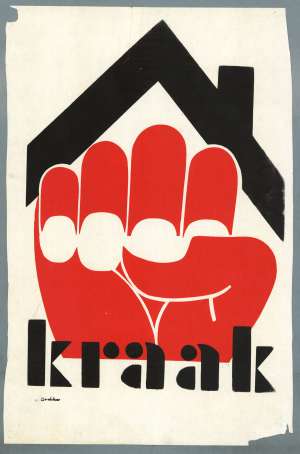
Dekker knew from the start that she wanted to work with audio. “Radio is my medium. I initially started researching archival radio materials in the broadest sense. This led me to find such items like the feminist radio show ‘Rok & Rol’ from the 80s.” But then she came across the immense radio archive of Radio De Vrije Keyser, which ran from 1980 until 1998, in the collection of the Staatsarchief, a collection of archival material about squatting which is a part of the International Institute of Social History (IISH). “They started broadcasting from the squatted complex De Groote Keijser in Amsterdam, using different FM frequencies to avoid shutdowns.” Radio De Vrije Keyser broadcasted daily and brought news on squatting and protests.
“I knew that the Radio De Vrije Keyser existed, but I never had the chance to go through their entire archive. And I never knew they broadcasted for that long. The excitement of finding their archives was huge. Through sound, I was immediately transported to 1980. It really felt like a time machine.” When she listened to an episode, in which the radio hosts were discussing what the medium of radio could mean for the movement, she immediately knew she found something precious. “That feeling when you know you found something that is going to be at the centre of your research is amazing. It was more than I could have hoped for.”
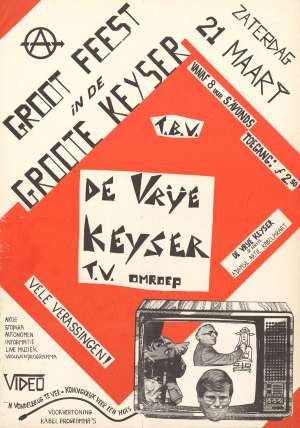
Her artwork for the exhibition will be twofold. First, Dekker plans to disclose episodes of the sound archive of Radio Vrije Keyser, consisting of the first years when they were most active between 1980 and 1986. “During this period, radio was still being developed and the radio makers were trying to navigate in a new world of broadcasting audio. And this coincided with the greatest squatting riots in Dutch history.” Second, Dekker will broadcast herself for three episodes about her research for Open Archief via Ja Ja Ja Nee Nee Nee.
In the first episode “RE:ACTIVATE: the archivist as activist” she talks with the archivists of the three institutions who helped her during the process of her research residency. In another episode, she will have an open conversation with people involved with both the squatter’s movement and Radio De Vrije Keyser in the 1980s.
“It was not easy to find them. The radio shows were illegal. The hosts operated under aliases or remained anonymous because they faced a constant threat of being dismantled or authorities tracking their physical location.” After some weeks of what Dekker calls “detective work”, she was able to identify and contact one show host called Els. “The starting point was of course the radio show itself, where some of the hosts went by their first names. But I also read Eric Duivenvoorden’s book Voet Tussen de Deur about the squatting movement, in which he talks about Radio Vrije Keyser.”
Dekker got in touch with Duivenvoorden, who gave her a couple of names. “Then it all came together when I watched the VPRO-show ‘Andere Tijden’, where they investigated the Pierson-riots in Nijmegen and they interviewed some people about Radio Rataplan. Through them and a few other connections, I was able to find Els.”
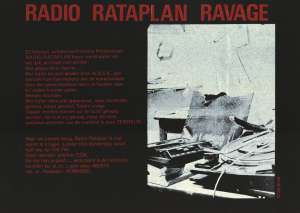
By using radio as a medium, Dekker hopes to create a form of intimacy. “After listening to hours of Radio De Vrije Keyser, I became intimate with the radio hosts. When I first emailed Els, it felt like I knew her already.” Radio is not only an activist tool but also an instrument for community building. “Maybe that is my secret agenda with this project: showing people that they can use radio and mainstream media for activist purposes.”
Yet, Dekker does not consider her work activist. “It’s a call for subversiveness maybe, but not activism.” Dekker has a history in animal welfare activism but had to take a necessary step back from activism and had some time to reflect upon it. “With Jessica [de Abreu], I had a few conversations about activism. People don’t realise that being an activist is exhausting and traumatizing. You are always with a small group of people, always by yourself, always fighting. And your call for awareness makes your opponent aggressive.” Maybe Dekker will return to activism someday, but for now, she is content with just raising questions. “That’s another reason why I felt such a strong connection to Radio Vrije Keyser. They were discussing their strategies together and often disagreed. Activism can give you a lot of positive energy, but also a lot of negative energy.”
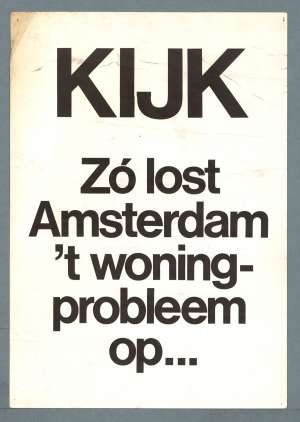
“When people think about the archives, they think about objects that are categorized and frozen in time. And by being in the archives, they have acquired the status of objectivity and impartiality.” Dekker expresses how one of the topics was also raised while talking to the archivists of the Open Archief for her first broadcast: “The previous edition of the Open Archief artist residency was about the archive as such, whereas this year’s second edition was more about the role of the archive.” For this reason, Dekker invited the archivists from the three institutions of Open Archief to have a broadcasted conversation on questions like “what is archival research?”, “who is in charge of the archive?”, “what material are they disclosing?” and “how are they telling their stories?”.
“With a renewed interest from the cultural field, where visual artists are using archives more and more in their work, I felt like that development also needed to be discussed. It was a very open talk with very experienced people. I asked them, for example, how their work has changed in the past five to ten years. They told me that now the cultural community is more involved in disclosing the archives, it helped them see the material that they have been working with for so long with new eyes.”
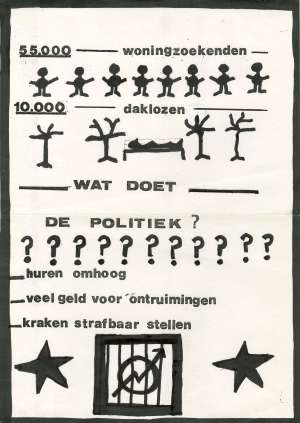
Although the focus of the exhibition will be sound, Dekker plans to also add a visual component. “I gave Marius Schwarz, the designer in charge of the exhibition, a lot of amazing posters I found at Het Nieuwe Instituut and the IISH to make a collage.” Her goal is to create the same impression as walking through a city and seeing posters of the squatting movements hanging on the walls. “There will also be sound umbrellas where you can listen to the radio episodes and see the posters at the same time.” All of the posters that Dekker selected are anonymous. “None of them are signed by the designer. That is the output of DIY culture: the message is more important than the maker. Besides, it was a form of protection because hanging those posters was an illegal practice.”
In the future, Dekker sees herself working with archives more often. “This residency really set me on a path. I will definitely continue using archival material. Maybe I will dive even more into the squatting movement.”
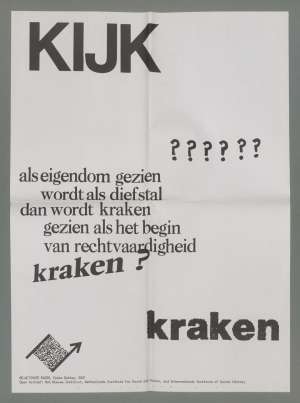
Poster from Open Archief Newspaper, designed by Marius Schwarz with Femke Dekker
Image credits poster:
—KIJK, unknown, poster detail. Staatsarchief Amsterdam, IISG BG D77/302
—??????, poster detail. Staatsarchief Amsterdam, IISG BG C20/274
—Als eigendom…, unknown, poster detail. Staatsarchief Amsterdam, IISG BG D77/293
—Kraken?, 1977-1981, poster detail. Staatsarchief Amsterdam, CSD BG D66/264
—kraken, unknown, poster detail. Staatsarchief Amsterdam, IISG BG C20/274
Jessica de Abreu is an anthropologist and co-founder of The Black Archives. Her initial goal for the Open Archief residency was to document and archive the contemporary black anti-racism movement in the Netherlands. By using materials from Open Archief as well as from The Black Archives and Kick Out Zwarte Piet, she wanted to connect institutional and personal archives of Black activists by collecting photographs, videos, and any other digital data.
However, throughout the process, de Abreu became more interested in the idea of portraying Black people in a context that is not necessarily political. “I would like to see today’s anti-racist activists laughing and making jokes instead of portraying them in constant pain or suffering.” As an anti-racist activist herself, de Abreu experienced the impact of activism on mental health firsthand. Her efforts in the Anti-Zwarte Piet movement have led to a recent burnout, from which she is still recovering. “I am known for doing social community work, but I am also a human being with emotions.” During her research for Open Archief, she was emotionally challenged.
She explains this process: “Going through the archives has been overwhelming. It forced me to explicitly deal with what I am going through in my head. I cannot grasp everything, so I have to simplify each of them. In the end, my art will be a result of me dealing with an overload of information and emotions, while trying to make sense of it all.” The main question that de Abreu finds herself confronted with is: “How do you deal with colonial imagery in archives, which is inherently violent?”
When entering keywords such as ‘Zwarte man’ (Black man) or ‘Zwarte vrouw’ (Black woman) during her online research, de Abreu found fewer results than she expected. When searching for words such as ‘Suriname’ or ‘Surinamer’, she found more material depicting Black people, but almost exclusively in a colonial context. “It was either people fighting and suffering, or people dancing and being exoticized. Images of Black people doing mundane things were difficult to find.”
During her research, de Abreu discovered that there were more human zoos in the Netherlands and Europe than she knew of. “Human zoos were places where Black people and people of colour were displayed; initially for racist scientific purposes and later for the sake of entertainment. The most known human zoo is the one at Museumplein in Amsterdam during the International Colonial and Export Exhibition (also known as the World Exposition) of 1883. And I thought – together with a lot of other people I suppose – that was the only one in this country, but I found out that there were more than I can count on one hand.”
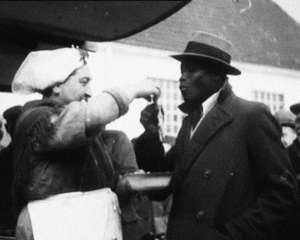
For instance, in the Netherlands Institute for Sound and Vision, de Abreu found moving images of a family of African descent, who were exposed in a human zoo in Rotterdam in 1928. “It is not just written in a book, there is actual footage of these people.” She found the video by entering a more controversial keyword. She says: “I entered the n-word in the search system and that video was one of the things I found.” With this example, de Abreu touches upon a crucial question for institutional archives: How do you make Black people visible in the archive? De Abreu further questions: “Black history is very invisible. So how do you then make Black people visible? What words do you use? How can you make them traceable without using the n-word and without being colour blind at the same time?” de Abreu does not have the answer herself yet. “I don’t think I should do all the work to find a solution. The institutions need to do their part as well.”
“How do you bring back humanity to people who have been dehumanized?” is another question that de Abreu found herself struggling with, and which created the change in the scope of her research project. In a colonial context, she explains, Black people are almost exclusively portrayed as passive beings. “That is the Western narrative, but that was not reality. Yes, colonization and slavery happened to us, but we also resisted. I want to bring that particular historical resistance to the present and make it visible.” However, that does not mean de Abreu wants to portray images of Black people fighting. “That might work for a white audience, but Black people are in need of images showing us that we are human too. How often do you see Black people without them being dehumanized? And how do you then bring back that humanity?”
With regard to the footage of the human zoo in Rotterdam, de Abreu has found two ways to humanize Black people again. “The main thing I am sure of is to search for and use the actual names of the depicted people. They were human beings, not scientific objects. Calling out their names is one way to humanize them again. I already found some of them in the subtext of the images in the archives.” Another decision that de Abreu made was not to use the actual footage in her artwork. “I am participating not only as an intellectual but also as an artist. And art always entails an element of entertainment. So, I decided to provide the information, but not reproduce the image itself. If I would do that, I would be reproducing the dehumanization of those colonized communities.”
For the final artwork in the exhibition, de Abreu plans to create a media installation titled The New Plantation. “Colonial history is still on repeat. We have undone ourselves from the shackles of slavery but are we truly free? I don’t think so. The changes are insufficient for us to live away from stress and poverty.” The installation will consist of a compilation of video material and visual images from Open Archief as well as digital data from her personal archive, such as recorded WhatsApp videos and audio voice notes. “I will also use a lot of colours in the installation. For me, colour functions as a form of therapy. Colonial history is very dark, I brought some light and colour into it. For myself.”
With her project, de Abreu hopes to open the conversation about mental health in the Dutch anti-racism movement. “Art is not just art, but an extension of me and a way to deal with the past and the present.” Though, she does give a warning: “I don’t want to hide behind my political message. I am not abstract nor subtle; I am very clear and direct. And I mean what I say.”
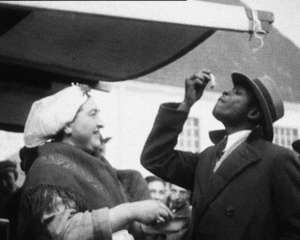
During her research in the Sound and Vision archive, de Abreu found a video of a Dutch market, where a Black man is smiling and eating a herring. He is in the frame for only six seconds, but those six seconds meant a lot to her. In her research blog for Open Archief titled “The New Plantation: A Postcolonial Depression” she describes the image as a “loving portrayal of a Black Dutch experience that soothes my memories that we are human too.” She adds: “Within this art project it was important to me to find counter images or produce counter material to make me understand that Black people are more than their skin colour, more than slavery, and more than a legacy of colonialism.” She experienced archival material of Black people doing mundane things as healing. “Resistance can come in the form of images of Black people just being happy and having pleasure in a society that continues to dehumanize and stereotype them.”
Next to the ‘fish-eating-man’ she also came across license-free images at Sound and Vision of Josephine Baker, an American-born French singer, actress, and activist who was in the resistance movement during the Second World War. “Although Baker used colonial imagery herself, she was aware of that and used it to reclaim power. In the footage, you can see her just enjoying herself and her success.”
Unfortunately, de Abreu did not find any other images besides these two which she considered healing. “And that is a problem. If this is what archives are able to produce, then that is all we can make of it. Researching the archives comes with mental challenges as there is limited material of Black people, simply living their lives outside imposed colonial frameworks, political contexts, and stereotypes. My art installation reflects a healing process, but I also see it as being part of the conversation rather than the final product.”
The fact that Open Archief focuses on archival material free of copyright and licenses was a crucial factor for de Abreu. “Most of the images I used date back to more than seventy years ago, so in most cases, they were license-free. But for new images, I had to request access, which was a bureaucratic procedure. To me, open access is important because you need accessibility in order to reach a wider audience. I want to be able to pass on what I see and learn. So, people can also look into this archival material easily themselves.”
The residency for Open Archief brought de Abreu a little bit closer to answering the question of how to bring back humanity to those who have been dehumanized. “I will let everyone see that Black people also do mundane stuff. I will show images of Black people eating fish. I will also show images of Black people loving each other and laughing, and just… being.”
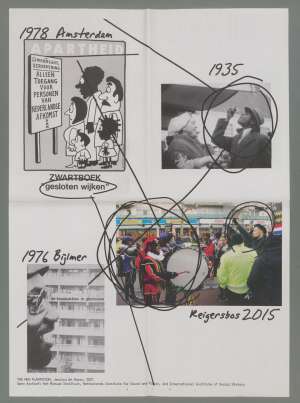
Poster from Open Archief Newspaper, designed by Marius Schwarz with Jessica de Abreu
Image credits poster:
—Man met haring, Polygoon Hollands Nieuws, 1935, filmstill. Netherlands Institute for Sound and Vision
—Zwartboek, “gesloten wijken”, 1978, magazine. The Black Archives
—Ankie de Bruijn-Muller, De kraakacties in Gliphoeve, 1976, bookcover. The Black Archives
—Jaye Brunsveld, Anti Black-Piet protest in Reigersbos, 2015. © Jaye Brunsveld
The past months Jessica de Abreu, Femke Dekker and myself have engaged with three different archives with the aim of making new works from our findings in them.
The installation States of Place began as an attempt to locate specific public spaces in these archives. I was interested in the relation between the representation of places within the archive and the actual locations, to see if the combined finds from the three archives could draw a more or less accurate portrait of such places. Portraits that would show how the design of public spaces influences our usage of them. Through the sheer abundance of material, this research grew into a wider search for the transformation of post-war public space in the Netherlands, trying to make some sense of what the archives remember of this period of transformation.
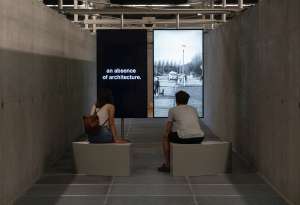
Exhibition Open Archief at Het Nieuwe Instituut, 2021, installation by Michiel Huijben. Photo: Michiel Huijben.
Archives gather history as it is being made. They keep (constantly growing) collections of materials together, and apply ordering principles to them, so that this history can be searched. The archive is physical and it is spatial to such an extent that its contents are often listed in length. For example, the Staatsarchief, the archive from which Femke compiled a series of squatters’ radio broadcasts, is described as being 63 meters in length.
63 meters is the width of several buildings. That fact alone reminds us that the archive is an actual place you can go to. After all, it needs to store things. Still, you might be forgiven for thinking of it mainly as an interface. During this project, the three of us have only been able to engage with the archives online, their front ends’ search bars.
Online, it’s so much harder to find things you’re not looking for. To be able to find, you have to search and to be able to search, you first have to define. So you sit at your keyboard, your fingers resting on the keys, the cursor blinking in the search box… but no words come to mind. Somewhere between your brain and your fingers, the terms slip through the cracks and get lost. To search like this means first to have to search for your own definitions of things, which perhaps makes it harder to find things you don’t secretly already know?
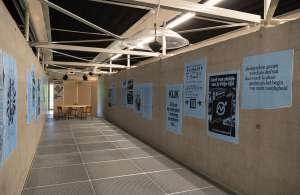
Exhibition Open Archief at Het Nieuwe Instituut, 2021, installation by Femke Dekker. Photo: Michiel Huijben.
So the question is how the archive makes things available: what terms it uses to describe and how these definitions may differ from person to person. Having a different perspective (and thus having differing explications) may render something invisible. Jessica’s project shows how this influences the relation that the archive has to visibility and representation. From the archives, she pulled video footage of (among other things) human zoos and the Bijlmer, and brought these in proximity with one another, in order to tell a story that the archive can’t, because it keeps the primary sources it stores separate from one another.
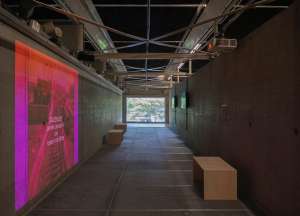
Exhibition Open Archief at Het Nieuwe Instituut, 2021, installation by Jessica de Abreu. Photo: Michiel Huijben.
Apparently, the verb ‘to define’ comes from the old French word ‘defenir’ which means “to finish” or to complete. In the presentations now on view at Het Nieuwe Instituut, all three of us ended up adding to the material found in the archives. Femke makes her own broadcasts, to contextualize the historical ones in her presentation; Jessica inserted personal video and audio into her work and I’ve used YouTube as a complementary source to build on the material found in the archives. This isn’t because there wasn’t enough material to work with (I’d say it was more like the opposite), but maybe because this is what the archive, in some ways, demands: that the only way you can get something from it is if you bring something to it yourself.
For her project RE:ACTIVATE RADIO Femke Dekker discloses a series of broadcasts from the immense audio archive of Radio De Vrije Keyser, the notorious Amsterdam based squatters radio station running from 1980 until 1998.

Radio De Vrije Keyser started broadcasting on January 13th, 1980 from the squatted complex ‘De Groote Keijser’ in Amsterdam. Using different FM frequencies in order to avoid shutdowns, the daily shows brought the local squatters-community news on squatting, protests, demos, extra- parliamentary activism and other free and alternative information.
The archive represents both Dekker’s interest in ‘Do It Yourself’ culture as well as the ability of radio to function as a call to action and as an instrument for community building. Listening to hours and hours of Radio De Vrije Keyser it struck Dekker that the topics discussed by the broadcasters resonate with today’s issues of gentrification and housing shortage (but also the need of fringe culture like the one brought about by the ’80’s squatters community to feed urban environments) and are still relevant today.
Dekker’s installation for Open Archief showcases those broadcasts from the Radio De Vrije Keyser’s archive where the conversations mainly focusses on the function of the medium ‘radio’ itself. From running and organising independent broadcasts to the malfunctioning of the record player to the need for activist actions and talks with fellow squatters broadcasters.
Besides these broadcasts from the archive, Dekker also created a series of new broadcasts that look into the role of archivists as activists, artist and activists and activists as archivists. These broadcasts are added to the exhibition over time and are broadcast live on Ja Ja Ja Nee Nee Nee.
The exhibition also contains a selection of posters found in the collections of the archives and represent the protest movement caught in amazing designs and prints by mostly anonymously makers.
For those unable to attend the physical exhibition, Dekker has created this online repository for a wider audience to enjoy the broadcasts selected from the archive.
All the Radio De Vrije Keyser broadcasts are in Dutch. The broadcasts produced by Dekker herself for Ja Ja Ja Nee Nee Nee are in English.
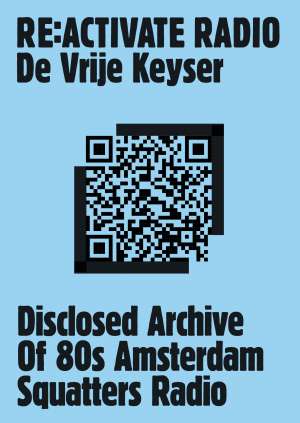
Selection:
01 Vrije Keijser 10e uitzending (BG GC10 519)
02 Kant A Origineel Bloemstraat (BG GC10 575)
03 Gesprek met illegale radio (050282)
04 Discussie kraakmedia VK FJK. Jo van der Spek (BG GC10 587 a)
05 Discussie kraakmedia VK, FJK. Jo van der Spek (BG GC10 587 b)
06 Vrije Keijser Interview met Jeanne Tromp-Meesters (290780 BGGC10 518 a)
07 Radio de Vrije Keijser media discussie (BG GC10 585 a)
08 Radio de Vrije Keijser media discussie (BG GC10 585 b)
09 Radio de Vrije Keyser 14 mei 81 Bezetting Radio Stad (BG GC10 547 a)
All broadcasts were found in the archives from the International Institute of Social History
RE:ACTIVATE RADIO is a project by Ja Ja Ja Nee Nee Nee contributor Femke Dekker and focusses on the reciprocal relationship between media and activism and discloses the strategies used to reinforce and exploit each-other’s mechanisms.
As a part of Open Archief RE:ACTIVATE RADIO equally investigates the relation between archives and activism and will involve the archives of all three participating institutes.
RE:ACTIVATE RADIO ‘The Archivist as Activist’ is an open dialogue with Clara Still-Haardt (Archivist, HNI), Eric de Ruijter (General Manager Collections, IISG) and Erik Lucassen (Archive Researcher, B&G), discussing their various roles within the collection of their respective institutes, the renewed interest in archives in general and how or if activism comes into play.
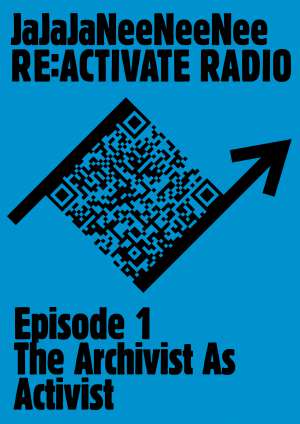
The first episode of RE:ACTIVATE RADIO by Femke Deker.
Date of broadcast: 30-04-2021, 13:00
Location: The Netherlands Institute for Sound and Vision
Host: Femke Dekker
Producer: Monty Mouw
Length: 90 min
Language: English
Link to Livestream
Link to archived Radioshow
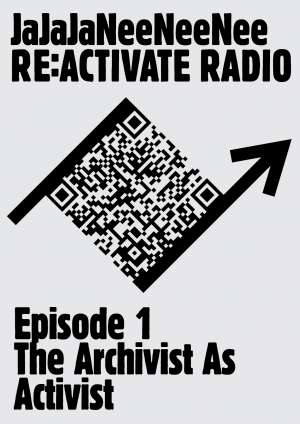
The first episode of RE:ACTIVATE RADIO by Femke Deker.
“The archivist as activist: It is impossible not to be struck by the symbiotic relationship between the archivist and the activist – two roles that are fully dependent on each other. Activism generates archives, archives generate activism – and so forth.”
Experimental Jetset (2018)
RE:ACTIVATE is a project by Ja Ja Ja Nee Nee Nee contributor Femke Dekker and focusses on the reciprocal relationship between media and activism and to disclose the strategies used to reinforce and exploit each-other’s mechanisms. Part of Open Archief - a multifaceted, collaborative research project that makes archival material accessible to artists for creative reuse - RE:ACTIVATE equally investigates the relation between archives and activism and will for the period of residency involve the archives of all three participating institutes. The archives affiliated with Open Archief are Het Nieuwe Instituut (HNI), The Netherlands Institute for Sound and Vision (Sound and Vision), and the International Institute of Social History (IISH).
RE:ACTIVATE ‘The Archivist as Activist’ is an open dialogue with Clara Still-Haardt (Archivist HNI), Eric de Ruijter (General Manager Collections IISG) and Erik Lucassen (Archive Researcher B&G), discussing their various roles within the collection of their respective institutes, the renewed interest in archives in general and how or if activism comes into play?
Image: Re:Activate logo by Marius Schwarz
The “Nieuwe Plantage” (New Plantation) shows how history seems to be on repeat. Where we often think that racism, colonialism, and imperialism is a thing of the past, its legacy can be found in poverty, social inequality and human right violations in present-day societies. My aim is to open the conversation about how racism and structural oppression are related to our (mental) health. This underlying conversation is not much found in the actually art piece, but in the approach and process on how to deal with realities of racism and xenophobia as we enter archives, museums and exhibitions. How do we deal with archival material that reproduce (colonial) violence, despite the fact that we consider them as educational and informative about hidden histories?
Answers can be found in how society is divided: those who do remember colonial history, and those who do not and feel traumatized by it. It is a fact that Black people experience racism on a daily basis. However, we don’t always have the time and space to heal from such violent events. Additionally, societies often ask victims of racism, rape and trans-/homophobia and more to also come with solutions to these problems. Often they are asked to do this emotional and intellectual labor without being paid for their time, knowledge and experience while they are also vulnerable at the bottom of the social ladder. Experiencing social inequality besides these human right violations is a headache, to say the least.
I refer to postcolonial depressions when one realizes that colonialism happened and there is nothing they can do about it. Some find that activism can serve as a great way to tackle these institutional problems. However activism also expose us to (continuous) stress and trauma. In this context, art can provide a space for postcolonial healing. Within this art project it was important to me to find counter images or produce counter material to make me understand that Black people are more than their skin colour, more than slavery and more than a legacy of colonialism. The only way to take back our humanity is to show we are not passive beings as colonial history tried to portray us, but that there has always been resistance.
Polygoon Hollands Nieuws 25 november 1935, Nederlands Instituut voor Beeld en Geluid (beheerder), “01:34, www.openbeelden.nl
The “Nieuwe Plantage” is about showing resistance against dehumanization on these new plantations. We might perceive resistance as pro-active deeds as demonstrations and protests but we should also remember that resistance can come in the form of images of Black people just being happy and having pleasure in a society that continues to dehumanize them. And why not also on film, in the archives? Despite my periods of postcolonial depressions, I take great joy in seeing Black people smile on camera, in archives. During archival research, I was lucky to encounter a Black man in the Netherlands enjoying his herring in this filmpiece at 0.35 – 0.41 min. It is a glimpse of his daily life in 1935 when Black people were exoticized. However, I also embrace this loving portrayal of a Black Dutch experience that soothes my memories that we are human too.
RE:ACTIVATE, the working title for my project, focusses on the reciprocal relationship between media and activism and to disclose the strategies used to reinforce and exploit each-other’s mechanisms. Activists have always used mass media strategically, as a platform to broadcast their ideas and my project will explore both the notion of mediated activism, and the notion of activist media.
Over the past few years, my artistic practice has moved from curating the physical towards a practice of interpreting contemporary themes through conversations, and the production of autonomous sound collages, using radio as my main medium and collaborative initiatives as my main method. For RE:ACTIVATE sound will function as the carrier to both document the process of the research as well as to formulate the outcome of the residency.
During the initial phase of my research I stumbled upon the collection of the Staatsarchief at the IISG, founded in 1991 in the Amsterdam neighbourhood ‘Staatslieden’, hence the name of the archive. In total, the archive covers some 90 linear meters of paper, about 6000 posters, 1500 photographs and hundreds of hours of videotapes and audiotapes. Amongst them, the immense audio archive of Radio de Vrije Keyser, running from 1980 until 1998.
Radio de Vrije Keyser started broadcasting on January 13th, 1980 from the squatted complex ‘De Groote Keijser’ in Amsterdam. Using different FM frequencies in order to avoid shutdowns, the daily shows brought the local squatters-community news on squatting, protests, demos, extra-parliamentary activism and other free and alternative information. The shows hosts operated under aliases or remained anonymous, as is apparent in the broadcast presented here.
Documented is a conversation between Radio Rataplan - another squatters station based in Nijmegen - and two broadcasters from Radio de Vrije Kyser. Radio Rataplan came to national fame as the mouthpiece of the Nijmegen squatters’ movement, during the Pierson riots in Nijmegen in February 1981. The riots were among the heaviest squatter riots of the 1980s and Radio Rataplan was on air 24 hours a day, playing a central, directing role in the preparation and execution of the actions.
The conversation of the broadcast you can listen back to here, centers on the role of radio as a catalyst for activism and must have been recorded prior to the Pierson riots, although the archive lists the broadcast as recorded in 1982 - the year after the riots took place. But as is evident from this Dutch spoken broadcast, the riots had not taken place yet and the interviewers are clearly discussing possible strategies and the role radio could play, with their interviewees from Radio de Vrije Keyser.
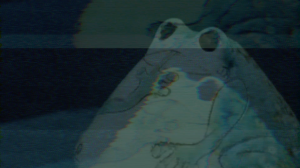
The final installation is set in a dystopian future after an event called The Great Blackout, when electrical devices were greatly damaged and things we now take for granted are suddenly not available anymore. Among these, the production of new visual content is momentarily not possible since cameras and phones were also damaged. The country is ruled by The Institute, whose scientists managed to barely restore some screens and footage. In order to keep the people up to date with new developments, The Institute has set up news stations consisting of clusters of restored screens, where the news is being broadcasted. However, the form of news has changed in this future, the news anchors are normal citizens discussing different aspects of this unstable situation. The installation is one of these news stations where visitors can hear news about The Blackout from six citizens.
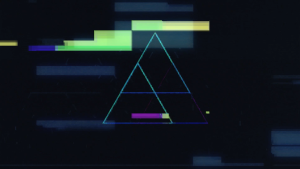
The project uses past and present news rhetorics to make a speculation about how information will be presented in the future - and by whom. It is essentially an extension of post truth, an exaggeration of today’s tendencies, transplanted to a future with a society in an unstable situation: facts are replaced by opinions, appeals to rationality are replaced by appeals to emotion. Another theme I found very interesting to explore is the relationship between government and media outlets, as informed by research in the archives of the past.
Looking back at the process, my project changed quite a bit from my initial proposal, which is a pleasant surprise, a sign that I let myself explore and had the freedom to follow certain interesting threads that appeared along the way. In general this project has a lot of ‘firsts’ for me (for example first time working with video and trying to develop an actual narrative) and I definitely say it was a very interesting process. In the future I plan to pick up some threads I didn’t follow yet and see where they lead!
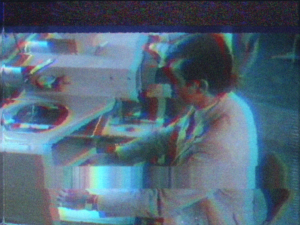
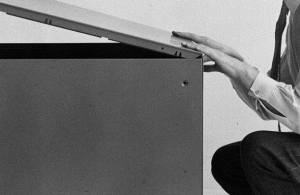
The ghost from the last chapter is not a terrifying one: it is no one else than myself. The abandoned black and white stages waited too long, thus I finally carve through their two-dimensionality and walk in - an uncalled guest. I take part in endless meetings, open drawers and water plants, knock on heavy doors and climb up yet another staircase to - where?
I leave no traces behind, but an echo: hesitant murmurings, human mooing, underwater breath taking, counting in an unrecognisable language, shattered porcelain.
Recorded, these voices and sounds constitute my parallel archive, paired with the original photos of empty spaces I collected in the last months in the National Architecture Archive. It is the gap between these two archives - between presence and absence, between institutional and personal, between still and moving, between silence and sound, between historical and contemporary - that I find most interesting. And this is where I invite you to come in, linger, watch and listen, and make up your own part in it.
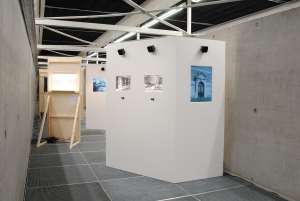
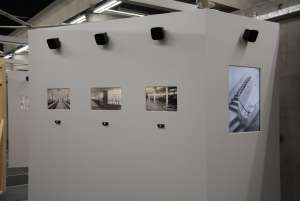
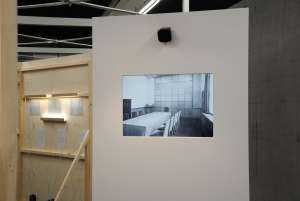
In de jaren ‘50 heeft er een ontmoeting van Het Genootschap plaatsgevonden op het Vuurtoreneiland in het IJmeer. Daar heeft men een verbond gesloten. Nu, 60 jaar later krijgen Qamilla en Arianna de opdracht van Het Genootschap een aantal archiefstukken te ontvreemden uit verschillende Rijksarchieven. De stukken moeten op 2 januari 2022 openbaar gemaakt worden.
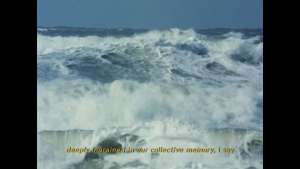
De thriller The Stolen Archive wordt in Het Nieuwe Instituut vertoond in de vorm van een video-installatie. We volgen Qamilla en Arianna op hun zoektocht door verschillende Staatsarchieven. De hoofdstukken worden vertoond op diverse monitoren.
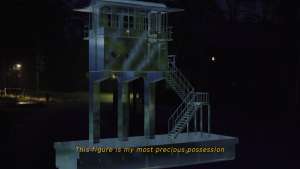
De maquettes verwijzen naar twee gebouwen die als ontmoetingsplek dienen tijdens belangrijke gebeurtenissen. Het mensfiguurtje, gemaakt door Lida Licht-Lankelma (collectie Het Nieuwe Instituut), dat op zaal te zien is in Het Nieuwe Instituut, speelt een cruciale rol in het verhaal. De fragmenten van filmrollen uit de collectie van het Nederlands Instituut voor Beeld en Geluid en de maquettes en objecten uit de collectie van Het Nieuwe Instituut geven ruimte om te speculeren; wat ligt er opgeslagen, wat voor verhalen liggen er? We zien stapels filmrollen en in elk blik zit weer een ander verhaal. Achter de façade van elke maquette en gebouw schuilen misschien onwaarschijnlijke en niet eerder vertelde gebeurtenissen.
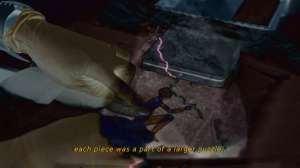
De bezoekers kunnen de cijfers volgen die op de sokkels aanwezig zijn, maar is ook van harte uitgenodigd zelf de volgorde te bepalen waarop ze het verhaal tot zich nemen!
Having made several new experiments, I think I am slowly able to formulate a “method” for creating my “collection” – a series of small works, based on (but not interfering with) archival materials, that are personal (but not naïve), political (but not provocative), diverse (but not representative), actual (but also historical), non-narrative (but not boring), confused (but not senseless) …
Guy Königstein, Negotiation, 2019. Based on a fragment from Bijenmarkt, Polygon-Profility, 1951, Creative Commons – Attribution-Share Alike
Guy Königstein, His/story, 2019. Based on a fragment from Hoe werkt de postcheque en girodienst?, Polygon-Profility, 1976, Creative Commons – Attribution-Share Alike
At the moment I concentrate on photographs from the different architects’ archives of Het Nieuwe Instituut. During the visual research I encountered several “typologies” of completely empty spaces that repeatedly appear in the archives: for instance large staircases, diverse meeting and conference rooms, entrances (corridors and doors), as well as intimate interior settings (in private and semi-public spaces).
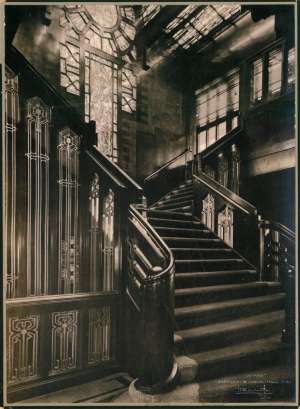
In my eyes often culturally symbolic, these empty spaces seem to provide a stage – though not necessarily an accessible one. I cannot simply enter them (technically- they are two dimensional; legally- their copyrights are not clear; historically- they are of a time passed, etc.). So, since I cannot – and do not want – to inhabit them, the question arises: what does it take me to pass through these spaces?
Guy Königstein, Decision-making, 2019. Based on a fragment from Demonstratie tegen uitbreiding ultra centrifuge fabriek, Polygon-Profility, 1978, Creative Commons – Attribution-Share Alike
The black-and-white “monumentality” invites a “minor” action – and I think that I might have found an answer in the present-absent figure of the GHOST …
The last weeks I’ve been working on defining my story about a dystopian future, which my final work will be about. I’ve been writing things down, connecting ideas and writing small scripts. One big realisation was that all the small themes I wanted to touch (that I mentioned in the last blogpost) were mostly summed up by one idea – post-truth.
In short, my work will be set in a near future where an event has happened and, as a consequence the situation is quite unstable. Various news items presenting the situation are trying to keep citizens calm.
As I probably wrote in all the blogposts, I am trying to weave the fact that I am using archival materials into the story. At this moment I am still undecided between two scenarios:
In my initial proposal automation played an important part, but now I am not sure if I will still address that, although there is still a possibility.
While also making a few videos as sketches, I had to gather a lot of small clips and photos from the archives. While I thought I had gone through most of it by now, it’s nice to discover that there are so many parts of it I didn’t look at so far, so that makes every search very surprising.
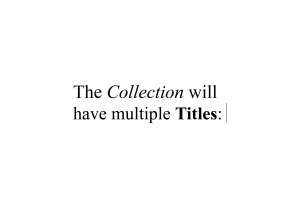
As I continue with my research I wonder if the “spatial strategies” in which I was initially interested are not actually similar to the policies that created (and keep maintaining) the archives I am working with. A look into the collection policies of the collaborating institutes reveals formulations like “het veiligstellen van het geheugen van de natiestaat Nederland” or “de taak, een representatief tijdsbeeld te distilleren.”
These institutional (and corporate) procedures, I realize, might be contradictory (or counter-productive) to my intention to create a “personal” collection that could have the potential of destabilizing the Past, rather than reframing and cementing it anew.
As an attempt to frame the content of my collection-in-becoming, I came up with a series of possible titles – which might only “do the work” if remaining a never-ending list:
Er is geen ontkomen aan, er heeft zich iets afgespeeld aan de kust, Wat er precies gebeurt is, wanneer en wat de gevolgen ervan zijn is nog niet duidelijk. Het is moeilijk te zeggen wie de betrokkenen zijn geweest. Ook weet men niet waar het bewijsmateriaal zich bevindt, maar dat het er is, staat buiten kijf.
Donna Verheijden, #5, 2019. Creative Commons – Attribution-Share Alike
Misschien zijn er antwoorden te vinden in de rijksarchieven van architectuur, beeld en geluid. Er moet toch iets vastgelegd zijn. Het archief van Dudok bevat documentatie over het Monument op de Afsluitdijk dat hij heeft ontworpen. Een perfecte locatie voor een geheime ontmoeting? In een brief van de voormalige directeur van het monument vraagt hij Dudok een aanbouw te maken, De desbetreffende directeur geeft in de brief aan dat er op hoogtijdagen maar liefst 200 auto’s langs het monument komen en dat men die enorme aantallen niet aankan!
Op Texel hebben een aantal suïcide bunkers zichzelf laten zakken in de zee, waar ze nu bevolkt worden door luipaardgrondels, zeedahlia’s, kreeften en mosselen. Ze leken niet bestand tegen de hoeveelheid water dat ze binnen kregen. Een roemloos einde van een tijdperk dat nog diep in ons collectief geheugen gegriefd staat.
Referenties
#4
–Fragment uit Guy Consolmagno, Extra footage, 2016. Nederlands Instituut voor Beeld en Geluid, Creative Commons – Attribution Share Alike
–Fragment uit Zeedahlia’s bij een wrak op het strand, 2014. Collectie Stichting Natuurbeelden, Nederlands Instituut voor Beeld en Geluid, Creative Commons – Attribution Share Alike
#5
–Fragment uit Vliegerfestival Scheveningen, 1984. Polygoon-Profilti collectie, Nederlands Instituut voor Beeld en Geluid, Creative Commons – Attribution Share Alike
–Fragment uit Carolina Cruz, Extra Footage, 2016. Nederlands Instituut voor Beeld en Geluid, Creative Commons – Attribution Share Alike
–Fragment uit Zeedahlia’s bij een wrak op het strand, 2014. Collectie Stichting Natuurbeelden, Nederlands Instituut voor Beeld en Geluid, Creative Commons – Attribution Share Alike
#6
–Fragment uit Zeedahlia’s bij een wrak op het strand, 2014. Collectie Stichting Natuurbeelden, Nederlands Instituut voor Beeld en Geluid, Creative Commons – Attribution Share Alike
–Fragment uit De branding aan het strand, 2012. Nederlands Instituut voor Beeld en Geluid, Creative Commons – Attribution Share Alike
Afbeeldingen van Dudok, Monument en uitbreiding afsluitdijk, Collectie Nieuwe Instituut
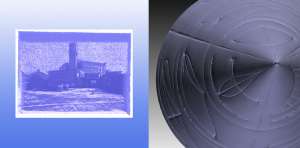
Feeling some pressure from the timeline, I spent the last weeks narrowing down the story around my project.
Continuing to watch newsreels on various topics and brainstorming possible futures, I’ve made a list of themes I would like to explore in in a more substantial form (or the final project):
I constructed a future scenario for a video installation: a series of videos exploring how propaganda could work in the future, based on the points above.
However, another question was always on my mind, which I didn’t manage to answer in the previous stages: how to create material ‘from the future‘ using archival images and videos, which are so strongly linked to the past? At this point I might have found the answer, or at least one answer for now: the archival images could be a tool of propaganda, using nostalgia to evoke and idyllic past and a feeling of safety.
I’ve been doing some visual experiments to come up with a tone for a first video and drafting a script, as well as starting to come up with a ‘visual identity‘ for the future news agency which will be producing the videos in the installations.
Having made some decisions on how to proceed brings a new wave of energy and excitement.
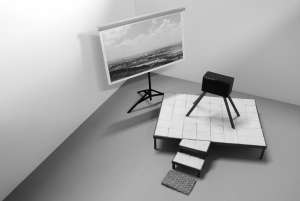
For a long time I was not really interested in, or familiar with, copyright concerns. I worked mainly with materials that I created myself, so it did not seem very relevant. However, since I began working also with found materials in the last couple of years, such questions started to pop-up. I admit that as an artist I find the ethic and moral aspects of re-use more interesting than legal formalities. I perceive it as part of a larger discourse on cultural appropriation, decolonization, privilege, etc. Personally I usually take the freedom to transform found elements and/or embed them in my work in order to make an independent statement without much hesitation (for instance in the self-made publication Present Absence, photographs of which I have published here on my first post). I did believe that since my work is mostly material, usually exhibited or performed in art-institutions, does not circulate online very much, and is neither of a high commercial value, I should not feel “threatened” by legal complications. I now understand however that this might has been naïve.
In several particular earlier cases I have asked permission to use graphic or film works from other artists (or their heirs), and also paid fees to archives to be able to use photographic materials they posses.
Our discussion and conversation with Maarten Zeinstra has been helpful in several aspects. First and foremost it has reminded and cemented the notion that copyrights work in both directions – as a restriction and protection – an issue I tend to forget, since I generally believe that nowadays it is very hard to protect one’s creations (or even distinguish them so strictly from creations of others). It also clarified to me that the responsibility to re-used materials is completely in the hands of the artist. Even when working with professional institutions and archives, that might believe to have certain rights on the sources they hold, it does not mean that they can transfer these rights to others. As an artist one thus should be aware of the regulations, make the necessary research and eventually take the decisions accordingly.
It was actually refreshing to realize that all myths concerning alleged conditions and possibilities of re-use are wrong. It makes the decision to violate or not to violate others’ copyrights (or in other words – “risk management”) clearer. Things appear to be more “black and white” than “grey” in this case!
To conclude, I would like to remind myself that despite the positive side of being more informed and having a detailed understanding of these issues, such discussions could also have as a result certain “self-censorship.” Constantly asking oneself what is allowed and what is not allowed, and the frustration involved in the complexities can have a “chilling effect” and possibly prevent from engaging with specific materials from the first place. In a broader sense it could mean that we “leave” the past untouched and unquestioned to a moment, in which it might already turn irrelevant.
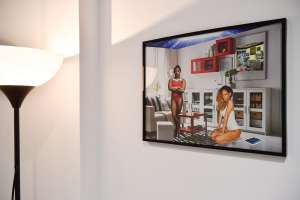
In my practice I use a lot of materials that I find online in different formats (photos, GIFs, short videos etc.), which I collage or modify with different techniques. The main reason why I like to use found materials is adding an extra layer of meaning to certain works – I use mostly recognizable images from the (pop) cultural sphere. In my view I am creating new images from combining lots of found images, but it’s important for me that these resulting new images directly reference the original source.
As many people, I did not know a lot about copyrights, assuming that if the materials I use are sufficiently modified, form a new work and are used for non-commercial purposes, it would be fine. However, the meetings and discussions we had as part of Open Archief, especially the last meeting with Maarten Zeinstra, were very helpful in clarifying these aspects. I can definitely say that now I have a more solid base of knowledge in regards to types of copyright, their timelines and how these are determined for different materials. And although the (legal) reality is quite depressing, having realized that my assumptions were far from the actual truth, I definitely believe that it is good to be correctly informed and make decisions while being aware of the possible consequences. In addition to this, it was very interesting to see how two different institutions like Nederlands Instituut voor Beeld en Geluid en Het Nieuwe Instituut deal with it, and it makes me feel a bit better that some things are not 100% clear even in their case sometimes.
In my works so far, I know that some images I used are for sure copyrighted and some of them I’m not sure about. I deliberately chose to ignore it because of a number of reasons, but since my recent works depend on it, if I would have to go through copyright clearing for all of them, the works would probably not exist at all. I firmly believe that, especially in our development as an artist or designer (or any type of creative output), we shouldn’t limit ourselves because of this.
Personally I grew up with artistic appropriation and remix culture as a constant presence around me, from sampling in hip hop music I saw on MTV to collage and ready-made artists I learned about in art history. This made a mark on how I see creative re-use, combined with the fact that today we live in a world where so many new images are created every second. In my opinion that should be reflected in the concepts and aesthetics of new artists and the law should make that easier. Making visual content easier to use for artists can bring so many new forms of expression.
I believe all visual content should be available under the creative commons license for artistic use.
* 3 Feet High and Rising is the title of De La Soul’s first studio album released in 1989, considered one of the most influential hip hop albums of all time. However, it is not available for streaming due to copyright limitations from the record label because of the samples used and the language used to clear some of the samples. Ref: nytimes.com/2016/08/14/arts/music/de-la-soul-digital-albums.html
Deze blog beschrijft een reeks gebeurtenissen die tijdens en na de excursie over copyright plaats hebben gevonden. Het is een collectie van referenties, (online) archieven, documentaires, GIFs, licenties en fragmenten van gedachten.
Ik luister naar Bach’s dertigste Goldberg Variatie uit 1741, een Quodlibet. Een vernuftig in elkaar geweven compositie vult mijn hoofd. Verschillende melodieën volgen elkaar op, haast alsof ze een estafette lopen. We horen een canon, in twee minuten en tien seconden. In die minuten passeren een aantal bekende volksliederen de revue, van Ich bin so lang nicht bei dir gewesn’ en Kraut und Rüben, tot Mein Junges Leben hat ein end.
Quodlibet; Latijn voor “Wat je maar wil / naar believen” van Quod “wat” en libet “believen”.*
In 1544 gebruikte Wolfgang Schmeltzl het begrip Quodlibet voor het eerst om een meerstemmige compositie te beschrijven, waarin de componist verschillende fragmenten van bekende melodieën of liederen had verwerkt. Dat kon gelijktijdig of na elkaar zijn. Het 18e-eeuwse Quodlibet van Bach is een re-mix!
Een blog schrijven over ©. Ik merk dat ik het lastig vind hierover een statement te schrijven. Waarom? Ik gebruik en remix beelden waar © op rust.
Als maker opereer ik in een grijs gebied als het gaat om hergebruik van materiaal. Dit gebied blijkt tijdens de excursie niet zo grijs te zijn. We leren het woord risk-management.
Ik ben een piraat
Een piraat op jacht naar remix materiaal.
Ben ik wel een piraat?
Is de mens niet vanuit nature nieuwsgierig, en wil het informatie delen?
Waren de vroegere verhalen-vertellers die van dorp tot dorp gingen niet ook al aan het remixen?
Na de excursie besluit ik wat meer te weten te komen over de materie die we hebben verkregen.
Ik ga het web op en kom vast te zitten in de netten van licenties, creative commons en publiek domein. Onderweg las ik een aantal passages van Gilles Deleuzes – A user’s guide to Détournement.
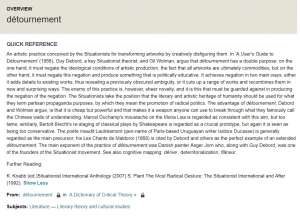
Ik scande door Nicolas Bourriaud’s Post-Production:
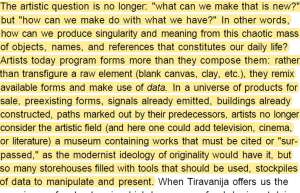
Ik keek, op aanraden van iemand een podcast van H3H3 over hoe UMG content claimed op Youtube.
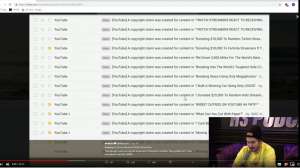
Er werd mij een aflevering van Southpark over copyright aanbevolen:
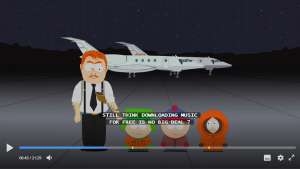
Wanneer ik ontwaak uit mijn verwoede poging meer te weten te komen over c, cc en pd, ben ik verstrikt geraakt in het interweb. Drie vensters met respectievelijk 105, 168 en 85 tabbladen staan open. Ik begin met bookmarken. En mijn hoofd staat bol van de input!
De jaarlijkse huishoudbeurs in de hoofdstad, Giphy Polygoon Journaal, 1955. Collectie Beeld en Geluid, Creative Commons – Attribution-Share Alike
Tijdens het boodschappen doen zie ik een dame rondlopen met de definitie van copyright achter op haar sweater gedrukt. Ik vraag of ik een foto mag nemen. Het mag, de sweaterkomt van de Berschka, de dame in kwestie heet Rafaela en later glimlachen we naar elkaar in de supermarkt. Wat voor bronvermelding moet ik onder deze foto zetten?
Ik zocht naar online digitale collecties die materiaal beschikbaar stellen onder cc-licenties en materiaal dat valt onder het publieke domein (iedereen die hier tips over heeft; neem contact met me op! info@donnaverheijden.nl). Er doken een aantal interessante websites op zoals:
Europeana.com, euscreen.com, cc-mixter.org, creativecommons.org.au/learn/fact-sheets/find-cc-materials, search.creativecommons.org
Ik stuit op een mooie documentaire van Bret Gaylor: RIP – A Remix manifesto.
RIP Remix manifesto, Bret Gaylor (2008), cc-by-sa 3.0
Het manifesto is gebaseerd op een aantal statements:
De documentaire is geïnspireerd op Lawrence Lessig’s boek Free Culture.
Ik droom over een stamboom voor beelden en geluiden. Over een mogelijkheid de origine van een beeld terug te vinden. Re-Use, Blockchain? Tegelijkertijd kan je je als maker daar ook weer mee in de vingers snijden, met deze reverse-enginering manier van de origine van beelden achterhalen.
Na de excursie heb ik me ondergedompeld in een wereld vol informatie over verschillende licenties. Ik kijk ernaar uit me hier meer in te verdiepen en ben ook van plan meer onderzoek te doen naar online digitale collecties. Als maker pleit ik voor meer Free-flow tussen copyright-holders en makers, een evenwichtiger en meer genuanceerde balans tussen twee werelden ten behoeve van het hergebruik van beelden.
C = copyright
CC = Creative Commons
PD = Publiek Domein
Guy Königstein, Goede Vaart, 2019. Short video based on a polygon newsreel from 1948. Public Domain Mark
To take a break from the many questions and constraints, I have concentrated for a while on a free visual research (strolling randomly through hundreds of scans at het Nieuwe Instituut), and some intuitive experiments. Making use of materials from both archives, I repurpose, invert, reverse, group, and collage, in order to “blow new life” into them, or into the spaces they depict – a notion that is very often repeated in documents on urban-renewal (“nieuw leven inblazen”). I will return to more concrete architectural methods in a later stage.
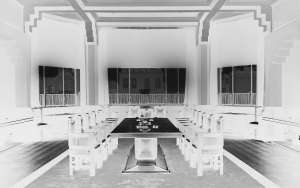
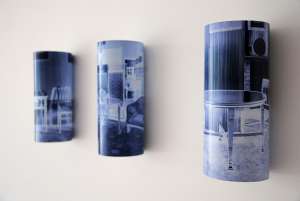
For now I still wish to follow the ambition to create an “own archive/collection” which will address (but not necessarily answer) the complexities of my personal position and the general concept of the ‘cultural archive’. I think that this can be achieved through polyphony, inner-contradictions, fragmentation, diversity of media, unequal proportions, incoherency, etc. Maybe I would like to see my actions, gestures (and attitudes) as camera-filters or optical devices; applied (practically or conceptually) on the materials I encounter and wish to utilize, occupy, or simply let-be, in order to load them with alternative meaning.
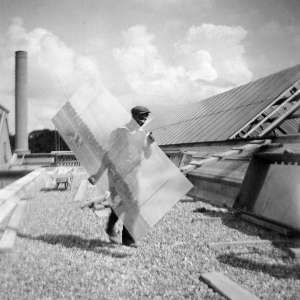
Nitraatbunker
De afgelopen periode heb ik vooral veel eigen beeld geschoten. Ik heb hiervoor onder andere de Nitraatbunker bezocht, waar ik heb gefilmd. Hier zijn alle nitraatfilms van het Nederlands Instituut voor Beeld en Geluid opgeslagen. De opnames kan ik later gebruiken ter aanvulling van het materiaal dat ik gebruik uit de collecties van het Nieuwe Instituut en het Nederlands Instituut voor Beeld en Geluid.
Referenties:
–Fragment uit 80 hartslagen per minuut, 1985. Nederlands Instituut voor Beeld en Geluid, Creative Commons – Attribution-Share Alike
During the last weeks I’ve mostly been experimenting with combining different materials through collage, drawing and editing. I’m trying to find an aesthetic that I find interesting in developing a bigger narrative around and exploring my topic of rhetorics in news about technology.
At first I started making static collages with images from the archive of Het Nieuwe Instituut that are open for use, but I wasn’t satisfied with the retrofuturistic look that resulted (since all the images are black and white and just look like a collage of old images). Then I started using other techniques and integrating other elements in order to achieve a new aesthetic. What I found the most interesting so far was choosing different elements and putting them in a new context that gave them a completely new meaning.
I also worked with video materials from the collection of Netherlands Institute for Sound and Vision. For example I cut out a performer from a video of a street theatre play and made it a character in a drawing found in the archive of Het Nieuwe Instituut. I also combined them with other elements and a traced animation of a video panel. Unfortunately I cannot put it on the blog because I really can’t find the link of a background drawing. I realised this is quite a big problem for my way of working which involves combining a lot of materials; I mostly let myself guided by the images but since I use so many it’s hard to keep track of all the source links, so that’s something I’ll have to find a solution for in the next stage.
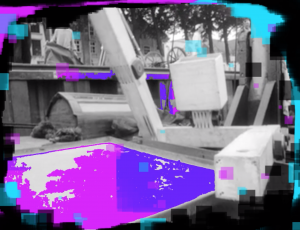
My concept hasn’t changed that much but I also find it fascinating to build new worlds from all these materials with various characters moving through them. Now the challenge is to develop a narrative to follow.
In the next weeks I plan to carry on with visual experiments while building up the story I want to tell, which is slowly starting to take shape in my head. I hope to have the final story and aesthetic decided on by the middle of July so I can work on what I actually want to show in the final presentation and the form it’s going to take.
Een film over een film die nooit gemaakt had mogen worden. The Stolen Archive is een zoektocht in de archieven van Beeld en Geluid en Het Nieuwe Instituut. Elke post bevat een teaser die iets onthult over het verhaal achter een gestolen archief. Wil je het verhaal volgen? Dan kan je naar www.vimeo.com/stolenarchive of volg www.instagram.com/the_stolen_archive.
Donna Verheijden, #2, 2019. Creative Commons – Attribution-Share Alike.
Referenties
– Fragment uit Drukte in foto-industrie, Beeld en Geluid, Polygoon-Profilti, Creative Commons – Attribution-Share Alike, openbeelden.nl/media/660333
– Fragment uit Exchange mart for amateur geologists, Beeld en Geluid, Polygoon-Profilti 1970, Creative Commons – Attribution-Share Alike, openbeelden.nl/media/615564/Ruilbeurs_voor_amateurgeologen
–Fragment uitVerzameling speeldozen in Kijk-en Luistermuseum, Beeld en Geluid, Polygoon Hollands Nieuws 1980, Creative Commons – Attribution-Share Alike, https://www.openimages.eu/media/1138941/Verzameling_speeldozen_in_Kijk_en_Luistermus eum
–Fragment uit National Film Archive stored in Film Bunker, Beeld en Geluid, Polygoon-Profilti 1980, Creative Commons – Attribution-Share Alike, https://www.openbeelden.nl/media/42703/Nationaal_Filmarchief_opgeslagen_in_filmbunker_i n_Scheveningen
–Mobilofoonberichten, gehoord in stilstaande politieauto (interieur), Nederlands Instituut voor Beeld en Geluid, 1980, Creative Commons – Attribution-Share Alike, soundcloud.com/beeldengeluid/mobilofoonberichten
–Regen met wisselende intensiteit op het dak van een stilstaande auto (interieur), met op het einde enkele keer rommelen van onweer op afstand, Nederlands Instituut voor Beeld en Geluid, Creative Commons – Attribution-Share Alike, soundcloud.com/beeldengeluid/regen-op-het-dak-van-een
Since kick-off I have spent three days at the study centre of Het Nieuwe Instituut, inspecting materials that were registered at the search-portal with words such as: Herbestemming, renovatie, vernieuwing or Sloop. In the first two visits I went through books and publications, while in the last visit I have ordered some materials from the archives. The difference was quite interesting. Books are often dedicated in retrospect to realized projects (and are usually edited and published by external bodies), while the archives contain also documentation of work-in-progress, competition-contributions, unrealized projects, theoretical studies, general correspondences, etc. that are collected by the architects themselves (and are later selected by the archivist to be preserved).
Mostly through the books I came across numerous inspiring ways of architects and planners to “deal” with the built past: allowing nature to take over, selective replacement of materials, stripping surfaces to the core, defining (statistic) criteria for destruction or rescue, fencing and monumentalizing selected elements, displacing, reuse of discarded materials and temporal approaches.
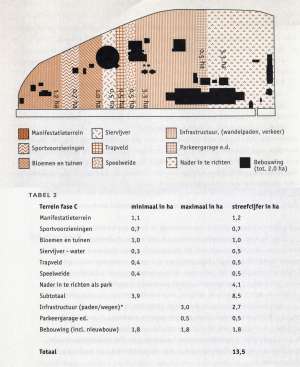
Diagrams from the publication Ontwikkelingsplan voor de Westergasfabriek (Klazien Duijvelshoff, Evert Verstraten and Stadsdeel Westerpark, 1996, p. 34-35) show how specific buildings in the re-developed former industrial terrain are planned to be kept, and the surrounding areas are schematically allocated space according to desired functions (sport, flowers, parking, water, etc.).
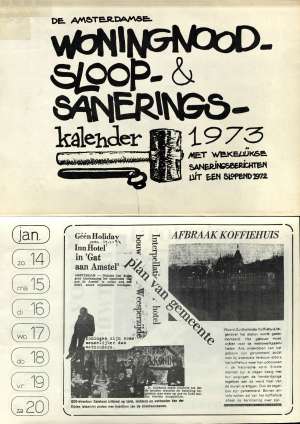
In the self-made publication De Amsterdamse woningnood – sloop- en saneringskalender 1973 (author and publisher unknown) a reproduced newspaper clip describes the careful destruction of a small coffeehouse due to the construction works on the Metro line nearby the central station of Amsterdam: “All parts of the building are being numbered so that the coffeehouse can eventually be rebuilt in a different location in its historical shape.”
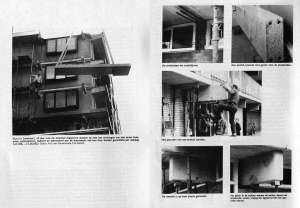
The publication Betonschade; oorzaken, herstel en financiële konsekwenties (P. Groetelaers, Delftse Universitaire Pers, 1985, p. 38 and 50) deals with the challenges of deteriorating concrete in after-war housing projects, and proposes among other possibilities, the selective replacement of ruined materials by new pre-fabricated elements.
The materials from the archives have so far surprised me in one main aspect, namely through the personal and emotional involvement. This is well exemplified in the case of a specific street corner in Alkmaar: In 1966 architect Piet Tauber (1927-2017) was commissioned to design an office building for the AMRO-Bank at the corner of the Voor- and Zijdam at the city centre. For this cause several very old traditional houses were demolished, despite large protest and critique. Thirty years later, the bank sold the building to a housing company, which decided to demolish the building in favour of a new housing complex. Now it was time for Tauber himself to protest. His archive holds dozens of determined complaint latters to the municipality, many newspaper clips, correspondence with the housing company, touching demands for support from colleagues, sketches for alternative renovation plans, etc. – spanning a period of more than three years. Tauber fought hard, but in vein. The last piece in the folder is a shiny brochure: invitation to the opening of the new building.
Parallel to the “architectural research” I was strolling through and around the online “cultural archive” of Sound and Image. Without a clear idea of what I search, orientation in this large pool is rather difficult. In general I find that despite its immenseness and the diversity of topics it addresses, this collection (mostly of polygon-newsreels) is quite homogeneous in character – it often presents a clear, condensed, formal and inauthentic perspective on a public event/issue, and correspondingly depicts mostly public, commercial or natural spaces (footage from private spaces is rare). Quite different are materials from the Amateur Film collection. Here the makers make use of an immediate access to personal life stories and spaces of their families, friends or neighbours, and since they do not have any time pressure (like on TV), the footage is edited – if at all – in a much more generous way. Hence, while it feels more “boring” these materials gave me the impression of documenting a more “real” and emotional past (similarly to the differentiation mentioned above between the materials I encountered in the library and the archive of Het Nieuwe Instituut).
After receiving an excel sheet with the detailed contents of the Sound and Image collection, navigation felt easier. I excluded the NSB part of the archive, and began scanning through the titles one by one – and upon interest viewed the video itself. In my own excel sheet I list links to interesting videos with a personal note, which usually refers to an aesthetic composition or thematic relation to my research (like the videos from my first blog-post).
In general, the journey hitherto has brought up two initial questions and thoughts:
First, I ask myself about my personal relation to the archives and the documents they hold. As a migrant by choice and privilege, I live in the Netherlands for more than a decade, and yet feel quite detached from its past (and in a way from its present as well). This position is ambivalent – it can be powerful and demotivating at the same time, and I wonder if and how I should define my position within the framework of this project. Notions of belonging, cultural appropriation, right to speak, (mis)use of language seem all very interesting and relevant to explore. For now, I am intrigued by the idea of “eigen-maken” (both in terms of the material and the things it symbolizes) as a means to begin my creative exploration.
Second, but still reflecting on my position, I am reminded by the archive that in many processes of urban renewal (and gentrification), artists play a significant role, often without realizing that they are being utilized by developers and municipalities. What is my take on that, understanding that my intention was to undertake a similar process of “renewal,” commissioned by two “national” institutions?
On May 4 and 5, instead of locally “celebrating” freedom, I have visited a series of exhibition openings and talks in Cologne. Under the title “Artist meets Archive” of the Photoszene Köln, six international artists were commissioned to work with a photographic archive and create/curate an exhibition in one of the city’s museums. Among their different approaches, most interesting, relevant and inspiring for my research was the exhibition project Noisy Images by Antje Van Wichelen at the Rautenstrauch-Joest-Museum. Van Wichelen researches colonial archives and speculates about the possibility of their destruction. Willing to work against the “classifying gaze” and “categorizing of the other” she asks: “What to do with all the images from the colonial past in our archives? How can we create new imagery on the basis of these? Do we need to keep looking, or start destroying them?” Her interventions include various methods – but for one of them she has let negatives from the archive be eaten by bacteria from Colognes Rhine water – every week one filmstrip is taken out of the water and put up for display.
In this stage of the process I am following two main directions:
Since I have already quite a clear subject, newsreels & technology, I have mainly been looking at the archive of the Netherlands Institute of Sound and Vision through the Polygoon collection, which contains newsreels from 1921 to 1987. I’ve been making an inventory of newsreels which talk about technology / automation / factories and making notes about the subjects presented, year, words used in the descriptions, types of images, appearance of people vs appearance of machines, types of music, etc. I am currently trying to categorise the videos based on these notes in order to see some statistics more clearly.
Alongside this, I’ve also been browsing both the archives from Sound and Vision and Het Nieuwe Instituut quite randomly (searching random keywords) trying to find interesting images that spark ideas or that I can use in the future for visual experiments. Here are some examples that caught my attention:
Excerpt from St. Nicolaas nadert: Keuringsdienst van Waren keurt speelgoed op veiligheid en kwaliteit Beeld en Geluid, Polygoon-Profilti, Creative Commons – Attribution-Share Alike
This is an example of a very strong image that I found while watching newsreels which I definetly plan to use in the future for visual experiments and make use of it in the story I want to tell. It has a perfect mix of creepy and cute!
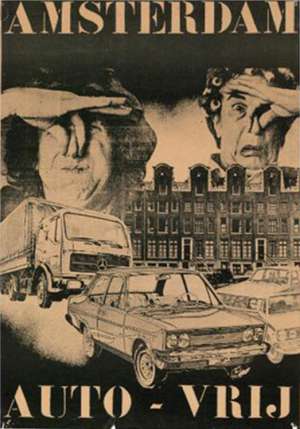
I found this poster and I liked the humor in the way it gives cars unpleasant human characteristics.
![(link: https://zoeken.hetnieuweinstituut.nl/nl/objecten/detail?q=trans&page=4&asset=16d043d5-c845-81af-e6dd-7be813be5251%3E text: Trans Europe Express [TEE] Modellen target: _blank), plaster model by Bout-van Blerkom, Elsebeth (architect), Werkspoor (opdrachtgever), Bout-van Blerkom, Elsebeth (maquettebouwer), 1953/1957. Objectnummer: MAQV591.03, Collectie Het Nieuwe Instituut.](https://www.openarchief.com/media/pages/blog/two-main-directions/206dd11d58-1563366616/e25db3aeb5daaaba2228f02ceedc6f4d94242a88f1ad8dc28ac39724d1559ce3-300x.jpg)
I really like the appearance of this train maquette made out of plaster, it makes it look like an ancient artifact. This would also be an example of an interesting object that I would like to somehow integrate in my story.
I’ve been reading about newsreels, their purpose, influence and uses, including an interesting case study about the way in which newsreels were basically used as propaganda in the USA to change the people’s perception about the nuclear tests from the Bikini Atoll. This helps me understand better their context and the conditions under which they were made.
Reading ‘The War of Words’ by Kenneth Burke, a study of news rhetorics. Here I plan to get a better understanding of rhetorical devices, identify some of them in the archive materials and possibly use some in the future (more here). Some questions naturally arise from both directions, for example:
Since my initial proposal for this project I am gravitating towards making a video or a series of videos with a story that acts as a metaphor about news rhetorics on technology, made out of materials from the two archives, remixed. I am now trying to define the story, point of view and timeframe and writing down small ideas for the video(s). All in all, in this stage I am both browsing the archives for interesting materials and for identifying rhetorical strategies I can use for the final video, but also trying to develop my concept so that I have a more precise focus when looking for materials in the archives. The next step is starting to do some visual experiments with some archive materials, which is very exciting!
Con/de/struction (working title) is conceived as an attempt to learn from the diverse ways Dutch architecture and urbanism have been dealing with the built past, and to correspondingly develop creative methods to approach and engage with historical cultural documents.
Opruiming verdedigingswerken aan de kust, 1948, Beeld en Geluid, Poligoon-Profilti, Public Domain Mark.
Zaandam onze stad, 1958, Beeld en Geluid, Polygoon-Profilti Creative Commons – Naamsvermelding-Gelijk delen.
Zaanstreek waakt over cultuurbezit, 1962, Beeld en Geluid, Poligoon-Profilti, Creative Commons – Naamsvermelding-Gelijk delen.
In the initial part of the project I will focus on researching spatial and material strategies that were employed (over the last two centuries) by Dutch architects, urban planners and designers in processes of restoration and renovation, demolition and destruction, reuse and repurposing. I expect to trace such strategies in the State Archive for Dutch Architecture and Urban Planning (within Het Nieuwe Instituut).
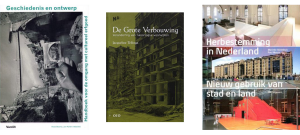
These publications, among many others that can be found in the library of Het Nieuwe Instituut, demonstrate the scope of contemporary research relevant to this project.
Subsequently, my intention is to explore and experiment with different audio-visual techniques that are inspired by the findings of the first stage, and apply them on historical documentary materials from the publicly accessible media archive of the Netherlands Institute for Sound and Vision.
While addressing the socio-political responsibilities and challenges of safe-keepers of cultural heritage (such as the collaborating institutes) in days of accelerated media-production and growing demands for decolonization, equal representation and positive discrimination, the project will not look at specific historic wrongdoings or currently debated injustices. Instead it might declare neutral, random or even boring pasts as possible cultural battle fields.
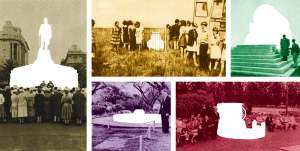
This endeavor builds upon a series of earlier artistic engagements with the archive. For instance, for the projects Present Absence and The ___ You Work With I worked with visual and textual materials produced during the apartheid era in South Africa, found by myself during an artist residency in Johannesburg.
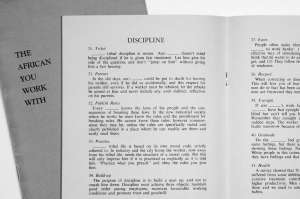
In Grand Kenyon I explore the life and work (and archive) of influential British archaeologist Dame Kathleen Kenyon (1906-1978), using techniques inspired by her own excavation and field recording methods.
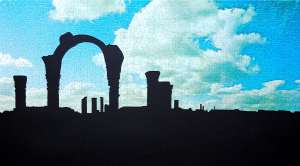
As a artist, my main research focuses on mass- and social media, Its seductions and underlying power structures. The three most recent films which I have made, Kiss the Sky — Eye Trick the I, Land of Desire — Happy is the New Black and All the World’s a Stage — Ways of Seeing 2013 form a trilogy on our image culture. Within these films, found footage is being used, together with self-shot imagery in order to talk back at the media. What are the images we are surrounded with, and how to deal with them? To what extend are we seduced or deceived by those images?
The Stolen Archive
The (moving) Images, sound fragments, correspondences, objects and archival depots of the Nieuwe Instituut and the Institute of Sound and Vision will serve as props, actors and sets for a speculative thriller on untold (hi)stories.
“The issue concerned many of us, even though the act was hardly visible… A bad copy, they say, poor image quality…”
As a designer and artist I explore themes like language and contemporary communication influenced by technology and media. I move through collages, animations, drawings, installations and other various mediums and use mostly found online materials and footage.
My project for Open Archief will be a research into rhetorical tools from archival newsreels which present the early days of automation and technological development. It will also be reflecting on the rise of artificial intelligence and how it influences the news itself in the present. The provisionary title ‘The evening news and the automatic plough’ was inspired by a Polygoon newsreel in the open archive of the Netherlands Institute of Sound and Vision about the use of the fully automatic plough in agriculture:
De volautomatische ploeg, 1962, Beeld en Geluid, Polygoon-Profilti, Creative Commons – Naamsvermelding-Gelijk delen.
Through this project I would like to analyse and deconstruct the rhetorical tools of archival newsreels about automation and make a link with the current developments of machine learning and artificial intelligence, as well as its current relation to news: it being an important factor in the rise of fake news, blurring the line between fact and fiction and users being targeted by new digital marketing techniques used to advance specific political agendas through emotional manipulation.
I plan to also integrate architectural plans, images and interesting stories from the archive of Het Nieuwe Instituut in my research.
In the past I’ve been working with various techniques and I’ve become more and more interested in working with found imagery as moving image and installations, trying to break out from the static 2D format so common in design.
Anthropolabour is a series of animated GIF compositions about labour, technology and media and are inspired by Kurt Vonnegut’s dystopian novel Player Piano, which analyses the societal e ects of workers being replaced by machines.
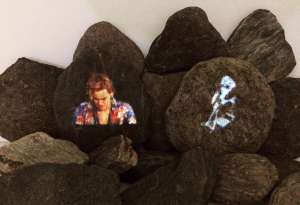
Disputation between rocks and hearts is an installation which makes a link between different stages of the history of writing, part of a research about the transition between communicating with text to communicating with images in online conversations and the use of animated GIFs as rhetorical devices.
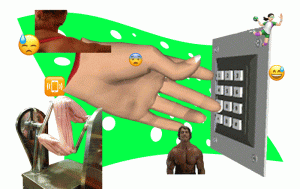
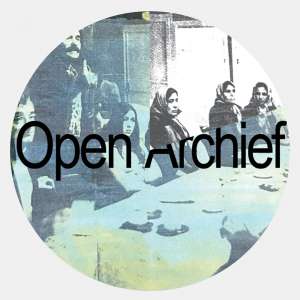
The Netherlands Institute for Sound & Vision (S&V), Nieuwe Instituut and the International Institute of Social History (IISH) come together again to form a new edition of Open Archief. This time, we are joined by our new partner Framer Framed, a platform for contemporary art, visual culture, and critical theory & practice in Amsterdam. With this new collaboration, Open Archief aims to become a space for experimentation and creation that functions beyond, but not disconnected from, the institutional framework of archives.
Open Archief 4.0 consists of two residencies that welcome artists, writers, curators and artistic researchers for a four-month residency period. During the residency, they will each create a printed publication, fuelled by their artistic practice, experimentations and findings. Central to the working practice of the project are interactions with the open digital collections of the three institutions and the network of Framer Framed. The selected residents will receive a grant (allowance and production budget) of €5.000. The deadline for the submission of proposals is 5pm on 6 July 2025.
Through the Open Archief project, the collaborating partners are opening up their collections for creative reuse. Inviting two residents in which creative research and artistic practice are central provides fresh insights into the accessibility and visibility of the digital collections. In this way, the institutes hope to be able to better facilitate users and support creators in the development of (autonomous) research and creation of works of art. The residency program acts as a testing ground for new methodologies of working with, and within, archival collections and institutions, questioning existing practices, ways of access and undiscovered ways of activating heritage materials.
The Sound and Vision collection contains over a million hours of historical audio-visual materials; Nieuwe Instituut manages one of the world’s largest architecture archives; and the IISH collection (a library plus archival and audio-visual materials) has an emphasis on social movements; The Framer Framed website functions as a digital archive, presenting 15 years of exhibitions, events and people. Large parts of these collections are being made accessible under open access-licences (such as CC BY) and are available for creative reuse.
View the collections online here: zoeken.beeldengeluid.nl, zoeken.nieuweinstituut.nl, search.iisg.amsterdam and archive.framerframed.nl.
Open Archief offers two residencies from September 2025 to January 2026 (with a winter break in December), the duration of which allows space for research, experimentation and drafts. The selected residents will each receive a grant of €5.000 (€4.000 allowance and €1.000 production budget). During the working period, the residents have the opportunity to undertake physical and online research and to create a printed publication in February 2026.
The publication follows the format of a chapter of the book Open Archief, Artistic Reuse of Archives. Open Archief aims to facilitate multiple residencies over the upcoming years that then lead up to the creation of a second book.
In addition to the publication, the residents are invited to develop a public presentation or programme that showcases their residency. This can be for example an installation or a public screening, but also a city walk, a workshop series or a shared meal.
The residents will receive support from the staff of the four organisational partners, external experts and long-time collaborator and designer Marius Schwarz. They are expected to make an engaged and constructive contribution to the other activities associated with the project, such as the Re:Use Clinics and blog posts. Residents are expected to work on this project for a minimum of four days per month.*
The proposal must comprise of a new research topic, a printed publication and public presentation, based on the open collections of (one or more of) the four partner organisations. The proposal must:
We are looking for individuals who:
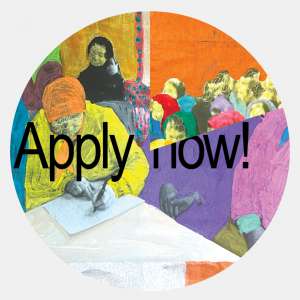
Proposals may be submitted in English or Dutch until 5pm on 6 July 2025 by email to openarchief@beeldengeluid.nl.
The proposal must consist of:
The jury, consisting of representatives from the four organisational partners, and a former resident, will select two residents from the proposals. The two residents will be announced on 28 July. No draft of the proposal may be submitted in advance. Candidates will receive confirmation of the receipt of their proposal by email no later than one week after the submission deadline.
Want to know more or have a question about the process? Visit www.openarchief.com for updates, visual materials, press releases and blogs, or send an email to cmartens@beeldengeluid.nl.
*Addition made to open call text on 15 May 2025.
Our book, Open Archief. Artistic Reuse of Archives is now available online and worldwide in print! The book holds 12 essays, created by artists, curators, and researchers. With contributions by Philipp Gufler, belit sağ, susan pui san lok, Paula Kommoss, Gill Baldwin, Jessica de Abreu, Pablo Núñez Palma, Michiel Huijben, Pieter Paul Pothoven, Elki Boerdam, Shock Forest Group, Femke Dekker, Alice Wong and Simo Tse. Initiated by the Nieuwe Instituut, Sound & Vision, and the International Institute of Social History. In collaboration with Stichting Archiefpublicaties (S@P)and the Pictoright Fund. Edited by Eline de Graaf, Michael Karabinos, Thijs van Leeuwen, Cees Martens and Marius Schwarz. Designed by Marius Schwarz.
After three editions of residencies and clinics, the Open Archief project team sought a way to showcase the outcomes of the various aspects of the programme in a more concrete way: a bundle of essays. The team invited artists from their networks to contribute an essay on how they use and/or see the role of archives in their work.
With this book, we want to paint a picture of archival reuse by artists and how they relate (themselves) to archives and archival institutions. In doing so, we firstly want to demonstrate to the archival community, and anyone else, that archive reuse is co-creation. Secondly we intend to inspire readers to actively choose to work with archives: the essays in the publication provide many examples and avenues to explore. Finally the book is aimed at a wider audience interested in art and archives. We hope to offer insight into the dynamics at play between ‘archive’ and user.
The book is sold worldwide via Idea Books and an online version is freely accessible via Sound & Vision Publications.
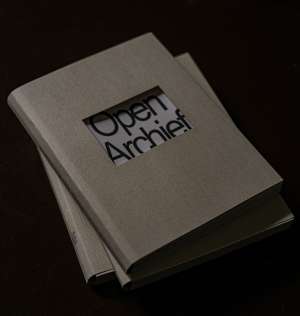
photo by Rob Verkerk
On October 10, the launch of our book, Open Archief. Artistic Reuse of Archives, was celebrated at the studio of our beloved long term collaborator and designer Marius Schwarz. A great deal of friends, artists and colleagues were present and raised their glasses to celebrate the bundle of essays that we brought to life. From now on, the publication is both digitally available (for free!) via the publication platform of Sound & Vision and in book form via Idea Books, shipping internationally! We want to take this moment to thank our publisher S@P and the Pictoright Fund in making this publication possible.
Rob Verkerk made pictures of this wonderful evening, we have selected a few pictures below.
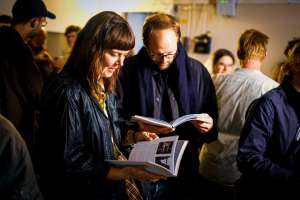
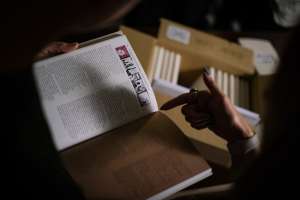
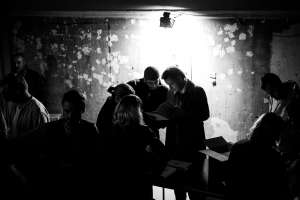
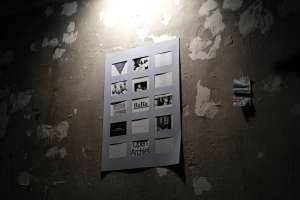
In the open collections of het Nieuwe Instituut - the International Institute for Social History - and Sound & Vision, makers Daria Kiseleva, Alice Wong & Simo Tse and Remco Torenbosch researched new stories in open, digital heritage collections, resulting in a new media work.
Video: Bram van der Giessen (camera + dir.) and Eva Langerak (interview + translation).
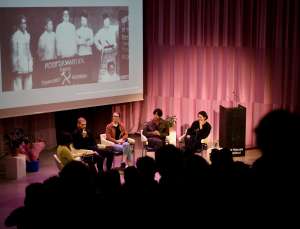
Photo Rob Verkerk ©
Together with Sound & Vision and the International Institute of Social History, Het Nieuwe Instituut is organizing the third edition of Open Archief. Open Archief is a project in which four artists search for new stories in open, digital heritage collections, resulting in a new media work.
The exhibition is on display until March 26th 2023.
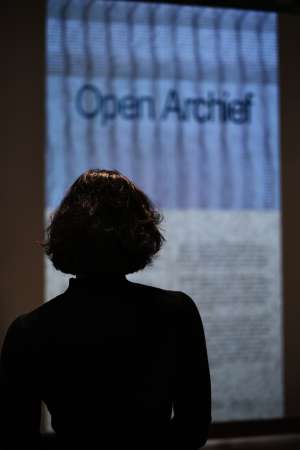
Photo Rob Verkerk ©
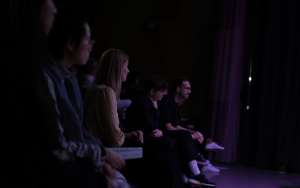
Photo Rob Verkerk ©
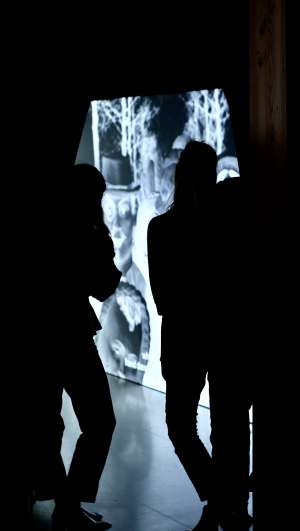
Photo Rob Verkerk ©
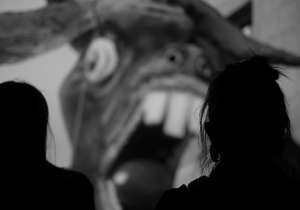
Photo Rob Verkerk ©
Photos by Rob Verkerk ©
Voices and Breaths is an audiovisual installation based on Snelle Berichten Nederland-China [Quick Messages The Netherlands-China], a Cantonese-language radio program about Dutch news and current affairs that was broadcast between 1990 and 2008. The main goal of the program was to make it easier for Chinese-speaking migrants to bond with members of their own community and build a bridge to Dutch society. The radio program was forced to end production in 2008 when the NPS (Dutch broadcasting foundation) stopped financing all non-Dutch-language programs. In retrospect, the program can be seen as an example of changing attitudes towards migrants, specifically the Dutch-Chinese, in both the decision-making class and among themselves.
During their research Wong and Tse came across a private collection of cassette tapes with recordings made by one of the former radio presenters. On the recordings you can hear him speaking and listening, as if he is trying to find his own voice. The comparison between institutionalised archives and this personal collection provides interesting insights into how stories can be recorded and retold.
Partai Komunis Indonesia (1914 – 1966) is a work that focuses on the history of the Indonesian communist party PKI. It was founded during the Dutch colonial period by the Indonesian national movement and the socialist movement in the Netherlands. With this work, Torenbosch attempts to re-archive this history, that is scantily archived in the Netherlands, as extensively as possible. His efforts underline how the socialist movement and the political party, each with a strong anti-colonial political program, contributed to Indonesian independence in 1945, and the years that followed. The PKI arose from a collaboration between Semaun and Raden Darsono Notosoedirdjo from Indonesia in addition to Henk Sneevliet and Adolf Baars from the Netherlands. Their main goal was to achieve an independent Indonesia, international solidarity, and to realize reparations for the Indonesian population from the Dutch state. The party was banned from 1927 to 1945 but later became prominent in Sukarno’s state ideology. In the years that followed, the PKI became the largest non-governing communist party in the world, until its violent dissolution in 1965-66.
In this work, Torenbosch sets out to create an image bank of digital images from archives in Indonesia, the Netherlands and other parts of the world, resulting in an image report representing both local and international contexts. The image bank reveals the active history of the PKI, and also the international political forces, which exerted constant pressure to intimidate or prohibit the party. The image bank Partai Komunis Indonesia (1914 – 1966) will eventually be available to the public.
Kiseleva’s video installation examines how, in the archives, imagination is reflected in utopian ideas, political fantasies and carnival celebrations. It traces the ‘haunting’ futures inside the archives and examines their material manifestations in social reality and political and cultural thought. With this, Kiseleva explores the connection between utopian ideas and social movements. By juxtaposes idealistic, modernist utopias with marginalised, feminist utopias, she speculates about whose imagination counts and whose doesn’t. The work reflects on the history of imagination from the early modern period until today, and on how power structures have tried to censor and control it. The videowork is based on documentation of carnival celebrations in the Netherlands, as an expression of the subconscious imagination and popular culture.
Kiseleva positions carnival between aesthetics and politics, utopia and commercialised enjoyment, role reversal and the status quo, and a space of emancipation and conservative tradition. By mirroring the sci-fi horror genre, which, as philosopher Rosi Braidotti says, is “ideal for depicting states of crisis and change, and for expressing the widespread anxiety of our time,” it blurs the lines between fiction and reality.
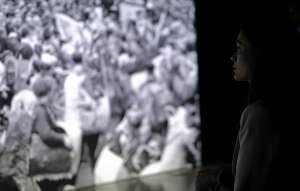
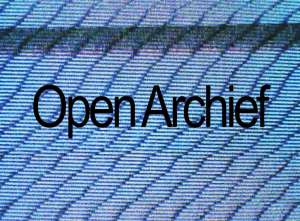
On 13 September Open Archief organised another edition of the Re:Use Clinics, a series of public events for heritage professionals, artists and other interested parties in the creative reuse of heritage collections, this time co-hosted by ARIAS.
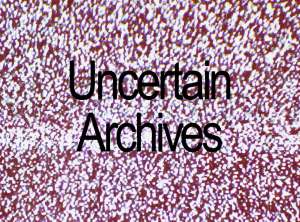
For this edition, former resident, anthropologist, curator and activist Jessica de Abreu and anthropologist and activist Mitchell Esajas, reflected on the affective challenges that artists and researchers face when approaching heritage collections. The main question of this clinic was: how to deal with inherently violent colonial imagery in the archives?
Mitchell took us through the story of The Black Archives up until now. He reflected on how their collection came to be, what other archivists and/or curators went before them, and how that had influenced their approach to collecting and curating. He paid special attention to their current exhibition Facing Blackness. Mitchell explained how they displayed certain items and which steps were taken to soften and redirect the impact of violent imagery. One specific piece was highlighted; a shattered window of his former car that is now a part of their exhibition. This object is directly linked to a violent incident where his safety was at risk in the aftermath of an anti-racist protest. By placing the window in the context of an exhibition, it can still be perceived as a possible trigger for trauma, but it also creates a starting point for a conversation where visitors can gain insight into the reality of contemporary protest movements.
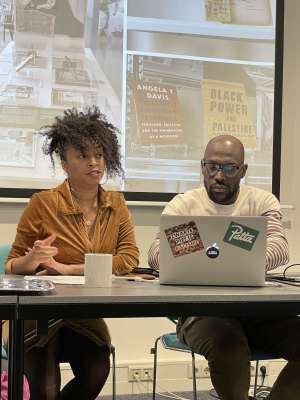
Photo by Mariana Fernandez Mora
Jessica reflected on her research practices of the past years. She told us about being confronted with violent imagery and text, and how she dealt with that. She stressed the critical importance of mental wellbeing, when it comes to working with archival material. We should not only take the confrontation with the actual physical or digital documents into account, but also the point of departure: the search terms and metadata. Archival institutions (or really most GLAM institutions in the Western Europe) have a strict way of organizing things. This, Jessica says, deprives records and items of emotions and feelings.It is a result of a (colonial) binary system where rational, logic and control are opposites of the irrational, emotions and chaos.
Jessica advocated a new way of doing both research and archiving, where coexistence between emotions and logic can thrive. This way, emotions are welcomed, validated, appreciated and they are a source of knowledge. She pointed out that emotions protect our mental health; they activate triggers, let us deal with trauma and open up intergenerational and collective experiences, which could lead to empowerment, balance and hope.
In short: to overcome (post)colonial trauma, emotions are needed and should be welcomed into archival (research) practices. Finally, Jessica told us about her experiences at documenta 15, as a very concrete example of how a new approach to GLAM could look like. The sense of community that this exhibition radiated by using the concept of Lumbung, seems like an excellent starting point.
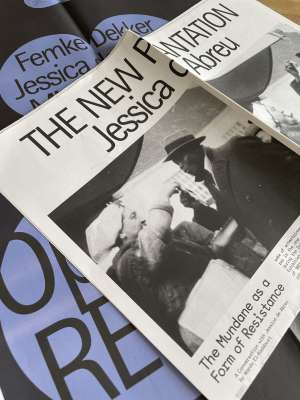
Photo by Mariana Fernandez Mora
After both presentations, our host of the afternoon, Warda El-Kaddouri, moderated conversations between the speakers and the audience. We collectively talked about trigger warnings, and (personal) experiences were shared. It was an honest and open conversation, where nobody claimed to have answers, and that was exactly why the conversation worked so well. We could only conclude that we did not need a definite conclusion: emotions can be both empowering and triggering when it comes to (re)using archives. They should be carefully explored, while always taking our own and others’ mental wellbeing into account.
If you come across any reuse related questions, feel free to reach out to us via openarchief@beeldengeluid.nl. If you’re interested in helping us to find a new topic for a reuse clinic, do not hesitate to get in touch with us as well. We are always looking for new ideas.
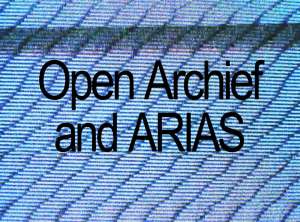
How to deal with inherently violent colonial imagery in the archives?
ARIAS and Open Archief are happy to invite you to another edition of the Re:Use Clinics, a series of public events for heritage professionals, artists and other interested parties in the creative reuse of heritage collections.
For this edition, former resident, anthropologist, curator and activist Jessica de Abreu in conversation with anthropologist and activist Mitchell Esajas, will reflect on the affective challenges that artists and researchers face when approaching heritage collections.

Starting her residency with the intention to document and archive the contemporary black anti-racism movement in the Netherlands through found footage, image and digital data, Jessica de Abreu wondered how to deal with the violent content she was encountering. When looking for material, she realised that most of the images portrayed Black people in the context of violence, suffering or exoticism, and reflected on the fact that by re-distributing them or re-displaying them, this violence would be perpetuated. Writing about the overwhelming emotional experience of going through the colonial collections, she shares her struggle to find ways of bringing back humanity to these images. But de Abreu also found moments of healing by instead looking for material where Black people were portrayed enjoying the pleasures of everyday life, moments of joy amidst adversity. Through this process, she became more interested in the portrayal of Black people in a context outside of political or colonial frames, looking for the mundane as a form of healing resistance.
In light of the enduring colonial, imperial and patriarchal legacies embedded in modern-day institutional archives, one central objective of archival reuse is to create space for silenced voices and underrepresented narratives. But what are the emotional challenges of doing this work? And what kind of healing can be found in the unearthing of previously overlooked narratives contained within the heritage collections?
Warda El-Kaddouri will host the event, as well as moderate the conversations between the speakers and the audience following the presentations.
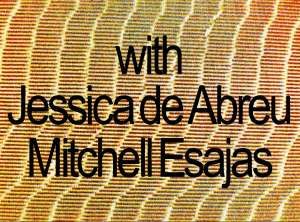
Anthropologist, curator, and activist Jessica de Abreu graduated from the departments of Social and Cultural Anthropology and Culture, Organisation and Management at VU University Amsterdam, Amsterdam. Her work is committed to the field of the African Diaspora, ranging from social mobility in New York, Amsterdam and London to the way in which black women, particularly from the Vereniging Ons Suriname, relate to the legacy of activism of black women in the Caribbean and the Netherlands. She is a co-founder of The Black Archives and a member of the New Urban Collective.
Anthropologist and activist Mitchell Esajas is the co-founder of The Black Archives and the New Urban Collective, a network for students and young professionals from diverse backgrounds with a focus on the Surinamese, Caribbean and African diaspora. Esajas studied Business Studies and Anthropology at the Vrije Universiteit Amsterdam. In 2016 he co-initiated the Black Archives in Amsterdam, a cultural centre based on a unique collection of books, documents and artefacts documenting the histories of Surinamese and Black people in the Dutch context. The Black Archives develops exhibitions and public programs based on their collections and urgent societal issues.
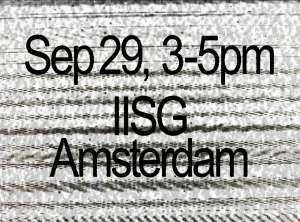
When: Thursday 29 September 2022
Time: 15:00 – 17:00 CEST
Location: International Institute of Social History, 31 Cruquiusweg, 1019 AT Amsterdam
Language: English
Register here
After a year of digital events, Open Archief is very excited to host the 2022 clinics at the IISG in Amsterdam.
For ARIAS this collaboration with IISG, HNI and Beeld & Geluid on the occasion of Open Archief will build further onto the current thematic line Estuaries: ways of Knowing and the previous clinic on the topic of Ethical Dilemmas.
On Wednesday 15 June 2022 Open Archief and Pictoright collaboratively organized a Re:Use Clinic about ‘Archives and Copyright’ at the International Institute of Social History in Amsterdam.
The Open Archief Re:Use clinics are a series of public events for heritage professionals and interested parties in the creative reuse of heritage collections. They address matters essential for reusing collections and for the process of makers. These ‘clinics’ are not just workshops but are actually meant as a place for specialist care, with room for questions and discussion.
This first Re:Use clinic was all about archives and copyright. Material from archival institutions can often not be reused “straight out of the box”, because copyright restrictions may apply. So what happens then? Together with two specialists on the subject, Arlette Bekink from Pictoright and artist Elki Boerdam - experienced in using and reusing a great variety of materials- , we tried to tackle all kinds of questions about copyright, when it comes to reusing archival material. Thijs van Leeuwen (IISH) hosted the event.
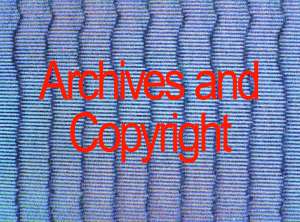
To get straight to the point: we did not solve all the questions of copyrights once and for all on this sunny Wednesday afternoon. What we did manage to do was have an open and honest conversation about the options that were present and challenges when reusing (possibly) copyrighted materials.
Arlette talked us through the basics first: What actually is copyright? (In short, it’s the “exclusive right of a maker to publish and reproduce a work” according to art. 1 of the Dutch Copyright Act). With the basics in mind, a (re)user can determine which restrictions may or may not apply. Arlette then explained the role that rights organizations play in making collections accessible and available for (re)use. Pictoright itself represents visual creators and operates in the area of individual rights, resale rights and collective rights. Finally Arlette brought us up to speed about the future of copyrights and online archives, which can be settled through collective contracts. (see the recap of our 2021 Clinic here). There is now a legal framework in place in the Netherlands to guide this process. Collective management organizations and heritage institutions are also thinking ahead in so-called, still ongoing, ‘stakeholder dialogues’.
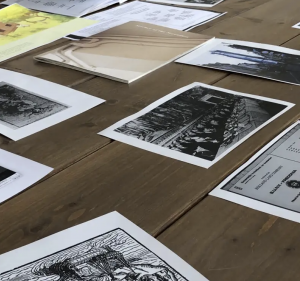
Input Party at the IISH on the 17th of May.
Elki Boerdam reflected on reuse and copyrights from both the perspective of her work as a photo editor and photo collage artist for De Volkskrant, and her work as an independent artist, recently graduating from the Sandberg Instituut. Elki also organizes ‘Input Parties’ with Rachel Sellem, which have been a successful way to open up conversations for artists about (their) image archives for the past two editions of Open Archief.
The conversation then continued in many directions. Both guests clearly had their own view on copyrights and its importance in different ways, and so did the audience. We talked about the gray areas: For example: is a plain photo of a ceiling copyright protected? And what about a private letter in an archive? Sometimes it might be a question of interpretation, sometimes we can follow the letter of the law. It is not always easy to accept the criteria in place, our conversation showed.
Finally we asked ourselves: what is the future of copyright? Would it be beneficial if every image ever created was stored in a ‘cloud’, and everytime someone (re)uses that image, that person would pay an automatic fee? Or would that be a Black Mirror-esque scenario?
It is not yet clear where the future of copyrights will take us, but it is clear that this Re:Use Clinic is part of an ongoing conversation that we should and will continue in the future.
If you come across any reuse related questions, feel free to reach out to us via openarchief@beeldengeluid.nl. If you’re interested in helping us to find a new topic for a reuse clinic, do not hesitate to get in touch with us as well. We are always looking for new ideas.
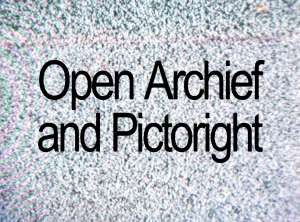
On Wednesday 15 June 2022 Open Archief and Pictoright collaboratively organize ‘Re:Use Clinic #1, Archives and Copyright’, a public event for heritage professionals, artists and other interested parties, about creatively reusing heritage collections.
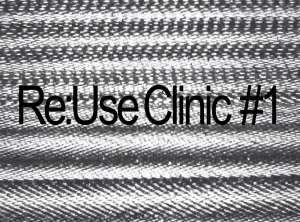
The first clinic is all about archives and copyright. Material from archival institutions can often not be reused “straight out of the box”, because copyright restrictions may apply.
But how can you find out about those copyrights? And by the way: what are copyrights? What are your options when it comes to (re)using copyrighted collections? What role can heritage institutions play, and what role do organizations such as Pictoright and other rights organizations play in making archival collections accessible and available for (re)use? Which brings us back to the bigger question of the importance of copyright protection in contrast to freely accessible material. Then, we can finally ask: what is the future of copyright?
These questions will all play an important role in our first Re:Use Clinic of 2022. Together with two specialists on the subject, Arlette Bekink and Elki Boerdam, we will talk about these matters and try to answer any question you might have.
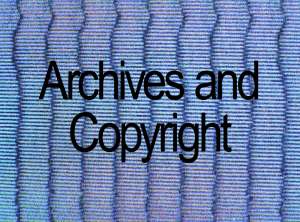
The Open Archief Re:Use clinics are a series of public events for heritage professionals and interested parties in the creative reuse of heritage collections. The clinics address matters essential for reusing collections and for the process of makers. After hosting digital editions in 2021, Open Archief is very happy to host the 2022 Re:Use Clinics at the IISH in Amsterdam. These clinics are not just workshops but also a place for specialist care, with room for questions and discussion.
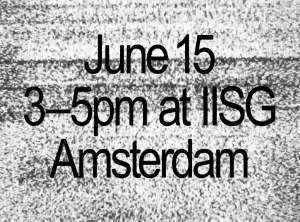
What: Open Archief 2022 Re:Use Clinic #1 ‘Archives and Copyrights’
When: 15-6-22, 3-5pm
Where: International Institute for Social History, Amsterdam
Language: English
After the clinic, drinks will be provided at the location.
Register via this link.
International Institute of Social History
Cruquiusweg 31
1019 AT Amsterdam
The Netherlands
Questions? openarchief@beeldengeluid.nl
Artist program
On a beautiful afternoon on the 6th of May, an Open Archief Input Party took place at the International Institution of Social History. Luckily this year, Rachel Sellem and Elki Boerdam arranged a live meeting as opposed to the digital input party the Open Archief team had last year. last year.
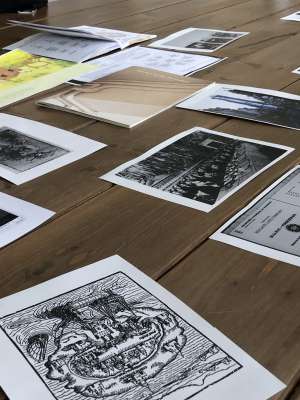
Input Party: an introduction
Input Party is a project that researches the role of personal referential image archives in the process of artists. It uses images to relate to the artist’s reference, association, and visual expression and by sharing these archives with each other, we learn in what way these images can be of value to the artistic practice and to others.
The Input Party is for and by artists and consists of multiple conversations about archival materials that artists bring themselves, with the aim of guiding each other further in their artistic process and their personal narratives surrounding archival materials.
Rachel and Elki guided the artists through the images and thus through their research by introducing personal archives in relation to their practice.
This resulted in a table full of intriguing images, with the artists around the table, all telling personal stories about private archives.
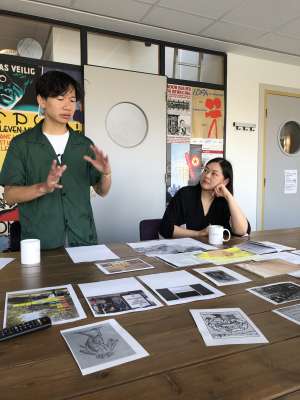
Diving deeper
The second part of the Input Party evolved around questions behind the different archival materials that were on display this afternoon. Whilst walking around the table, the artists had conversations about images and archives. It is interesting to think about the question of why we collect images and what an archive can consist of.
In making stories and inventing different narratives, the ‘image’, or even the mental image, is an interesting process.
Even in a visual artwork, it is not always about what is real anymore, it i about what is in your mind and what that means as a story; What the mental picture or image means to you and to others.
Another important notion was the question of what an archival institution is. The archive as an institute has a position of power. When something is inside an archive or archival institution, most of the time, it stays there. However, what does it mean when the 50 kilometers of stacks for archival material is actually full? What if there is no more place for more materials in the future? Does this mean that your mission is finished?
Interesting thoughts were exchanged on the archival institution, archival material and the meaning of the archive.
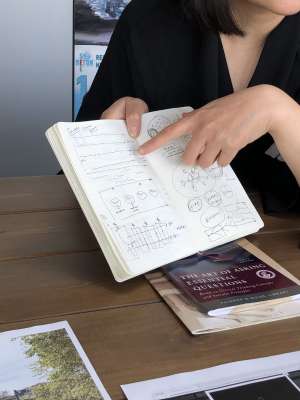
Researching archives
Under Rachel’s and Elki’s guidance, the artists came closer together and discussed their projects and research in an active, fun and thorough way.
In October, at the end of their working period, the research results will be displayed in Het Nieuwe Instituut, showing the new works from the four artists participating in Open Archief.
If you’re interested in an Input Party, you can find more information here.
Via an open call, artists Alice Wong & Simo Tse, Remco Torenbosch and Daria Kiseleva have been selected for the Open Archive 3.0 project. Open Archive focuses on the creative reuse of archival materials. The participants will use the open digital collections of Het Nieuwe Instituut, Sound and Vision and the International Institute of Social History to create a new media work in which artistic research and the creative process are central.
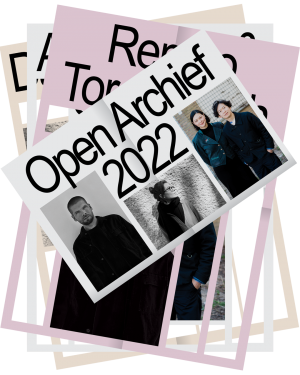
The project team and the external jury members Pieter Paul Pothoven and Femke Dekker chose the three artists because of their unique proposals, their practice and portfolios and the way in which they aim to connect with the three institutions’ collections.
By making their open digital collections available for creative reuse, the collaborating institutions hope to gain a greater insight into the user-friendliness and accessibility of their collections, and to better facilitate and support users in the development of an autonomous work of art.
The selected artists have until October to develop their research further and to create a new work of art under the supervision of experts from the three institutions.
The works they create will be exhibited at Het Nieuwe Instituut from 27 October 2022.
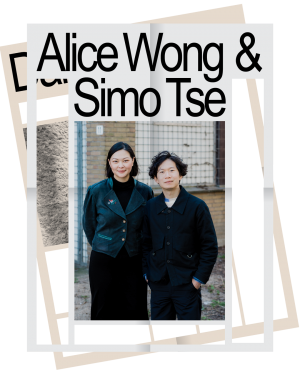
Alice Wong is a story designer and specialist lecturer on the Information Design master’s course at the Design Academy Eindhoven. She is currently working with curator Jan Boelen with support from the Hong Kong Young Design Talent Awards. Her practice focuses on converting intrinsic data into stories with the aim of making complexity more understandable.
Simo Tse is an artist and media researcher. He focuses on lens-based techniques and technology in relation to screen-based cultures and society. Since graduating from the Sandberg Institute in 2020, he has exhibited his work at UNSEEN Amsterdam, the Hong Kong International Photo Festival and the Kunsthal Charlottenborg in Copenhagen.
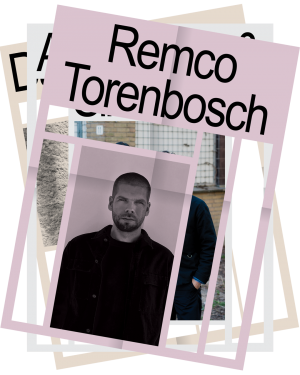
Remco Torenbosch works with the structural conditions that underwrite financial, political and social realities. By methods of collaboration, repositioning and recontextualizing Torenbosch aims to create a new discourse of knowledge production and a new way of reading these imaging. He studied at the Willem de Kooning Academy Rotterdam and the Universität der Künste Berlin. From 2018 to 2019 he was a resident at the Rijksakademie in Amsterdam. His work has been exhibited at: Kunsthaus Zurich, De Appel Amsterdam, Kunsthalle Wien, Stedelijk Museum Amsterdam, Victoria and Albert Museum London, GAMeC Bergamo, among others. In 2013 he was shortlisted for the Prix de Rome.
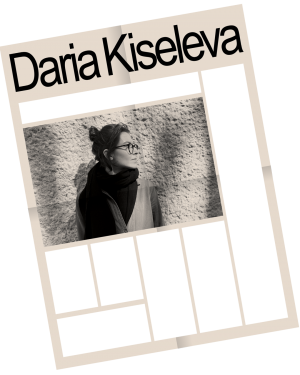
Daria Kiseleva is an artist, graphic designer and researcher, operating at the intersection of technology and visual culture. Her work revolves around the themes of digital imagery, vision and degrees of visibility, politics and the aesthetics of representation and knowledge production. In 2015-16 she was a researcher at the Jan van Eyck Academy. Since 2019 she has been part of the Shock Forest Group. Her work has been presented in the Netherlands and abroad.
RE:ACTIVATE is a project by Ja Ja Ja Nee Nee Nee contributor Femke Dekker and focusses on the reciprocal relationship between media and activism and to disclose the strategies used to reinforce and exploit each-other’s mechanisms. Part of Open Archief - a multifaceted, collaborative research project that makes archival material accessible to artists for creative reuse - RE:ACTIVATE equally investigates the relation between archives and activism and will for the period of residency involve the archives of all three participating institutes. The archives affiliated with Open Archief are Het Nieuwe Instituut, The Netherlands Institute for Sound and Vision (Sound and Vision), and the International Institute of Social History (IISH).
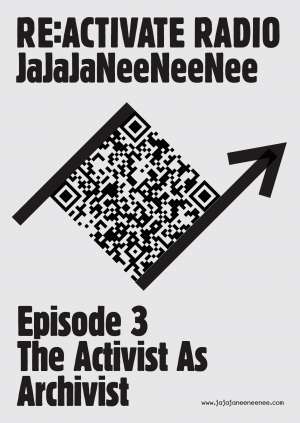
RE:ACTIVATE ‘The Activist as Archivist’ 03 is the last part in the series of broadcast’s that Femke produced for Open Archief. In this episode she has an open dialogue with Els van Poppel, Katia Truijen and René Boer, discussing the context of activist media, squatting culture and the need for counterculture in urban environments that suffer from housing shortage and gentrification.
Els van Poppel came up quite a lot during the research that Femke did in the IISG archive of the Staatsarchief. She was one of the many broadcasters of Radio de Vrije Keyser, the Amsterdam based squatters radio. It took quite some time to locate Els as, like most of her peers during those days, she operated under her first name only.
Katia Truijen and René Boer are the authors of ‘Architecture of Appropriation’, published in 2019 by Het Nieuwe Instituut and deals with squatting as a spatial practice.
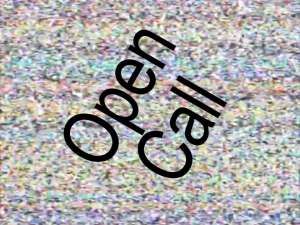
The Open Call for the 2022 edition of Open Archief is officially closed.
Over the next couple of weeks, the jury, which consists of the teams from Sound and Vision, Het Nieuwe Instituut and IISH, as well as external judges Pieter Paul Pothoven and Femke Dekker, will go over the proposals and decide on the three awarded projects.
The announcement of the new artists will be made mid March.
Keep your eyes on this website for future news and if you have any questions get in touch with us at openarchief@beeldengeluid.nl
For reference, you can still read the open call text: here
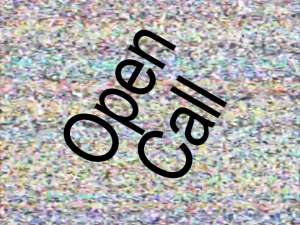
Het Nieuwe Instituut, the Netherlands Institute for Sound and Vision and the International Institute of Social History (IISH) are offering three media makers a six-month residency. During the residency, they will each create a new, autonomous media work that makes use of the open, digital collections of (one or more of) the three institutions. The selected makers will receive a grant (fee plus production budget) of €7,800. The deadline for the submission of proposals is 5pm on 25 February 2022.
Through the Open Archive project, the three institutes are opening up their collections for creative reuse. Inviting three makers for a residency in which artistic research and creative practice are central will provide fresh insights into the user-friendliness, usability and visibility of the public digital collections. In this way, the institutes hope to be able to better facilitate users and better support makers in the development of autonomous works of art.
Het Nieuwe Instituut manages one of the world’s largest architecture archives; the Sound and Vision collection contains more than a million hours of historical audio-visual materials; and the IISH collection (a library plus archival and audio-visual materials) has an emphasis on social movements. Growing portions of these collections are being made accessible under open licences and are available for creative reuse by third parties.
View the collections online here: www.openbeelden.nl, zoeken.hetnieuweinstituut.nl and www.iisg.amsterdam.
Open Archive offers three residencies for the period from March to October 2022, a timespan that allows space for research, experimentation and production. The selected makers will each receive a grant of €7,800 (€6,800 fee and €1,000 production budget). During the working period, the makers will have the opportunity to undertake physical and online research and to make a new work that will be shown in a joint exhibition at Het Nieuwe Instituut from 27 October 2022. While completing the residency, the makers will receive support from the staff of the three cultural institutions and from external experts. The makers are expected to make an active and positive contribution to the other activities associated with the project, such as the Re:Use Clinics, online essays and the design of the exhibition.
The proposal must comprise a new research topic and a (media) artwork, based on the collections of (one or more of) the three institutions (Het Nieuwe Instituut, Sound and Vision and IISH) that are in the public domain. The proposal must:
We are looking for individuals who:
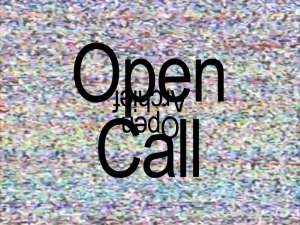
Proposals may be submitted in English or Dutch until 5pm (CET) on 25 February 2022 by email to openarchief@beeldengeluid.nl.
The proposal must consist of:
The proposal may contain links to videos or websites.
The jury, made up of representatives of the three institutes and two external artists, will select three makers from the entries. The results will be announced on 18 March 2022. No draft of the proposal may be submitted in advance. Candidates will receive confirmation of the receipt of their proposal by email no later than one week after the submission deadline.
Want to know more or have a question about the process?
Visit www.openarchief.com for updates, visual materials, press releases and blogs, or send an email to openarchief@beeldengeluid.nl.
During Open Archief 2020-21 we published a newspaper that was available for the audience during the exhibition. We wanted to give the public more context not only on the working process of the artists but also about the emotionally loaded interactions that have arised when artists are asked to come in contact with archives. We invited journalist Warda El Kaddouri to speak to the three artists, and explore these questions. Warda spoke with Michiel, Jessica and Femke and put together the three texts, that you can now read in the PDF here.
Each text comes with it’s poster, which is found on the backside of each text. The posters were carefully designed by Marius Schwarz, the graphic designer of the Open Archief project, in collaboration with each artist. Marius used images that relate back to the works created for the exhibition and included several images from the archives.
We invite you to read and reflect on the texts and reach out to us if you have any questions and thoughts.
— The Open Archief Project Team
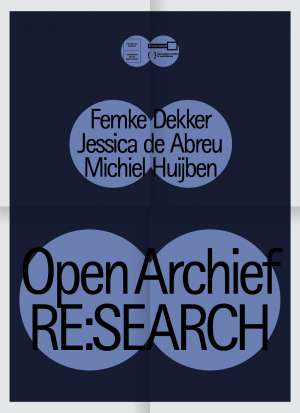
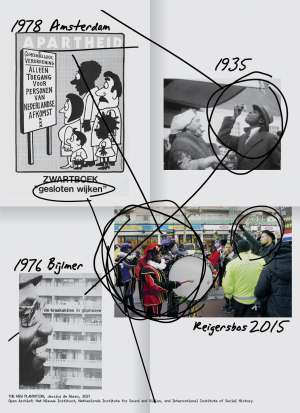
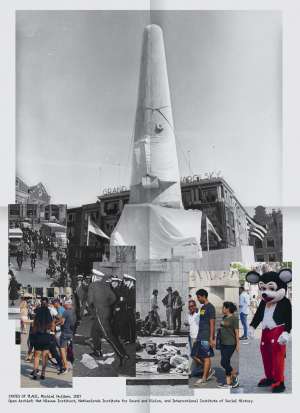
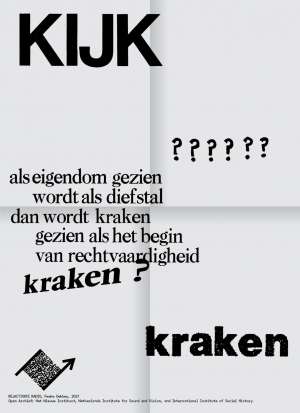
On the opening day of the exhibition of Open Archief 2020-2021, Bram van der Giessen and Eva Langerak shot a short film about the project. In the film, artists Jessica de Abreu, Michiel Huijben and Femke Dekker reflect on their archival research and their works that were on display from June to September 2021. By tackling socially relevant themes such as racism, discrimination, activism and democracy, the artists showed how important it is that heritage institutions continue to open up their collections in new ways. Open Archief will remain devoted to this mission!
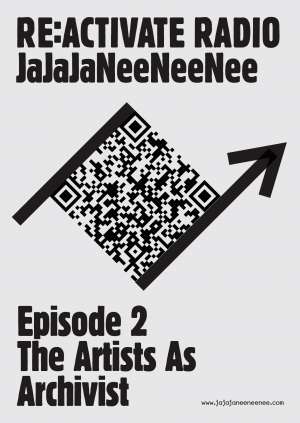
Artist / Organisation: Femke Dekker
Location of the show: Het Nieuwe Instituut
Host: Femke Dekker
Producer: Monty Mouw
Length: 90 min
Language: English
20-07-2021 at 15:00
RE:ACTIVATE is a project by Ja Ja Ja Nee Nee Nee contributor Femke Dekker and focusses on the reciprocal relationship between media and activism and discloses the strategies used to reinforce and exploit each other’s mechanisms. Part of Open Archief RE:ACTIVATE equally investigates the relation between archives and activism and will for the period of residency involve the archives of all three participating institutes. The archives affiliated with Open Archief are Het Nieuwe Instituut (HNI), The Netherlands Institute for Sound and Vision (Sound and Vision), and the International Institute of Social History (IISH).
RE:ACTIVATE ‘The Artist as Archivist’ is an open dialogue with Bebe Blanco Agterberg, Marie Ilse Bourlanges and marjolijn kok, discussing their artistic practices in the context of archival reserach and how archives are a stimuli for contemporary art practices and theoretical discourse.
Now that our symposium is behind us, you might think that Open Archief is going on summer holiday, but nothing could be further from the truth. The works of Jessica, Femke and Michiel can of course still be admired at Het Nieuwe Instituut until September 5th.
Femke will be making two more episodes of her radio series RE:ACTIVATE RADIO this summer, which can also be heard at the exhibition. Keep an eye out for the live broadcast via Ja Ja Ja Nee Nee Nee radio and our socials.
Haven’t been to the expo yet and want to know what to expect? On the opening day of the exhibition Bram van der Giessen and Eva Langerak made a film about the project and about the works of the artists. Watch it here!
Thank you for joining us at the Open Archive symposium on Tuesday 22 June.
All sessions are accessible via Zoom, starting at 10.00.
Please take a seat in the waiting room, a moderator will let you in.
If you haven’t already, please register for one or more afternoon break-out sessions via theGoogle form.
What is the difference between an artistic and an academic interpretation of archival materials? What is the relationship between artistic freedom and creative reuse? How ‘open’ should a collection be? What role does research play in making art? And does art influence the working methods of institutional archives? We will discuss these and other questions about the creative reuse of heritage materials during the Open Archive symposium.
Archives are generally seen as large, impenetrable structures. Opening them up provides greater access to information and enables us to reinterpret history, in turn paving the way for undermining power structures. How can institutions become more accessible? And what can they learn from the creative reuse of their collections? With its theme of Research and Copyright, this symposium will explore artistic practices that involve using archival materials and making them available.
On the 22nd of June, live from the International Institute of Social History, we explore the themes: research, copyright and reuse in collaboration with partners and speakers: Pictoright, THE ARCHIVE HOTEL, Mariana Lanari (Amsterdam School of Heritage, Memory and Material Culture) and Stefan Dickers (Bishopsgate Institute)
date: 22 june 2021 | time: 10:00 - 16:00 | on: ZOOM | language: English | free registration here
The programme is free of charge and can be followed as a whole, or as individual sessions. You have the opportunity to register for the whole day or for the morning or afternoon sessions.
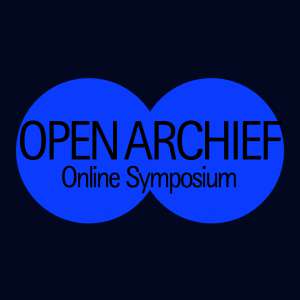
Morning Session
10:00-12:30
Keynote
Stefan Dickers (Bishopsgate Institute) Stef is the Special Collections and Archives Manager at Bishopsgate Institute and has been responsible for the development of the Institute’s collections on the history of London, protest and activism, and LGBTQ+ Britain. He qualified as an archivist in 2001 and started at Bishopsgate in 2005.
Previous to this, Stefan worked in the archives of the London School of Economics and Senate House Library. He will talk at extraordinary length about the collections whenever asked and regularly entertains groups of students, groups and family/local history societies on the wonders they can find in the Special Collections and Archives at the Institute.
Panel discussion
THE ARCHIVE HOTEL (Ash Bowland) in conversation with Johannes Elebaut, Alina Cristea and Shervin Sheikh Rezaei.
Researching archival collections is an arduous task, and there’s often a dissonance between material, description, interpretation and access. When an artist looks for images and other information in an academic archive, feeling overwhelmed and misunderstood is just around the corner. The more instinctually way of searching doesn’t match with the more structured institutional construction and most of the material is contextualized in a historical perception. How can artistic research play a role for re-contextualizing historical material and how can institutions facilitate more fluid working methods? Could it be a long lasting affair, where archives would be a household of multiple perspectives on the historical material or is it a mismatch?
THE ARCHIVE HOTEL is the child of the investigative art practice of Ash Bowland, and the urge for collective participation. It resulted in an autonomous platform for artistic research dedicated to the artist’s ARCHIVE, embracing HOMAGE & CONFLICT. In its rooms the hotel fosters different critical and aesthetical research methods that paves the road to an artistic identity.
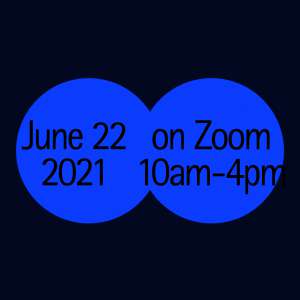
Afternoon session
13:30-16:00
Interview
Mariana Lanari in conversation with Inger Schaap.
During this interview artist and academic Mariana Lanari will question practices of archival reuse for artistic purposes. How can we deal with handling and reusing archival material that at times was created under a state of duress? Is that even possible? Are there examples of archival reuse which furthers the conversation? How do we keep critical in reusing this material? With legs in both worlds (academic and artistic) she would share personal experiences and future possibilities regarding reuse of archival materials.
Mariana Lanari is a PhD candidate at the Amsterdam School of Heritage, Memory and Material Culture at University of Amsterdam. She co-founded Archival Consciousness with Remco van Bladel. She is part of the band Rainbowpeel 475.13. She is on the advisory board of De Appel Mobile Archive and of DAAP – Digital Archive of Artist Publishing (UK). She is a member of ARIAS, Amsterdam Research Institute of the Arts and Sciences, and Making Things Public at the lectoraat of the Gerrit Rietveld Academy. Her work has been shown at the Stedelijk Museum Amsterdam, Van Zijl Langhout Gallery, Arti Amititae, W139, Van Abbemuseum, Transmission Gallery (Glasgow), Casa do Povo (São Paulo), among others.
Consultation Hour
With Pictoright (Hanneke Holthuis + Arlette Bekink), IISG (Thijs van Leeuwen), Het Nieuwe Instituut (Iris de Jong) and Beeld en Geluid (Dennis Hekker)
The inevitable subject in reusing archival material: copyright. Whether it’s to protect your own work or when you’re reusing somebody else’s material, the matter of copyright is always present. Even with the existing rules and regulations, we all interpret this subject differently. Knowledge is power, so for this afternoon we provide you with breakout sessions with the three institutions of the Open Archief project and our financial sponsor: Pictoright. You have the opportunity to go in conversation with institutions and ask them questions regarding the possibility of specific archive material. More interested in the new Appropriation Art guidelines of Pictoright? Sign up for their room!
Links to
This symposium is made possible with the financial support of Pictoright Fonds.
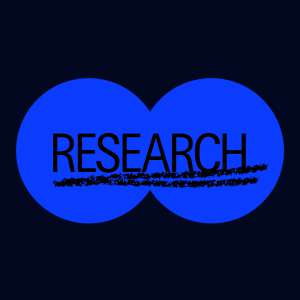
Registration
You can register for one or more components:
Register for the entire symposium via Eventbrite
Register for one or more individual break-out sessions via the Google Form
Let us know if you have a specific question!
Enter your name and address here if you would like to have the publication Open Archive RE:SEARCH delivered to your door for free.
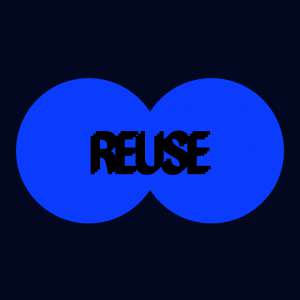
Together with the Netherlands Institute for Sound and Vision and the International Institute of Social History, Het Nieuwe Instituut is organising the second edition of Open Archief, a programme in which three makers search for new stories in open, digital heritage collections, with the aim of making a new media work. From 3 June, Jessica de Abreu, Femke Dekker and Michiel Huijben will present their works, which share the theme of ‘activism and archives’.
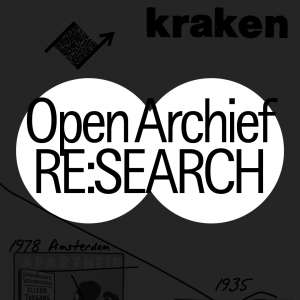
The New Plantation by Jessica de Abreu shows how contemporary society still reflects colonial history. The installation explores how old, vivid memories of slavery and colonialism, and the new reality of institutional racism, evoke emotions that can trigger post-colonial depression: a mental state that stems from the realisation that nothing can be changed about the colonial past. What happens to the psyche when it attempts to grapple with the complexities of history?
Femke Dekker’s project, RE: ACTIVATE RADIO, focuses on the relationship between media and activism, revealing the strategies they use to reinforce and exploit each other’s mechanisms. Activists have always used the mass media strategically as a platform to broadcast their ideas. For RE: ACTIVATE, Dekker has used audio materials from the archive of the Vrije Keyser (‘Free Emperor’) radio station that demonstrate that radio not only connects, but can also be a call to action.
Michiel Huijben searched the archives for images that reveal the role of public spaces within society. By looking for places instead of events, a complex picture emerges of what activities the public realm allows. His artwork for Open Archief States of Place combines images from the three archives with materials found on the internet, and considers them as a whole in order to sketch a more complete picture of public space while simultaneously questioning the authority of ‘the archive’.
Visit the website of Het Nieuwe Instituut for opening hours and practical information.
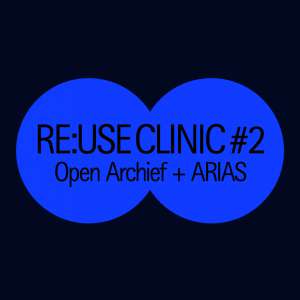
On Monday April 26th 2021, Open Archief and ARIAS collaboratively organise Re:Use Clinic #2 | Uncertain Archives ethical dilemmas, a public event for heritage professionals, artists and other interested parties, in the creative reuse of heritage collections.
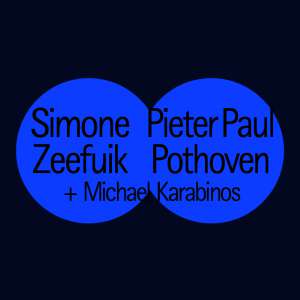
The central issue of this clinic revolves around the uncertainty of the stories that archives tell. By listening to the matters and ethical questions that navigate the practices of Simone Zeefuik, the writer, cultural programmer, and director of the course Blacker Blackness at Sandberg Instituut, and Pieter Paul Pothoven the artist-archivist, this clinic contemplates with its participants the ethical concerns arising when cultural heritage material is (re)used. How can archival engagement offer different and critical perspectives on historical narratives, identity and representation? And what role do artistic tools such as fiction and imagination play in this respect?
Archival theorist Michael Karabinos is hosting the event and will moderate conversations between the speakers and the audience after the presentations.
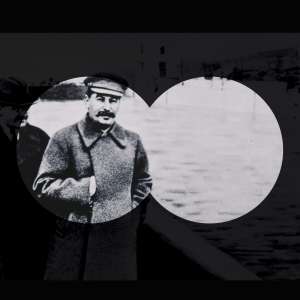
The Open Archief Re:Use clinics are a series of public events for heritage professionals and interested parties in the creative reuse of heritage collections. The clinics address matters essential for reusing collections and for the process of makers. Our first clinic was about copyrights. For ARIAS the collaboration with IISG, HNI and Beeld & Geluid for Open Archief builds further onto their earlier Artists & Archivist series and their current thematic line Estuaries: Ways of Knowing.
Open Archief 2021 Re:Use Clinic #2 | Uncertain Archives ethical dilemmas
26-4-21, 14-16pm, via Zoom. Link will follow a few days before the event takes place.
Speakers: Simone Zeefuik and Pieter Paul Pothoven
Moderator: Michael Karabinos
Language: English
Register via this link.
On 25 February 2021, the first Re:Use Clinic took place with around sixty enthusiastic visitors. These Open Archive ‘Clinics’ are intended to bring heritage institutions and makers together to talk about creative reuse, with a focus on a specific theme. The subject of this first Clinic was ‘Copyrights’. The speakers were Arlette Bekink from Pictoright and Open GLAM advocate Douglas McCarthy. The moderator, Brigitte Jansen, kept everyone on track. The Clinic focused primarily on makers and their rights. What kind of licenses can makers arrange for a work? What happens to a work of art when it is posted on social media in today’s ‘copy culture’? Can heritage institutions play an active role in the copyright and licensing debate while ensuring that collections remain open source? And how do heritage institutions relate to their users?
Following a short introduction, Arlette Bekink kicked off the Clinic with a presentation on the role of Pictoright in the world of copyright. The organisation represents makers and their rights. In her talk, Arlette focused mainly on makers’ so-called collective rights, in which Pictoright mediates, arranging a fee for makers that would be difficult to arrange individually.
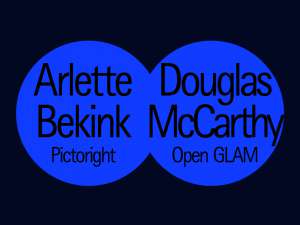
This is also where heritage institutions come into the picture. From around 2010, when they began large-scale digitisation of their collections, making them available online, there was no provision to compensate the various makers behind all these books, pictures, magazines and newspapers. This was new territory in the copyright field. Pictoright filled this gap by drawing up so-called collective contracts: by paying a fair fee, institutions can display their collections online without fear of individual lawsuits, and Pictoright pays the makers for the online presentation. The good news is that collective rights will soon have a legal basis in Dutch law. Pictoright has also recently drawn up a set of ‘Appropriation Art guidelines’ for fair conditions for the reuse of an existing work in a new work.
As an advocate of Open GLAM (Galleries, Libraries, Archives and Museums), Douglas McCarthy wanted first and foremost to stress that the age of digital cultural heritage has arrived. In his talk, in contrast to the copyrights relating to more recent works, he focused on works in the public domain. He believes that as many of these works as possible should be accessible online, something that is at the heart of Open GLAM’s advocacy. He also provided insights into the opportunities and challenges for the open GLAM world: providing open access to collections is not as easy as it sounds. Various internal and external factors make opening up a collection a complex affair that requires dedication from an institution.
Douglas showed how the status quo is maintained by limited access to the public domain even though there are opportunities for making a collection available online. This is exactly what the Open Archives project wants to show. Hopefully the project will encourage heritage institutions to move beyond outdated perspectives.
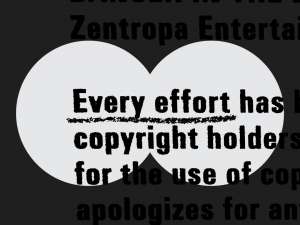
Copyright remains a difficult subject, with many thorny issues. Pictoright presents itself as an organisation that stands for fair rights for makers, and is constantly looking for solutions to mediate fairly between the maker and the user. Meanwhile, the Open GLAM movement advocates a progressive vision of the open public domain. Enough for makers to get their teeth into!
On the morning of 5 March, an Input Party took place in a digital space in which the artists were circular avatars and the project leaders were silent participants. The Input Party was initiated by Rachel Sellem and Elki Boerdam and arose from their need to talk about institutional and private archives from a non-academic perspective. It was a party for and by artists, having a conversation about archival materials they brought along themselves, with the aim of guiding each other further in their artistic process and their personal narratives surrounding archival materials. A good party doesn’t happen all by itself, so Rachel and Elki facilitated an introduction in which the artists shared archival images that represent their work. These initial images spurred personal stories about decluttering and private archives.
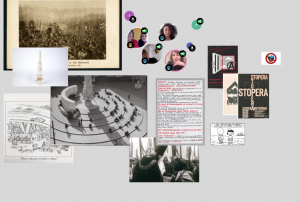
In the second part, the group delved deeper into the archival materials they are investigating as part of Open Archive. It soon became apparent that they all had issues with the complexity of the various collections and the digital portal’s search options. Because the three artists work intuitively, searching within a system structured around dates, names and inventory numbers sometimes poses a challenge. Whereas artists attempt to make their process and choices visible, the thought processes and choices of the archivists who catalogued the archives often remain invisible. This leads to a stylistic rupture between the institutional archives and the artists’ working process. It is precisely through projects such as Open Archive, in which institutions open their collections up to research and creative reuse, and through initiatives such as the Input Party, that working with heritage materials comes alive.
Under Rachel’s and Elki’s guidance, the artists came closer together, because although they come from different disciplines, ‘activism’ is a common thread in their research. In June, at the end of their working period, they all plan to exhibit a work that provides new insights into and takes a critical look at the collections policies of the three institutions’ archives.
If you’re interested in an Input Party, you can find more information here.
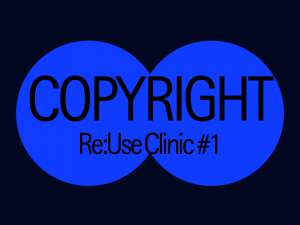
Open Archief is organizing a series of public events for heritage professionals and interested parties in the creative reuse of heritage collections. These Re:Use clinics address matters essential for reusing collections and for the process of makers.
The kick-off will be a clinic about ‘Copyright’. Copyrighted heritage is after all often not suited for creative reuse. What exactly do we mean by ‘open collections’, and how can you reuse their materials? How do you find out how “open” your found archival item is? What is the importance of copyright protection and the importance of freely accessible material? And what are your rights as an artist?
Moderator Brigitte Jansen will host talks by Arlette Bekink from Pictoright and Douglas McCarthy on behalf of Open GLAM’S. There will be plenty of time for questions.
Open Archief 2021 Re:Use Clinic #1: Copyright
25-2-21, 10-12am, via Zoom. Link will follow a few days before the event takes place.
Speakers: Arlette Bekink and Douglas McCarthy
Moderator: Brigitte Jansen
Language: English
Register via this link.

Speakers
Douglas McCarthy is a prominent voice in Open GLAM, the global movement promoting culturally appropriate open access to digital heritage. Douglas leads an international survey of open access policy and practice in the GLAM sector with Dr Andrea Wallace of the University of Exeter. He researches and writes extensively about open access, and is the founder and co-editor of the Medium publication Open GLAM, which presents global and multilingual perspectives on open access to cultural heritage, written by leading voices in the field. You’ll find him on Twitter as @CultureDoug.
Arlette Bekink is Manager collective rights at Pictoright. For visual creators, it is not possible (or hardly possible) to enforce these rights individually. Arlette is responsible for the collection and the distribution of collective remunerations. Part of her job is to take care of the interests of visual creators when negotiating on contracts for online archives, but she tries to do this while taking into account the interests of cultural heritage institutions too. She can tell more about Extended Collective Licensing in Europe and about a new guideline Pictoright has developed concerning Appropriation Art.
For more information about Pictoright visit the website.
Moderator
Brigitte Jansen is graphic designer and project manager in the cultural field. As a designer, Brigitte is interested in combining forms from the physical and digital world. Her design, both analog and digital, always has a relation to the user and user-experience.
Brigitte has worked for different cultural institutions as a project leader, art mediator or curator. She led diverse research projects in finding innovative ways to present digital heritage. She favors creative reuse as a way to explore new possibilities to talk about heritage and works with young artists to create new stories and contexts.
Jessica de Abreu, Michiel Huijben and Femke Dekker are the three selected artists for Open Archief 2020/21, which starts in December 2020. Open Archief’s focus this year is on a strong multidisciplinary vision for the creative reuse of archive material. Open Archief is an initiative of Het Nieuwe Instituut, The Netherlands Institute for Sound and Vision and the International Institute for Social History.
During a working period of five months, the selected artists will each be given the opportunity to realise a new, autonomous work of art based on the open archives of the three institutes. The project team and the external jury members Pieter Paul Pothoven and Donna Verheijden came to a unanimous agreement with the combination of these three media artists and their submitted proposals.
Out of more than 190 that were received through the open call, the proposals of Jessica, Michiel and Femke were the most striking, with original research questions and strong portfolios. Their contemporary and critical vision of the archive, in combination with current social developments, formed the connecting components of this selection. The jury was decisive in offering these three media artists residencies within the three institutions for five months to create new autonomous works of art based on the open access and public archives of the institutes.
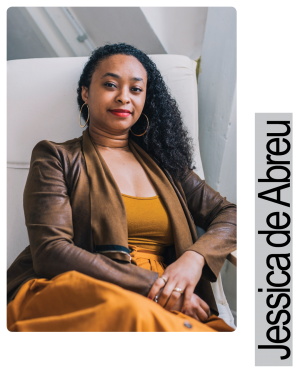
Jessica de Abreu is an anthropologist and co-founder of The Black Archives, one of the first historical archives in the Netherlands to focus on the history of Black Dutch people and beyond. Her passionate commitment to the African diaspora has led to research into upward social mobility in New York, Amsterdam and London.
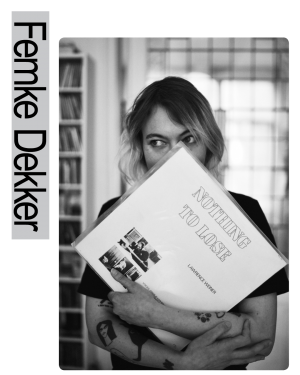
Femke Dekker is a curator and cultural programmer. She is part of the editorial team of online art radio Ja Ja Ja Nee Nee Nee and works as a (guest) teacher at the Sandberg Institute and the Royal Academy of Art in The Hague. She is also associated with various cultural initiatives, such as the annual Lente Kabinet festival in Amsterdam, and institutions such as the Rijksakademie.
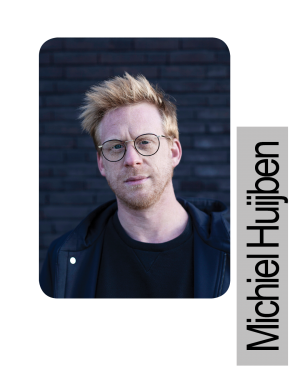
Michiel Huijben is a visual artist with a background in architectural theory. In recent years, he has exhibited at Kunstinstituut Melly, De Appel, Extra City Kunsthal and Kunsthalle Basel. He is the founder of the publishing project Flat i.
In the new year, the media makers will further develop their research and explore the archives under the guidance of experts from the three institutes.
The project will conclude with an exhibition in Het Nieuwe Instituut and an online symposium on the creative reuse of archival material. The symposium is made possible in part by the financial support of Pictoright.
If you have any questions, please contact us at openarchief@beeldengeluid.nl and keep an eye on this site for future announcements and news.
The Open Call for the 2020/21 edition of Open Archief is officially closed with over 190 applications received.
Over the next couple of weeks, the jury, which consists of the teams from Sound and Vision, Het Nieuwe Instituut and IISH, as well as external judges Pieter Paul Pothoven and Donna Verheijden, will go over the proposals and decide on the three awarded projects.
The announcement of the new artists will be made in early December.
Keep your eyes on this website for future news and if you have any questions get in touch with us at openarchief@beeldengeluid.nl
For reference, you can still read the open call text HERE
After a moment of silence we’re happy to announce the new edition of Open Archief 2020/21. This year, Het Nieuwe Instituut and The Netherlands Institute for Sound and Vision are working together with the International Institute for Social History to stimulate the creative reuse of digital heritage. In the fall of 2020, Open Archief will invite three artists through an open call to comment, research and reflect upon the different themes of copyright.
For this year’s edition of Open Archief we will focus on a specific theme, RE:SEARCH, which is meant to act as an arc over the project. It will be used as inspiration and can be explored from different angles. RE:SEARCH is meant to evoke a sense of playfulness, that flows from archival research - which is both responsive and reactive but also explorational and directed.
In order to increase the spread of knowledge and insights from Open Archief, we decided to facilitate an international symposium, to be held in 2021. To make this possible, we have successfully completed a funding application with Pictoright, the funds of which will be directly used to realize the symposium. This symposium will focus on three topics, namely Re:Use, Re:Search and Copyright. It is a multidisciplinary event that aims to bring together professionals from various fields (image makers, artists and professionals in the field of heritage and copyrights) and to share knowledge and insights on the topic of artistic reuse of heritage. The aim is also to present this knowledge to a wider audience and to have it critically assessed by these professionals, interested parties and institutions.
We are excited to be joined by the International Institute for Social History (IISH) who will be the third partner and help shape the new and future editions of Open Archief. The IISH is joining us to offer their expertise with regard to their collections as well as assisting with curatorial and research guidance for the new residents. But also to listen to and learn from new users!
Keep an eye out on the website! In the upcoming months we will update you with more information about the open call and the rest of the programme.
Contact us at openarchief@beeldengeluid.nl
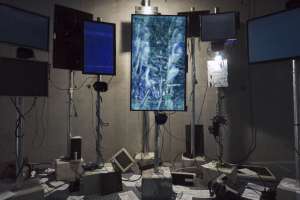
Wat bewaren we en voor wie? Welke betekenis geven we aan ons erfgoed en hoe verandert die door de tijd heen? Met andere woorden: wie heeft er toegang tot het verleden en welke verhalen worden er met het collectiemateriaal verteld? En mag dat materiaal zomaar in een hele nieuwe context worden gebruikt en daarmee een hele nieuwe betekenis krijgen? Dit zijn enkele van de vragen die in het project Open Archief aan de orde kwamen. Een terugblik op dit project is nu te downloaden voor dekstop en mobiel.
Afgelopen maanden zijn Guy königstein, Oana Clitan en Donna Verheijden de collecties ingedoken van Het Nieuwe Instituut en Beeld en Geluid. Er is veel geleerd over het omgaan met copyright, open collecties, zoeken binnen een archief en het maken van nieuwe werken met archiefmateriaal. Uit deze periode zijn drie bijzondere werken ontstaan. Kan je niet wachten om dit te zien? Vanaf 14 november zijn deze werken te bewonderen bij Het Nieuwe Instituut! De How Do You Do zal op 28 november plaatsvinden. Hier kunnen makers en erfgoedinstellingen met elkaar in gesprek gaan over creatief hergebruik van erfgoedcollecties, dit programma start om 15:30 tot 18:00. Aansluitend is er een Thursday Night Live! programma waarin de makers hun werk presenteren en worden geinterviewd.
Het Nieuwe Instituut en het Nederlands Instituut voor Beeld en Geluid hebben in het kader van het project Open Archief kunstenaar/designer Oana Clitan, kunstenaar Guy Königstein en filmmaker Donna Verheijden geselecteerd om uit de open toegankelijke, digitale collecties van beide instituten nieuw, autonoom mediawerk te ontwikkelen. Tijdens Dutch Design Week presenteren zij hun werk voor het eerst in het openbaar.
In de tentoonstelling van Open Archief in het Van Abbemuseum presenteren de makers de volgende werken:
Oana Clitan
Oana Clitan neemt in haar project een voorschot op de manier waarop informatie in de toekomst gepresenteerd zou kunnen worden. Ze maakt daarvoor gebruik van de retoriek van nieuwsuitzendingen van vroeger en nu. De installatie gaat uit van een scenario waarin het door het verval van elektronische apparatuur tijdelijk niet langer mogelijk is om nieuw beeld te produceren. In deze wereld is beperkt beschikbaar archiefmateriaal het enige medium waarmee ergens nog visueel uitdrukking aan kan worden gegeven. De overheid zet die schaarse behouden gebleven beelden in om haar burgers te informeren over de laatste ontwikkelingen in de crisis.
Guy Königstein
Stille vergaderruimtes, lege trappen, stoffige planken, lange gangen en gesloten deuren bieden als bevroren ruimtes uit vervlogen tijden een podium aan ongenode bezoekers. Guy Königstein neemt in zijn project de gedaante aan van zo’n onverwachte gast, onschadelijke indringer of verlegen geest, die op zoek naar verbinding en manieren om erbij te horen door het doolhof van het archief dwaalt. Hij trekt laden en bestandsmappen open en stelt het verleden de vraag: “Geliefd verleden, wat is er nodig om je uit balans te brengen?”
Donna Verheijden
The Stolen Archive is een speculatieve thriller. De video-installatie legt verbindingen tussen de verhalen en gebeurtenissen die verborgen zijn in de archieven van Het Nieuwe Instituut en Beeld en Geluid. Beide collecties worden benaderd als een depot van beelden, audiofragmenten en objecten die worden ingezet als figuranten, props en sets.
Het Nieuwe Instituut beheert een van de grootste architectuurcollecties ter wereld en het archief van Beeld en Geluid bevat meer dan een miljoen uur aan historisch audiovisueel materiaal. Een groeiend deel van deze collecties wordt onder open licenties beschikbaar gesteld, waarmee ze onder meer inzetbaar zijn voor creatief hergebruik. Met Open Archief delen de instituten de mogelijkheden van digitale erfgoedcollecties met een nieuwe generatie makers. In het project staat het experiment met het online beschikbaar stellen en artistiek hergebruiken van digitaal erfgoed centraal, met ruimte voor uiteenlopende creatieve, technische en auteursrechtelijke interpretaties. Zulk hergebruik van digitale collecties in musea en archieven levert nieuwe verhalen in mogelijk verrassende, vernieuwende vormen op.
Aan de hand van een open call werden de drie makers voor Open Archief geselecteerd en uitgenodigd om in zeven maanden ieder een op zichzelf staand werk te ontwikkelen. Na afloop van deze eerste presentatie van de uitkomsten tijdens Dutch Design Week zijn ze van 14 november 2019 tot en met 26 januari 2020 ook te zien bij Het Nieuwe Instituut.
Meer informatie en tickets
Dutch Design Week
19 tot en met 27 oktober 2019
Open Archief is te bezoeken met een Dutch Design Week ticket.
Van Abbemuseum, Werksalon.
Bilderdijklaan 10, 5611 NH Eindhoven
Openingstijden 11:00 – 18:00
Open Archief wordt mogelijk gemaakt dankzij een bijdrage van het Mondriaanfonds.
Inmiddels is het project Open Archief al in volle gang en zijn de makers druk bezig met hun exposities tijdens de Dutch Design Week en in Het Nieuwe Instituut. De afgelopen maanden zijn kunstenaar Guy Königstein, filmmaker Donna Verheijden en kunstenaar/designer Oana Clitan op onderzoek gegaan in de open, digitale collecties van beide instituten. Komend najaar laten ze hun werken op verschillende plekken en locaties zien. Ook gaan makers, professionals en beide instituten tijdens verschillende nevenactiviteiten dieper in op open collecties en de betekenis daarvan. Onder andere tijdens:
De Media Night is een gratis feest in Beeld en Geluid in Hilversum waar creatieve makers zich laten inspireren. Guy Königstein, Donna Verheijden en Oana Clitan presenteren daar hun work-in-progress.
Tijdens de komende Dutch Design Week in Eindhoven is van de drie makers alvast een preview te zien in het Van Abbemuseum.
Hoe kan je open collecties hergebruiken? Wat verstaan we eigenlijk precies onder open collecties? Experts van Open Nederland en Beeld en Geluid vertellen in deze clinic in het Nieuwe Instituut alles over auteursrechten, Creative Commons en gratis (her)gebruik van archiefmateriaal.
Op 28 november 2019 organiseren Het Nieuwe Instituut en Beeld en Geluid een meet-up waar we als makers en erfgoedinstellingen met elkaar in gesprek gaan over creatief hergebruik van erfgoedcollecties ter afsluiting van het project Open Archief.
Het programma start om 15:30 en duurt tot 18:00. Aansluitend is er een Thursday Night Live! programma waarin de makers hun werk presenteren en worden geïnterviewd.
Hergebruik van digitale collecties van musea en archieven levert nieuwe verhalen in mogelijk verrassende, vernieuwende vormen op. Toch vinden makers en archieven elkaar nog slecht. Met het project Open Archief werken Het Nieuwe Instituut en het Nederlands Instituut voor Beeld en Geluid samen om creatief hergebruik van digitale erfgoedcollecties te stimuleren. Niet alleen onze collecties maar ook die van tal van andere instituten kan je online terug vinden.
Wil je zelf aan de slag met al dit moois? Maar weet je niet waar je moet beginnen? Open Archief heeft een overzicht gemaakt van online Nederlandse (open) erfgoed collecties die je zelf kunt bekijken, deze kan je downloaden via de link hieronder. Onderdelen van deze collecties zijn publiek domein of beschikbaar onder een open licentie. Dit materiaal kan dus vrij gebruikt worden om nieuwe werken mee te maken.
CLICK HERE TO DOWNLOAD THE ATTACHED .PDF
CLICK HERE TO OPEN THE ATTACHED .PDF
Samen met Open Nederland organiseert Beeld en Geluid een clinic waar we je laten zien wat voor moois er beschikbaar is en vooral ook wat je er mee kan en mag. We leren je de basics van open licenties. Hoe mag je open materiaal gebruiken en hoe publiceer je je nieuwe werk? Daarnaast laten we een aantal mooie werken zien waarin archiefmateriaal gebruikt is.
Op 10 oktober is er een ReUse Clinic bij Beeld en Geluid in Hilversum.
Op 7 november is er een ReUse Clinic bij Het Nieuwe Instituut in Rotterdam.
De vijfde Open Archief sessie in Het Nieuwe Instituut was op veel vlakken een spannende aangelegenheid. Niet alleen presenteerden de drie makers op 5 september 2019 hun eerste ideeën en ontwerpen voor de tentoonstelling, ook ging de nieuwe website online, gemaakt door Marius Schwarz en François Girard-Meunier.
Het middagprogramma werd door Dirk Vis geopend. Vis studeerde Beeld & Taal aan de Rietveld Academie en Design aan het Sandberg Instituut. Hij publiceerde in kleine oplage Bestseller (2009) en het e-book Reality-essay (2017). Hij doceert ook kunsttheorie aan verschillende kunstacademies, is schrijver, maakt fictie, columns, scenario’s en essays en hij is redacteur van het literaire tijdschrift De Gids.
Tijdens de vijfde sessie van Open Archief sprak hij onder andere over de manier waarop de mens data verzamelt en bijhoudt, welke stappen daarin de afgelopen jaren zijn genomen en vooral ook welke digitale voetstappen we als mens achterlaten. Hij vergeleek een wolk die “als kleine dauwdruppels sporen achterlaat” met iCloud, de dienst die ervoor zorgt dat er allerlei data, zoals contacten, agenda’s en documenten, opgeslagen worden op een server (namelijk, de cloud). Alle bestanden worden automatisch gesynchroniseerd met andere apparaten. Als er iets op eén apparaat wordt veranderd, worden alle andere automatisch bijgewerkt. Allerlei soorten informatie worden dus bewaard, net als bij een archief wat volgens Vis een plek is waar men opslaat.
Net als bij iCloud, waar informatie eindeloos wordt opgeslagen en waar men, door die informatie, als het ware voor eeuwig doorleeft, wordt deze informatie haast onsterfelijk. De vraag is of een archief en daarmee de maker of verzamelaar van dat archief ook onsterfelijk wordt. In Vis’ optiek fungeert het archief als een soort sleutel voor het hiernamaals.
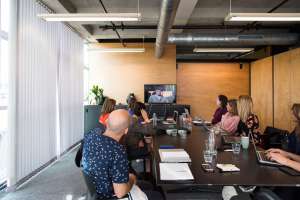
Zoals eerder gezegd was deze vijfde sessie spannend om meerdere redenen: de makers presenteerden hun eerste concepten en ontwerpen voor de tentoonstelling ‘Open Archief’ tijdens de Dutch Design Week (19-27 oktober) en voor de expositie in Het Nieuwe Instituut (vanaf 14 november).
Beeldmaker Donna Verheijden heeft in haar proces gebruikt gemaakt van de collectie van beide instituten. Haar werk The Stolen Archive gaat dieper in op de vraag wat je precies aan materiaal moet stelen voordat het geheel ophoudt met bestaan.
Guy Köningstein heeft veelvuldig onderzoek gedaan in de collectie van Het Nieuwe Instituut. Hij heeft allerlei foto’s uit het archief verzameld en deze achter elkaar in een video gezet. Hier overheen is zijn eigen stem gemonteerd. De combinatie van archieffoto’s en de verhalen van Guy geven de bestaande afbeeldingen een hele andere betekenis. Hij maakt als het ware personages van de ruimtes die afgebeeld zijn. Van de interventies die hij doet, legt Guy een eigen archief aan.
Oana Clitan speelt met het idee van beelden produceren en archiefmateriaal aanleggen. In haar utopische (of distopsiche?) wereld is het niet meer mogelijk om nieuw beeldmateriaal te maken. Wat voor invloed heeft dit op de mens? En op de wereld? Wat gebeurt er als ‘oud’ archiefmateriaal wordt gebruikt om nieuws te vertellen?
Voor de uiteindelijke presentaties is nog wat geduld nodig. De makers gaan de komende tijd hard aan de slag met de invulling en inrichting van de tentoonstellingen.
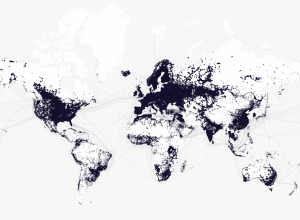
Richard Vijgen (1982) was als mentor aanwezig bij de vierde sessie. Richard is een ontwerper en kunstenaar. Zijn Design Studio for Contemporary Information Culture doet onderzoek naar nieuwe strategieën om grote verhalen in big data te vinden. Richard maakt interactieve datavisualisaties en installaties variërend van microscopisch tot architecturaal in schaal. Ook is Richard docent Information Design and Information Spaces aan ArtEZ hogeschool voor de kunsten. Richard lichtte eerst enkele van zijn projecten toe, waaronder White Spots en The Deleted City.
De White Spots app is een tool die mensen bewust maakt van de elektromagnetische wolk waar wij allen in leven en vertelt over de toenemende dichtheid van de digitale wereld. Met de White Spots wordt er verwezen naar de schaarse plekken op aarde zonder verbinding met internet. De kaart maakt deze White Spots zichtbaar en nodigt gebruikers uit om er echt of virtueel naartoe te reizen en die ervaring met anderen te delen.
The Deleted City is de digitale versie van Pompeï. Oftewel: een interactieve opgraving waarin je kunt dwalen door een episode van de recente online geschiedenis. Geocities gaf de eerste internetgebruikers een ruimte om hun eigen homepage te bouwen. Voordat Geocities zou sluiten in 2009 is een digitale backup gemaakt.
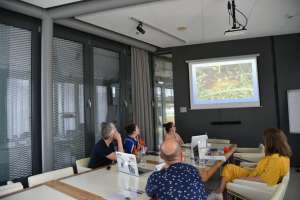
Richard ging vanuit zijn eigen perspectief in gesprek met de drie makers. Zo is Donna geïntrigeerd door de gebouwen nabij de Nederlandse kust. Een interessante strategie is hier gaande, maar het blijft een mooi mysterie. Zou een non-lineaire thriller een nieuw thema kunnen zijn? Het werk van Oana bevindt zich in de toekomst, zo’n 100 jaar van nu. Maar wat scheidt de toekomst van het nu, wat is het fundamentele verschil? Guy vraagt zich af wat het betekent om een archief te hebben, wat de criteria zijn om iets in dit archief te plaatsen. Volgens Richard begeeft Guy zich persoonlijk in het archief, dit is een interessant en verfrissend perspectief aangezien het structureren van een archief over het algemeen vrij formeel is en juist onpersoonlijk.
Op 25 juni was het tijd voor de tweede excursie, ditmaal begaven we ons in het Collectiegebouw van EYE. Mark Paul Meyer (senior curator EYE) vertelde ons meer over het Artist in Residence programma en Irene Heen (manager digitale presentatie EYE) over Jan Bot. Jan bot is een computerprogramma dat dag en nacht experimentele films creëert door het matchen van materiaal uit de vroege jaren 20 met hedendaagse trends en gebeurtenissen.
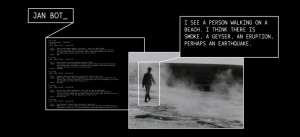
Copyright stond centraal tijdens deze excursie. Iedereen die iets creëert krijgt namelijk copyright. Maarten Zeinstra (Open Nederland) verklaarde de geheimen van copyright. Zo is Copyright gebonden aan de sterfdatum van de maker, niet aan het werk. Copyright kan af en toe ook een vreemd fenomeen zijn. Dit is zeker het geval bij de selfie gemaakt door een aap. De fotograaf heeft de situatie gevormd, maar de aap is degene die de foto nam. Daarom is er besloten dat er bij dit werk geen sprake is van copyright.
Twee dagen later, namelijk op 27 juni 2019 vond de derde sessie van Open Archief plaats onder leiding van externe expert Dirk Vis (1981). Hij is schrijver en maakt fictie, columns, scenario’s en essays. Ook is Vis docent kunsttheorie. Voor verfilmingen van zijn teksten is hij tevens werkzaam als art director. Hij is altijd bezig met het beeld van zijn teksten. Daarnaast is Vis redacteur van literair tijdschrift De Gids en oprichter van De Internet Gids.
De Gids is het oudste literaire en algemeen culturele tijdschrift van Nederland. Literatuur, filosofie, sociologie, beeldende kunst, politiek, wetenschap en geschiedenis komen allemaal aan bod in De Gids. Ook een leuk weetje is dat De Gids ebooks beschikbaar stelt waar je zelf het aankoopbedrag kan bepalen. Deze ebooks vallen overal tussen, het is geen fictie, maar ook geen non fictie, het is te lang voor in het blad maar het is te kort voor een boek. Zo vinden deze verhalen hun weg naar De Gids. Dirk Vis heeft samen met zijn vrouw meegedaan aan een reality televisieprogramma. In zijn ebook onderzoekt hij de onzekere scheidslijn tussen fictie en werkelijkheid. Dirk kijkt zelf dus helemaal geen tv, maar ineens bevindt hij zich te midden van al deze gekkigheid zonder privacy. Kan het worden van een personage in je eigen leven ook een glimp van verlossing bevatten? Je leest het in Het Reality Essay van Dirk Vis. Op dit moment is Dirk Vis bezig met zijn eigen archiefonderzoek. Beelden die terugkomen in dit onderzoek vinden hun oorsprong in de erotische kunst. Zo komt ook Janella Monáe ter sprake met het nummer PYNK, waarin ze een ode brengt aan het vrouwelijk geslachtsorgaan.
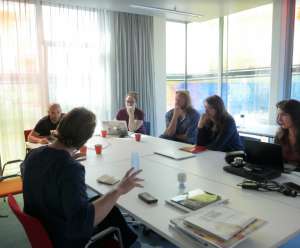
Vervolgens is het tijd voor Dirk Vis om onze makers te leiden in de zoektocht genaamd open archief. Iedere maker vindt zijn eigen inspiratie in de collecties van Beeld en Geluid en Het Nieuwe instituut, heeft zijn of haar eigen verhaal te vertellen en bovenal een eigen sterke mening. Hoe maak je die belangrijke keuzes in je proces, hoe weet je wat de juiste keuze is en bovenal hoe kan je je eigen ideeën interpreteren? Zo is Donna tijdens haar onderzoek gestrand op een oude oorlogsbunker die nu gebruikt wordt als filmarchief van Beeld en Geluid. Tijd lijkt stil te staan in de bunker. Het mysterie van deze bunker trekt zeker de aandacht. Wat is hier gebeurd? Kan een geheim zich schuilhouden in deze bunker? Soms zit het mysterie hem juist in de duidelijkheid. Des te duidelijker, hoe mysterieuzer iets wordt. Oana zit nog middenin het mysterie dat technologie heet. Hoe gaan wij om met technologie? Hoe kijken we naar technologie? Wat is de representatie van technologie in het nieuws? Zijn we bang voor technologie of wordt het gerepresenteerd als onze verlossing? Kunst is een manier om dingen ondersteboven te keren. Guy onderzoekt hoe hij het verleden zichzelf toe kan eigenen. Hoe kan je mensen in je eigen geconstrueerde verleden uitnodigen? Deze minimalistische aanpak zou volgens Dirk Vis aantonen hoe er gefilterd wordt, dit zou vervolgens kunnen leiden tot een nieuw archief met een meer gelimiteerd doel. In dit proces zou Guy een eigen alter ego nodig hebben. Guy archiveert op deze wijze zijn eigen alter ego.
In onze digitale samenleving is het voortbouwen op creatieve producties van anderen gewoongoed. Vooral in de internet- en remixcultuur wordt veel materiaal continue hergebruikt. Deze manieren van creatieve creaties zijn tegenwoordig gewoon, maar strikt genomen zijn ze niet toegestaan zonder toestemming van de rechthebbende vanwege de auteurswet.
Elke eigen intellectuele creatie van de maker van een literair of artistiek werkt krijgt automatisch een monopolie op deze creatie. Als maker mag je andere uitsluiten een kopie van je werk te maken, je werk openbaar te maken en het werk aan te passen.
Culturele erfgoedinstellingen zien het steeds vaker als hun missie om niet alleen het erfgoed te beheren en toegankelijk te maken, maar er ook voor te zorgen dat anderen met dit erfgoed aan de slag kunnen gaan. Hiermee krijgen zij een faciliterende rol in een samenleving waarbij de maatschappelijke en culturele discussie en uitingen steeds vaker bestaan uit remixes van werken van anderen.
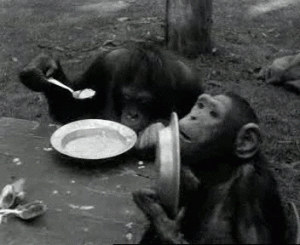
Beeld en Geluid is al enkele jaren actief bezig om hun erfgoed nieuw leven te geven door gifjes te maken van hun open collecties. Onze cultuur erfgoed vormt dan het ruwe materiaal waarop voortgebouwd wordt en nieuwe waarde krijgt door de inspiratie die zij vormen. Beeld en Geluid heeft meer dan 350 gifjes geüpload op Giphy, die al meer dan 350 miljoen keer zijn bekeken. Dit is een publiek die dit materiaal gedurende hun eerste exploitatie waarschijnlijk nooit heeft gehad.
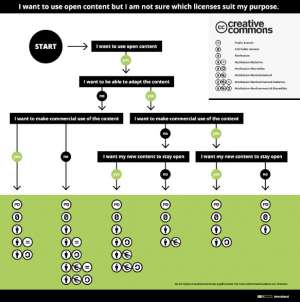
Dit is mogelijk door actief collecties open te stellen. Door op zoek te gaan naar publiek domein materiaal – materiaal waar het auteursrecht verlopen is – stimuleren zij hergebruik van erfgoed. Ook wanneer het auteursrecht nog niet verlopen is proberen erfgoedinstellingen actief op zoek te gaan naar toestemming voor algemeen hergebruik. Vaak bieden de instellingen tegenwoordig bij inname van nieuwe acquisities om het materiaal onder een Creative Commons-licentie beschikbaar te stellen.
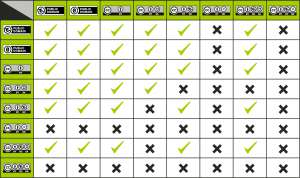
Met een Creative Commons-licentie geeft de rechthebbende aan iedereen ter wereld toestemming om het werk te verspreiden en vaak om het voort te bouwen op het werk. Hierdoor ontstaat een actieve hergebruik cultuur met erfgoed dat we de traditioneel niet goed gebruiken. Het erfgoed van onze ouders. Het erfgoed van onze over-overgrootouders is vaak niet meer auteursrechtelijk beschermd.
Hierdoor verzorgen de erfgoedinstellingen een belangrijke rol in de digitale samenleving. Zorgen voor een levendige uitwisseling van ideeën, culturele creaties en creatieve producties om zo verder te bouwen op de vele schouders die ons erfgoed dragen.
Wat hebben de opnames uit 1986 van een jonge LL Cool J die nog bij zijn oma woont en de opnames van de nasmeulende brand van het Paleis voor Volksvlijt in 1929 met elkaar gemeen? Naast het visuele inkijkje die beide opnames geven in een verloren stuk cultuurgeschiedenis, is het correcte antwoord natuurlijk: beide opnames zullen tot het einde der tijden gearchiveerd blijven in het Nederlands Instituut voor Beeld en Geluid!
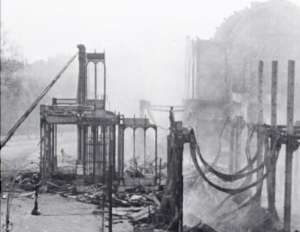
Beeld en Geluid beheert naast het archief van de Nederlandse Publieke Omroep, waar onder andere de eerder genoemde LL Cool J te bewonderen is in Big Fun in the Big Town (1986, VPRO, Bram van Splunteren) een prachtige rijkdom aan schatten die open hergebruikt kunnen worden! Deze rijkdom wordt al sinds 2009 op een open manier gedeeld via www.openbeelden.nl en er worden elk jaar weer meer schatten uit het verleden aan toegevoegd.
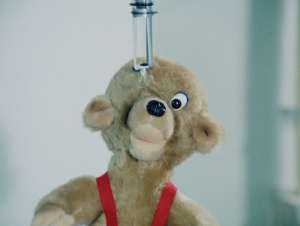
De grootste collectie op Open Beelden bestaat uit de opnames van het Polygoon journaal en behelst meer dan 950 uur aan materiaal. De Polygoon journaals in deze open collectie beslaan een groot aantal decenia, te weten van 1921 tot en met 1987. Of je nou benieuwd bent naar de inventieve vindingen op het gebied van huishoudelijke apparatuur uit de jaren 1950’ of als je erg graag wil zien hoe het testen van speelgoed er in 1979 aan toe ging, het is hier allemaal slechts een muisklik vandaan!
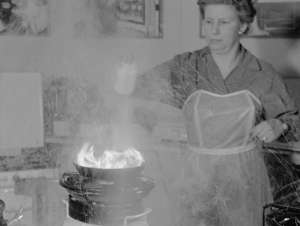
Kattenshows zeg je? Geen probleem.
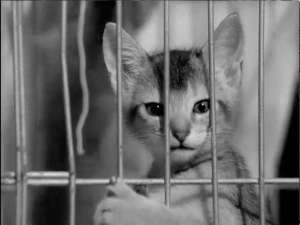
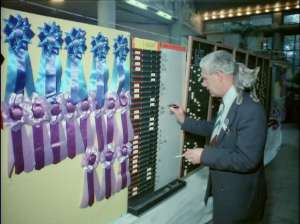
Een Brigitte Bardot imitatiewedstrijd uit 1960? Tuurlijk, als jij dat graag wil zien.
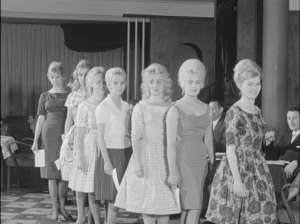
Of er inderdaad in 1952 een vrouwelijke leeuwentemmer in opleiding was? En dat we daar dan ook gewoon de opname nog van hebben? Uiteraard, zie hier!
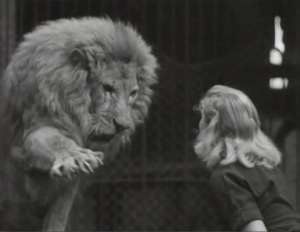
De leeuwentemmer brengt ons bij een andere prachtige open collectie van Beeld en Geluid, namelijk de meer dan 2.300 natuurfilms van de Stichting Natuurbeelden! Deze collectie, gefilmd tussen 1999 en 2017, laat het schoon van de Nederlandse natuur en haar inwoners zien. Van zoetwaterkreeften tot een heuse Lynx met een konijn in zijn bek, het is allemaal te hergebruiken onder een open Creative Commons licentie!
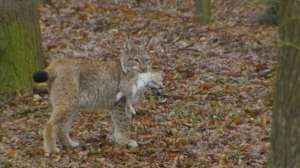
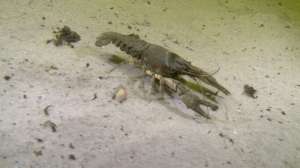
De tweede meeting van Open Archief vond plaats op dinsdag 21 mei 2019. Julia van Mourik, directeur van The One Minutes Foundation en stichting Lost & Found, was aanwezig als externe expert. The One Minutes produceert en distribueert video’s van één minuut vanuit een artistiek uitgangspunt. Hierdoor geven zij mensen een stem en maken ze nieuwe verbindingen; een internationaal platform om te creëren en te verbinden. Kernwaarden zijn artisticiteit, authenticiteit, democratie en diversiteit. Er worden series samengesteld met het werk van andere mensen. Hoe dit nou precies werkt? Een kunstenaar maakt een open call waarin zij mensen uitnodigen om hun film van één minuut in te sturen. Vervolgens beweegt de kunstenaar zich als curator door deze werken en maakt hier een selectie uit – zij kunnen daarbij ook werken selecteren uit de collectie van The One Minutes (15.000 videos). De series bestaan uiteindelijk uit een aantal One Minutes van verschillende makers, die bij elkaar ongeveer een half uur duren. De series onderzoeken onze perceptie van en onze verhouding met bewegend beeld en zijn een eclectisch scala van proposities over hoe we denken in het medium van bewegend beeld. The One Minutes Collectie is onderdeel van de collectie van Beeld en Geluid.
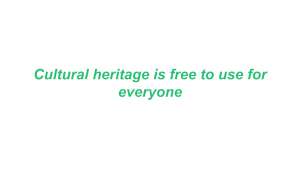
Samen met de drie makers, externe expert Julia van Mourik en het Open Archief team werden wij door Maarten Brinkerink vanuit Beeld en Geluid (Expert publieksparticipatie en Innovatieve Toegang) meegenomen in de wereld van copyright. Dit werd gedaan aan de hand van enkele stellingen, namelijk: “Just like privacy, copyright doesn’t exist online”, “Cultural heritage is free to use for everyone” en “Everyone is allowed to copy my work”. Bij het creëren van nieuwe werken aan de hand van bestaande werken komt namelijk meer kijken dan je in eerste instantie zou denken. Hoe zit het met de rechten van het bestaande werk en de maker? Maar ook hoe wil jij als nieuwe maker het nieuwe werk open stellen? De drie makers kregen hier de ruimte om hun eigen opvattingen te ontwikkelen omtrent copyright en het openstellen van hun eigen werk. Een opvatting die hieruit voortkwam was als volgt: “Cultural heritage is memory that we pass on to someone else. It’s not about the rights, it’s about the bureaucracy of keeping the rights of the few.”
Volksherstel Amsterdam, door Polygoon-Profilti [producent] / Nederlands Instituut voor Beeld en Geluid [beheerder], is gelicenseerd onder Public Domain Mark.
Vervolgens werden de projecten van de drie makers grondig door de externe expert Julia van Mourik besproken. Oana is erg geïntegreerd door beelden met een dystopische sfeer. Ze is bezig met het opzetten van een inventaris door te zoeken naar beelden van machines en fabrieken. Guy houdt zich bezig met vragen zoals hoe hij zich kan positioneren ten opzichte van deze culturele instituten als een buitenlander en kunstenaar en wat het betekent om werk eigen te maken. Het viel Guy op dat veel beelden een bepaalde lading bevatten terwijl hij het niet geladen verleden zou willen gebruiken. In zijn onderzoek neemt hij de rol aan van een curator. Donna begeeft zich middenin het proces van het creeren van een film over een film die niet gemaakt mag worden. Een interessante link die gemaakt werd was die met The McGuffin van Hitchcock. Zo kan er in een film bijvoorbeeld een koffer zijn die erg belangrijk is, maar niemand weet wat er nou precies in die koffer zit. Dus iedereen vraagt zich af: “What is inside of the suitcase?”
Wat gebeurt er als drie makers een nieuw autonoom mediawerk creëren uit twee ‘open’ archiefcollecties? Nederlands Instituut voor Beeld en Geluid en Het Nieuwe Instituut werken voor het project ‘Open Archief’ samen om hergebruik van digitale collecties te stimuleren. Toen ik, Clara Stille-Haardt, werd gevraagd om vanuit mijn functie als archivaris bij Het Nieuwe Instituut mee te werken aan dit project werd ik meteen enthousiast maar tegelijkertijd ook sceptisch. Één vraag kwam gelijk in mij op: hoe stel je de omvangrijke collectie van Het Nieuwe Instituut met 1,4 miljoen tekeningen, 300.000 foto’s, 70.000 boeken en duizenden maquettes beschikbaar voor creatief hergebruik?
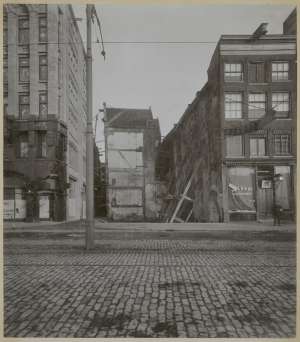
De eerste stap was het bepalen van de speelruimte. Hoe ‘open’ is de collectie van Het Nieuwe Instituut eigenlijk en hoe wordt dit beschikbaar gesteld aan de makers? Samen met mijn collega Petra van der Ree hebben wij in eerste instantie kritisch gekeken naar de digitale collectie en de rechten die hieraan verbonden zijn. Het Nieuwe Instituut mag het materiaal in de collectie beschikbaar stellen aan derden, maar het niet hergebruiken of aanpassen tenzij het materiaal behoort tot het publieke domein. Dat is het geval wanneer het auteursrecht vervallen is, omdat de maker van het werk langer dan zeventig jaar dood is. Dit betekent dat de archieven uit de tweede helft van de 19e eeuw en het begin van de 20e eeuw in aanmerking komen voor creatief hergebruik. Denk hierbij aan de architecten P.J.H. Cuypers (o.a. Centraal Station Amsterdam, Kasteel de Haar en het Rijksmuseum), de Amsterdamse School architecten (o.a. Michel de Klerk) en enkele architecten van het Nieuw Bouwen (o.a. Johannes Duiker).
De speelruimte werd met deze selectie duidelijk afgebakend maar zorgde ook voor nieuwe vraagstukken met betrekking tot ‘open data’. Hoe ga je bijvoorbeeld om met foto’s en correspondentie binnen deze ‘open’ dossiers? Hierin bevindt zich voornamelijk werk van andere makers zoals de fotograaf of een auteur van een brief. Het archief van H.P. Berlage bijvoorbeeld. Dit archief is inmiddels publiek domein maar er bevindt zich een brief in zijn archief die door de architect H.Th. Wijdeveld is geschreven. Het archief van laatstgenoemde auteur/architect behoort nog niet tot het publiek domein. Kortom, om vragen met betrekking tot auteursrechten en ‘open data’ in de toekomst goed te kunnen beantwoorden, is bewustwording nodig.
Tijdens de eerste kennismakingsbijeenkomst, met de drie makers en het projectteam, in Het Nieuwe Instituut, werd mij gevraagd om een introductie te geven op de collectie in het Rijksarchief van Nederlandse Architectuur en Stedenbouw. Ik heb gekozen om de essentie van het archief te laten zien, de originele stukken en de intrinsieke samenhang van de verschillende onderdelen van het archief. Juist de originele drager laat de artistieke kwaliteit zien en ook het gebruik van verschillende papiersoorten, tekentechnieken en de schaal hiervan is zo fascinerend aan onze collectie.

Ook de uiteenlopende documenten die worden verzameld van het ontwerpproces maakt de collectie uniek. Naast museale tekeningen, foto’s en maquettes bevatten de archieven ook schetsboeken, stalenboeken, productcatalogi, werktekeningen, correspondentie, affiches en objecten. Twee voorbeelden hiervan zijn de schetsboeken waar de architect P.J.C. Klaarhamer zijn eerste ideeën voor een stoelencollectie tekende en de ingekleurde presentatietekeningen van J.F. Staal voor een kantoorgebouw aan de Damrak. In deze dossiers zijn alle schaalniveaus vertegenwoordigd. De bouwtekeningen maar ook ontwerpen voor een deurklink, het meubilair, stoffen, behang en zelfs de tuin!
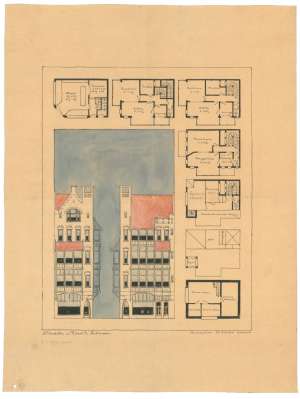
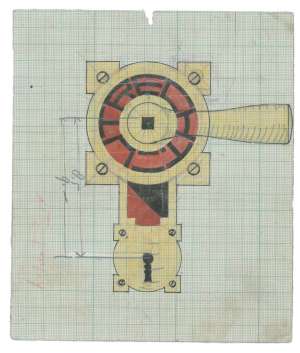
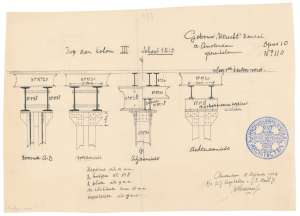
Met deze rijkdom aan ‘open’ archief voor handen ben ik heel benieuwd naar het onderzoek van de makers en hoe zij omgaan met enerzijds de grenzen van de ‘open data’ en anderzijds de verbinding tussen de beeldtaal uit het verleden en het creëren van een nieuw mediawerk.
Voor meer informatie over Het Nieuwe Instituut en het project ‘Open Archief’ kijk op:
www.zoeken.hetnieuweinstituut.nl/nl/
www.collectie.hetnieuweinstituut.nl/sites/default/files/overzicht_archieven_open_data1.pdf
Auteur: Clara Stille-Haardt (archivaris/conservator, Het Nieuwe Instituut)
Open Archief is van start! Al tweemaal hebben de kunstenaars elkaar mogen ontmoeten, namelijk tijdens de Kick-off op 8 april en de eerste sessie op 25 april.
Maandag 8 april was het tijd voor de Kick-off van Open Archief bij Het Nieuwe Instituut. De drie makers, bestaande uit: Oana Clitan, Donna Verheijden en Guy Königstein, ontmoeten elkaar en het team van Open Archief. Vluchtig hebben zij ook kennis gemaakt met de collecties van Beeld en Geluid en Het Nieuwe Instituut. Tijdens de werkperiode zullen de makers in het diepe duiken en aan de slag gaan met de open delen van de collecties. Wat is de definitie van open nou precies? Open data en content kan vrij gebruikt, aangepast of gedeeld worden door iedereen en voor elk doel (www.opendefinition.org). Geleidelijk in het proces zullen de makers ontdekken wat het precies betekent om met open collecties te werken. De werkperiode heeft de vorm van een talentontwikkelingstraject en biedt ruimte aan onderzoek, experiment en productie. De makers krijgen tijdens de werkperiode ondersteuning van medewerkers van de instituten en externe partners. De externe partners bestaan uit Elki Boerdam, Julia van Mourik, Dirk Vis en Richard Vijgen.
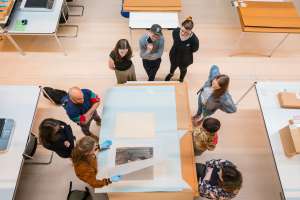
Clara Stille-Haardt gaf een kijkje in de collectie van Het Nieuwe Instituut. Speciaal voor het project Open Archief is er uitgezocht welke architecten langer dan 70 jaar geleden zijn overleden, wiens werk zich in de collectie van Het Nieuwe Instituut begeven. Het materiaal van deze architecten is allemaal gedigitaliseerd en opengesteld voor hergebruik. Klik hier om meer te lezen over de open collectie van Het Nieuwe Instituut.
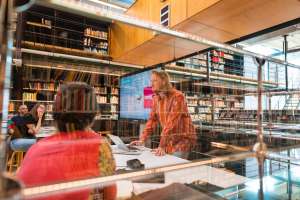
De open collectie van Beeld en Geluid werd verder toegelicht door Harry van Biessum. Vervolgens vertelde hij ook meer over de collectie op openbeelden.nl. Hoe er in deze collecties gezocht kan worden wist Harry tot in detail te vertellen. Hij liet zien welke subcollecties er zijn binnen openbeelden, waaronder de NSB-collectie en de collectie natuurbeelden. Binnen de audiocollectie liet Harry onder andere de collectie van veldopnames uit Nederland, geluiden die zijn opgenomen voor hoorspelen, en opnames van Radio Oranje uit de Tweede Wereldoorlog horen.
Oana Clitan, Donna Verheijden en Guy Königstein verdiepen zich ondertussen verder in alle mogelijkheden die beide open collecties bieden en laten zich hierdoor inspireren.

Op 25 april kwamen de makers, het team van Open Archief en de externe expert Elki Boerdam bijeen. Elki Boerdam is sinds 2011 actief als image researcher. In haar werk onderzoekt, analyseert en herschikt ze bestaande beelden. Zo onderzoekt ze de betekenis van het beeld in nieuwe context. Elki werkt als freelance beeldredacteur voor de Volkskrant en werkt momenteel o.a. aan het project de Input Party; een archief en onderzoeksproject over hoe associatieve beeldarchieven onderdeel worden van het werkproces van makers. In 2013 deed ze mee aan het project Open Media Art, een voorloper van Open Archief waarin mediamakers een nieuwe kunstwerk maakten met de open collectie van Beeld en Geluid. Elki heeft hiervoor enorm veel beelden uit de open collectie van Beeld en Geluid gezien, maar ook bewerkt. Ze experimenteerde met de beelden en zocht naar beeldrijm. Passen beelden goed bij elkaar? Dan plaatste Elki deze beelden naast elkaar. Vervolgens creëerde ze een tegenstelling door expliciet oude beelden uit het archief naast nieuwe beelden van YouTube te plaatsen. Dit resulteerde in een video-installatie met twee schermen met de naam What images have you seen so far (zie afbeelding hierboven).
Tijdens de sessie werd uitgebreid gesproken over zoeken in de open collecties van Het Nieuwe Instituut en het Nederlands Instituut voor Beeld en Geluid. Ook vertelde de makers hoe ze van start zijn gegaan aan hun project en wat voor materiaal ze zo al tot nu toe gevonden hebben in de archieven. Er werd ook gekeken naar het hergebruik van beeldmateriaal van anderen, hier werd uitgebreid over gesproken. Zo is een beeld voor Elki zoals verf voor een schilder, het materiaal waarmee je een kunstwerk maakt.
Foto’s: Marwan Magroun